Existing Buildings
Anspach Hall
Opened 1966
Cost: $2,410,000
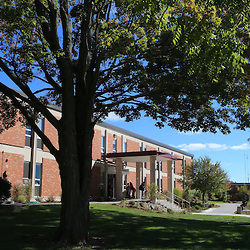 Anspach Hall, along with Brooks Hall and Pearce Hall, was constructed as part of a three-building academic complex on the south side of campus. Architect Roger Allen submitted plans for a new social sciences building by 1965, when
the University requested and received funding for the project from the state legislature. The building would be constructed on the east side of Washington, west of the recently completed Brooks Hall and north of Washington Court.
The Omega Construction Company of Grand Rapids was awarded the $2,410,000 bid in February 1965 and construction was underway by late spring. The cornerstone of the building contains a time capsule with front pages from contemporary
newspapers as well as an essay from then-president William Boyd entitled, "Dissent: An American Tradition."
Anspach Hall, along with Brooks Hall and Pearce Hall, was constructed as part of a three-building academic complex on the south side of campus. Architect Roger Allen submitted plans for a new social sciences building by 1965, when
the University requested and received funding for the project from the state legislature. The building would be constructed on the east side of Washington, west of the recently completed Brooks Hall and north of Washington Court.
The Omega Construction Company of Grand Rapids was awarded the $2,410,000 bid in February 1965 and construction was underway by late spring. The cornerstone of the building contains a time capsule with front pages from contemporary
newspapers as well as an essay from then-president William Boyd entitled, "Dissent: An American Tradition."
Plans for the 100,000 square foot building called for a central, three-story classroom section with a capacity of 1,960 students arranged in classrooms of various sizes. Two auditorium-style lecture halls were located on the east end of the building. The two-story west wing contained office space for the many departments moving into the building, as well as a mail room, faculty lounge, and department conference rooms. The larger three-building complex also included a 300-space parking lot to serve the new academic buildings, which was to be built between Washington Ave. and the railroad tracks.
An unusual conflict arose during construction of the building between the head of the History Department and the architects. Richard Wysong disagreed with the architects and Norvall Bovee, the University controller, over the placement of bookshelves. Bovee and Allen placed the bookshelves behind the door when it was open. Wysong argued that a historian's books needed to be accessible, rather than hidden behind the opened door. In the end a compromise was reached. In general, construction proceeded rapidly and on pace. Indeed, crews working on Anspach avoided a construction workers' strike that affected many other projects around campus at the time, since the union involved in the strike was different than that working on Anspach.
Anspach Hall officially opened in September 1966 and was dedicated on April 8, 1967. When it opened, it housed the departments of English, History, Political Science, Sociology, and Journalism. It also housed the offices of Information Services, the Dean of the School of Arts and Sciences, the campus newspaper, and the yearbook. It was the original home of WCMU-TV, the campus's educational television facilities, as well. Although Anspach Hall was as large as any building on campus, swelling enrollment led University officials to begin planning for a second social sciences building before construction on Anspach was complete. Moore Hall was the result of this decision.
The Board of Trustees approved a $14 million renovation to Anspach Hall in December 2011. The following summer, crews began work on the first floor of Anspach Hall and the west side entrance. The improvements represented the first formal renovation to the building since its construction in 1966. Clark Construction Company of Lansing was awarded the contract. A two-story addition that contained offices and a meeting room was added to the existing structure. The roof of the office wing was also renovated and a student lounge was built. The company replaced ceiling tiles and floors and updated the fire alarm systems. Crews also installed new lighting fixtures and updated restrooms so that they were in compliance with Americans with Disabilities Act standards.
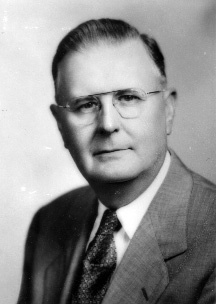 Anspach Hall was named in honor of Charles Anspach, former president of the University. Anspach received his BA and MA from Ashland College in Ohio and his doctoral degree from the University of Michigan. He taught at Eastern Michigan
before returning to Ashland as president. He came to Central in 1939 and served as president until 1959. In addition to his service to Central, he was a delegate to the 1962 state constitutional convention, served as a director
of a bank in Mt. Pleasant, and after retiring from Central, served on the governing board of Eastern Michigan University. He also enjoyed speaking to high school commencements and various organizations. He and his wife Mary had
two daughters.
Anspach Hall was named in honor of Charles Anspach, former president of the University. Anspach received his BA and MA from Ashland College in Ohio and his doctoral degree from the University of Michigan. He taught at Eastern Michigan
before returning to Ashland as president. He came to Central in 1939 and served as president until 1959. In addition to his service to Central, he was a delegate to the 1962 state constitutional convention, served as a director
of a bank in Mt. Pleasant, and after retiring from Central, served on the governing board of Eastern Michigan University. He also enjoyed speaking to high school commencements and various organizations. He and his wife Mary had
two daughters.
Art Gallery
Opened: 1961
Cost: $130,000
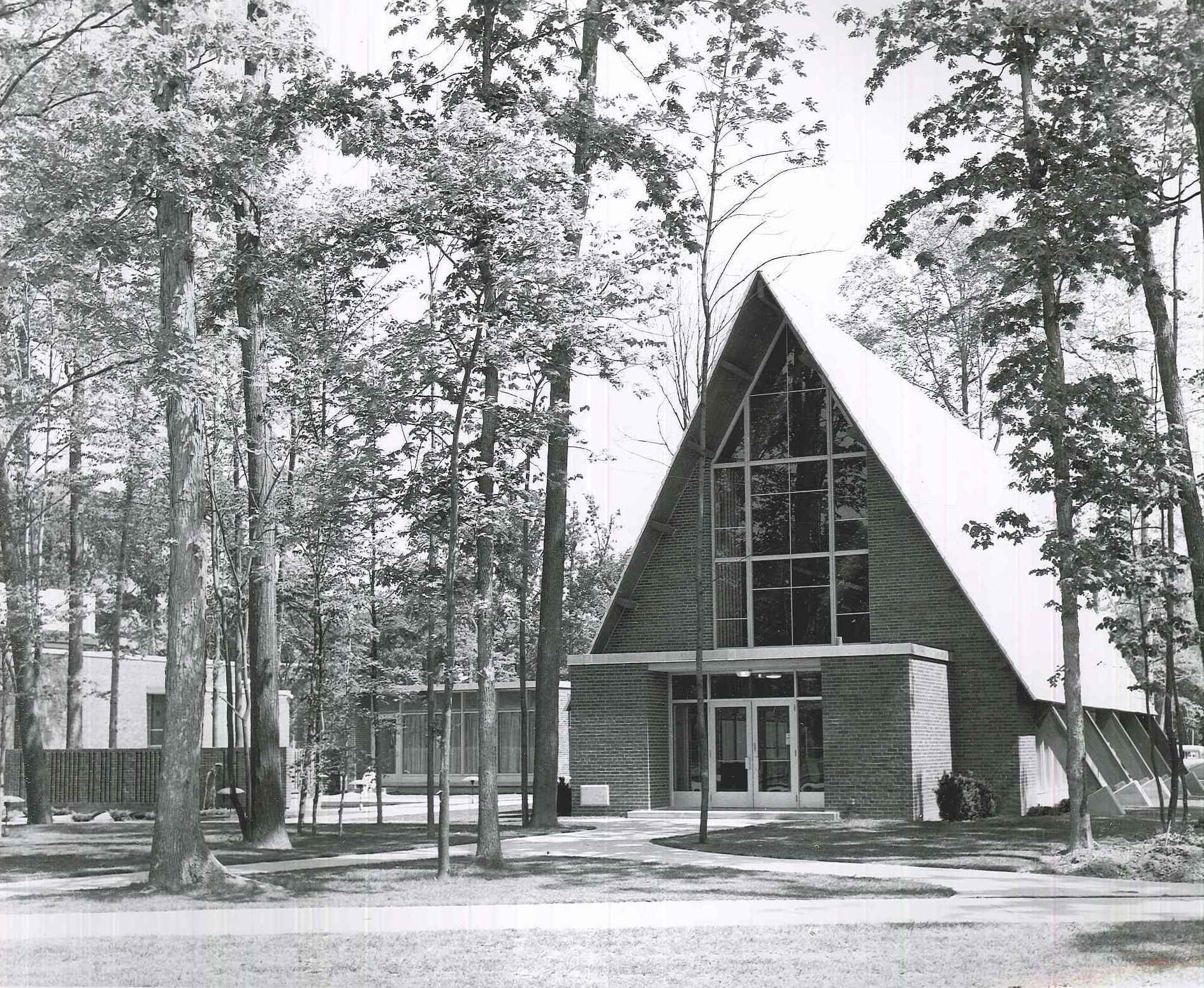 The building that now houses the University Art Gallery was constructed for a completely different purpose. The structure, located on the corner of Preston and Franklin Streets, cost $130,000, and was built in 1961 based on a design by architect Roger
Allen of Grand Rapids. Allen's distinctive A-frame design lent a unique look to the building, which inspired an architecture-themed edition of the CMU yearbook in 1962. The building was financed by donations from friends and alumni of the school
and through the University reserve fund.
The building that now houses the University Art Gallery was constructed for a completely different purpose. The structure, located on the corner of Preston and Franklin Streets, cost $130,000, and was built in 1961 based on a design by architect Roger
Allen of Grand Rapids. Allen's distinctive A-frame design lent a unique look to the building, which inspired an architecture-themed edition of the CMU yearbook in 1962. The building was financed by donations from friends and alumni of the school
and through the University reserve fund.
When opened in 1961, the building served as the campus Religious Center. The building's name resulted from input by a group of members from each campus religious organization, who insisted that the building be more universal in name and function than a simple "chapel." In its first year of existence, 5,390 people and organizations used the Religious Center for meetings, including the Chippewa Christian Fellowship, the Wesley Foundation, Gamma Delta, and the Interfaith Council. That first year also saw eleven weddings, a baptism, and four separate ministers' conferences.
Although the Religious Center remained a space used by religious students and faculty, nonreligious meetings and events held in the building became increasingly common during the 1970s and 1980s. More and more, the building was seen as part of the University Center rather than the chapel-like structure devoted exclusively to religious activity. In November 1983, then-President Harold Abel made an informal decision to rename the Religious Center the UC Annex. Although religious meetings and worship ceremonies continued to be held there, the UC Annex served a wider role for the University.
In 1989, University administrators proposed another transition for the building. With the opening of the IET building and the ensuing departmental restructuring, the Department of Art was relocated to Wightman Hall as part of the Wightman Renovation Project, which also included plans to convert the UC Annex to an art gallery. Although the Annex was not originally designed with this purpose in mind, Wightman Hall simply did not have enough room to house the gallery along with the Department of Art itself, and repurposing the UC Annex building seemed to be an adequate solution.
Reaction to the decision surprised University administrators. Local religious leaders argued that the campus needed a religious center for the spiritual health of its students. Others noted that since the original building was constructed with donated
funds, its original purpose should remain. Still others argued that while there were only nine religious organizations on campus when the Center was built, by the late 1980s, there were over twenty, and CMU should be adding space for religious
worship and discussion, not taking it away. A petition was created that collected over 3,000 signatures asking the administration to change the UC Annex back to its original purpose as the Religious Center. Administrators refused to change their
position, although they did install meditation rooms in both Pearce Hall and the University Center.
While some on campus fought against changing the UC Annex into an art gallery, the repurposing of the UC Annex represented an important evolution in the history the University Art Gallery itself. It gave the gallery its first permanent home in the twenty years it had been in existence. The gallery first evolved in Pearce Hall, but subsequently migrated to Ronan Hall, the basement of the Woldt/Emmons Residence Hall Complex, and the South Art Studio. The administration looked to the UC Annex to be the permanent home for the University Art Gallery.
The gallery officially opened in its new location in January 1990. The opening exhibit featured artwork by Department of Art staff and faculty, including sculptures of stone, clay, and wood. Eight hundred people visited the new gallery in less than two weeks after the opening, doubling its usual attendance. The building's location at the center of campus made it a popular spot for interested students or even for those simply passing by. Its proximity to Wightman Hall also made it a convenient location for the Department of Art to house its studio.
Beddow Hall
Opened: Fall 1962
Capacity: 288
Cost: $1.2 million
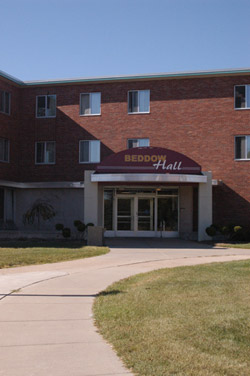 Beddow Hall was the third residence hall built as part of the quadrangle on what was then the southern limit of campus. Beddow, along with Merrill, Thorpe, and Sweeney Halls, was located south of Washington Court and far from any classroom
or other campus buildings. There were no sidewalks, streetlights, or public transportation when the first inhabitants moved in. As a result of the construction of these four buildings, the southeast quad, as well as the Towers complex,
relocated the center of campus living southward.
Beddow Hall was the third residence hall built as part of the quadrangle on what was then the southern limit of campus. Beddow, along with Merrill, Thorpe, and Sweeney Halls, was located south of Washington Court and far from any classroom
or other campus buildings. There were no sidewalks, streetlights, or public transportation when the first inhabitants moved in. As a result of the construction of these four buildings, the southeast quad, as well as the Towers complex,
relocated the center of campus living southward.
Beddow Hall was designed by architect Roger Allen of Grand Rapids and was built by the Collinson Construction Company of Midland. The $1.2 million building was designed to house 288 students. Like the other residence halls constructed
during this period, the suite-style floor plan closely resembled the one developed for Tate Hall. The building was opened in fall 1962, although it was not officially dedicated until the following spring. Beddow Hall, along with Thorpe
Hall, was dedicated in a joint ceremony on May 26, 1963. Ceremonies featured appearances by University President Judson Foust, architect Roger Allen, and a representative from the State Board of Education.
Beddow Hall opened as a women's hall. Today it, like all CMU residence halls, is coeducational. Beddow's early residents were mostly freshmen who would often move out after the first semester. When the Towers complex opened in the late 1960s, it replaced Beddow as the home of Central's incoming freshmen. When Beddow opened, new policies reflected the changing times of the 1960s. Signing in and out was done away with and the quiet hours policy was liberalized. For the first time in a women's residence hall men were allowed to visit the suites. In addition, drinking was allowed for people who were of legal age.
Beddow Hall was named for the head of the Department of Speech and Reading from 1905-1939. Ira Beddow was born in Southfield, Michigan in 1867. He attended high school in Albion, Birmingham, and Ypsilanti. He received his Bachelor of Arts from Albion College, his AM from Columbia, and his doctorate from the University of Michigan. He also did graduate work at the University of Chicago and London.
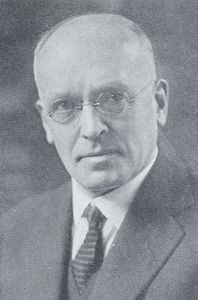 Before coming to Central, he taught at Elm Station in Detroit. He was superintendent of schools for Plymouth, then taught at West Side High School in Bay City and Olivet College. He started teaching history during summer sessions at Central
and joined the faculty as a full-time speech instructor in 1906.
Before coming to Central, he taught at Elm Station in Detroit. He was superintendent of schools for Plymouth, then taught at West Side High School in Bay City and Olivet College. He started teaching history during summer sessions at Central
and joined the faculty as a full-time speech instructor in 1906.
During his tenure at Central, he directed what came to be referred to as "Mr. Beddow's Commencement Play" produced during graduation in Old Main and, subsequently Warriner Hall. The first of these was "Antigone." He also started the first canoe rentals on the Chippewa River with a boat dubbed "the Faculty Frigate." He retired in 1939. Dr. Beddow and his wife Elizabeth had two daughters and four sons. After Elizabeth died, he married Theresa McDonald. He died on April 4, 1950 in St. Petersburg, Florida.
Brooks Hall
Opened: 1965
Cost: $2.73 million
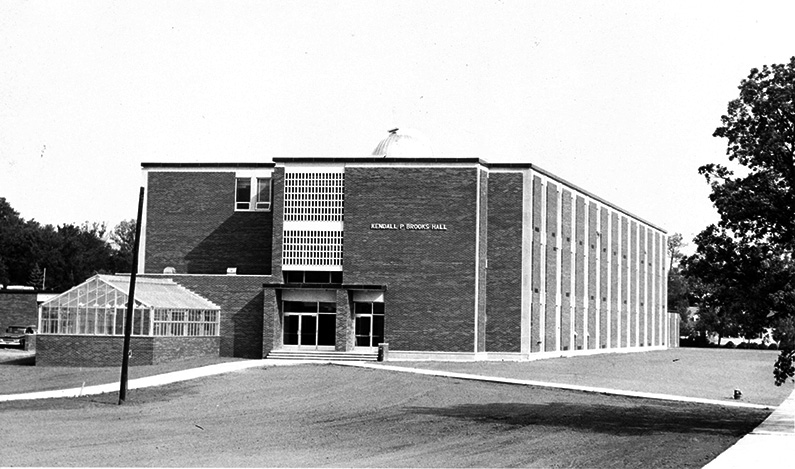 Brooks Hall was built to replace Grawn Hall, the original science building on campus. The new science building would be the first of a three-building complex of academic buildings constructed during the mid-1960s (Anspach Hall and Pearce
Hall would complete the complex). The state approved $2.73 million for the construction of a new science building in October 1962. The new structure was planned for the eastern half of the block bounded by Franklin Street on the east,
Grawn Avenue on the north, and Weidman Avenue on the south (these roads have either been removed or renamed since the time).
Brooks Hall was built to replace Grawn Hall, the original science building on campus. The new science building would be the first of a three-building complex of academic buildings constructed during the mid-1960s (Anspach Hall and Pearce
Hall would complete the complex). The state approved $2.73 million for the construction of a new science building in October 1962. The new structure was planned for the eastern half of the block bounded by Franklin Street on the east,
Grawn Avenue on the north, and Weidman Avenue on the south (these roads have either been removed or renamed since the time).
The building was designed by Roger Allen and Associates of Grand Rapids and was the first new academic building constructed on campus since 1958. At 100,000 square feet, it would be the largest academic building on campus, eclipsing Warriner's
85,000 square feet. It was the first academic building located south of Preston Avenue; with the completion of Anspach and Pearce Halls, the bulk of academic activities would be relocated to this part of campus. The building was designed
to house Central's first observatory as well as a botany laboratory and greenhouse.
Groundbreaking ceremonies took place in January 1963. In March, the University awarded the $929,780 general contract to DeYoung Bagin Construction Company of Grand Rapids and the $217,980 electrical contract to the Holp Electric Company of Mt. Pleasant. Before construction could begin, at least one house had to be razed to make room for the new building. Construction was underway by late spring, and the cornerstone was laid in September 1963. The building was ready for occupancy in September 1964 and was officially dedicated the Kendall P. Brooks Hall of Science in May 1965. The dedication ceremony featured speeches by Herbert D. Dean, president of the Dow Chemical Company, and Roger Allen, chief architect on the project.
Brooks Hall became the new home for all of the science departments on campus. The first floor served biology and chemistry, physics occupied the second floor, and geography and geology were housed on the third floor. A large basement section would be used for storage and serviced by a freight elevator from a central loading dock. The observatory, a popular feature among faculty and students, was kept regulated to the outside temperature to avoid interference by heat waves. The relocation of the science departments allowed Grawn Hall to be renovated and repurposed into the new home of the School of Business Administration.
As part of a 1990 renovation project, supported by a $2.5 million grant from the Herbert and Grace Dow Foundation and an additional $1 million from University funds, the University remodeled areas of Brooks Hall and installed new science
technology. To integrate the building into the Dow Science Complex, Brooks was connected to Dow Hall by a catwalk. The departments of Chemistry, Physics, and Geography relocated into the newly built Dow Hall, while the other science
departments remained in Brooks. The Dow Science Complex, including Brooks Hall, continues to serve as the a main center of scientific activity on campus today.
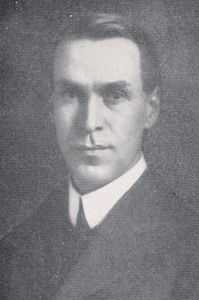 Brooks was named for a former faculty member and head of the Department of Chemistry and Physics. Kendall Brooks was the son of a Baptist preacher who was also the president of Kalamazoo College. He received his Bachelor of Arts from Alma
College, then did graduate work at the University of Michigan and the University of Chicago. He taught science in Marquette, became superintendent of schools, then resigned in 1908. He spent two years in Germany studying Physics, but
failed his Doctoral oral examinations in 1910. He returned to Central soon after to head the Department of Chemistry and Physics. He also worked as a registrar for the institution. He was the director of the Exchange Savings Bank in
Mt. Pleasant, which he helped survive the Great Depression.
Brooks was named for a former faculty member and head of the Department of Chemistry and Physics. Kendall Brooks was the son of a Baptist preacher who was also the president of Kalamazoo College. He received his Bachelor of Arts from Alma
College, then did graduate work at the University of Michigan and the University of Chicago. He taught science in Marquette, became superintendent of schools, then resigned in 1908. He spent two years in Germany studying Physics, but
failed his Doctoral oral examinations in 1910. He returned to Central soon after to head the Department of Chemistry and Physics. He also worked as a registrar for the institution. He was the director of the Exchange Savings Bank in
Mt. Pleasant, which he helped survive the Great Depression.
Biosciences Building
Opened: 2017
Cost: 95 Million
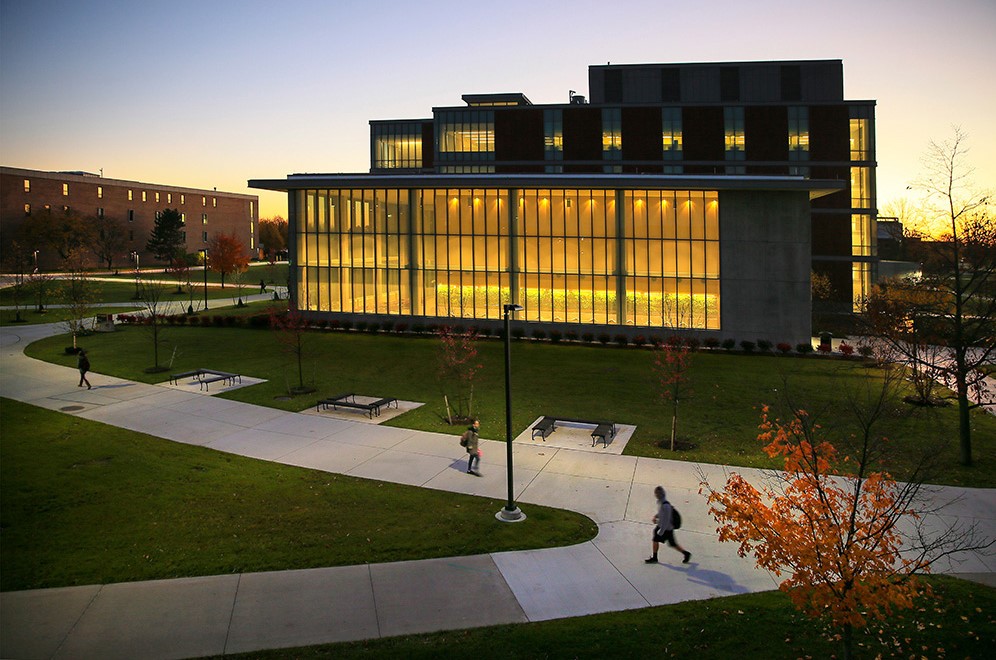 Central Michigan University's Biosciences Building was approved by the Board of Trustees on April 11, 2013.Construction began shortly after, in 2014, and doors were first opened to students in 2017. This state-of-the-art research
building was constructed to meet the fast-growing demands of students involved in the biosciences field. In the decade before construction, CMU saw a dramatic increase in undergraduate and graduate biology majors as well as the number
of faculty.
Central Michigan University's Biosciences Building was approved by the Board of Trustees on April 11, 2013.Construction began shortly after, in 2014, and doors were first opened to students in 2017. This state-of-the-art research
building was constructed to meet the fast-growing demands of students involved in the biosciences field. In the decade before construction, CMU saw a dramatic increase in undergraduate and graduate biology majors as well as the number
of faculty.
This four-level building comes fully equipped with a 220-seat multi-purpose auditorium, an "active learning" classroom, six 24-seat teaching laboratories and several informal collaboration spaces. It also boasts an isotope laboratory, a vivarium for aquatic life, an herbarium, and an Imaging Center for Scanning and Transmission electron microscopes.
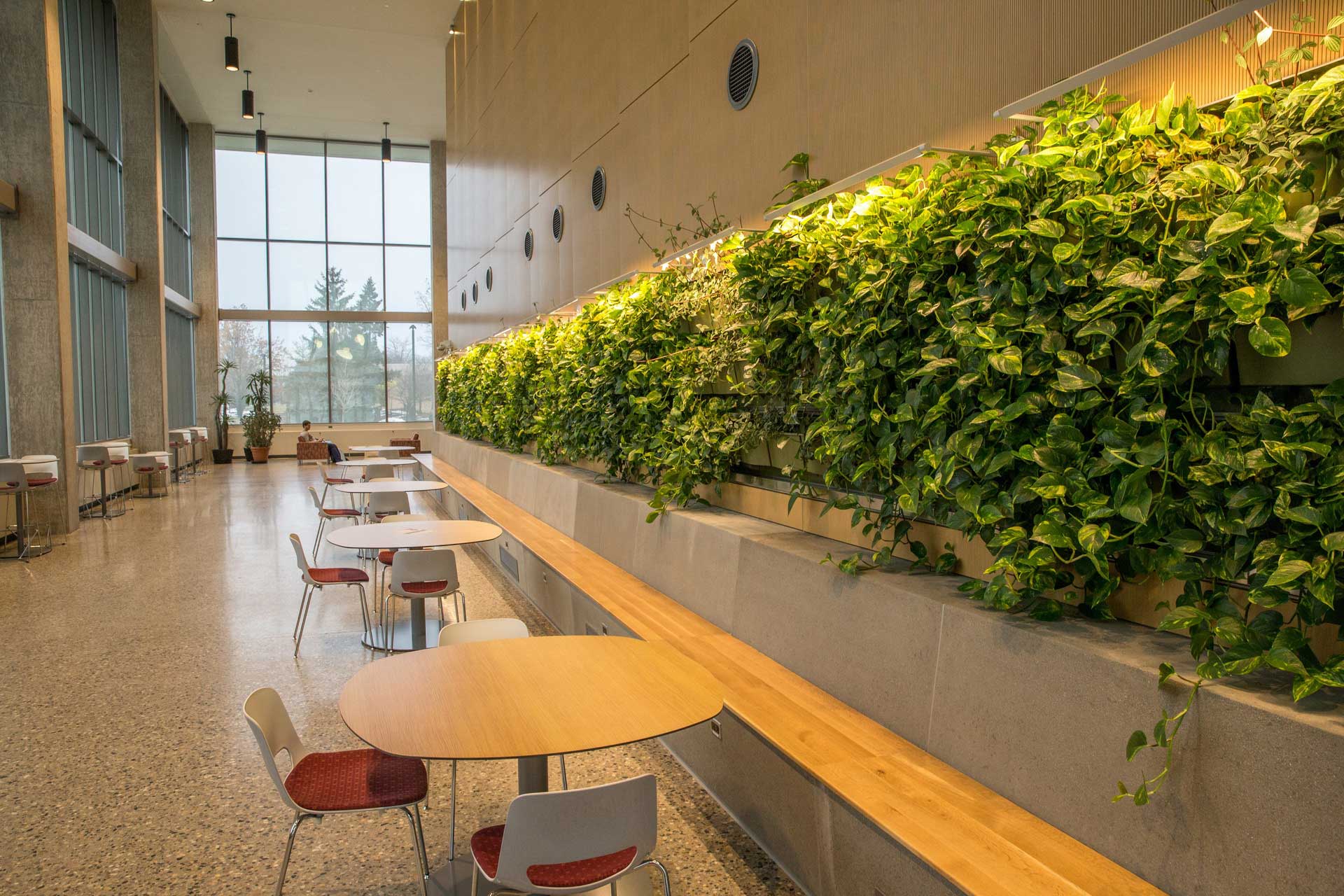 Reaching an impressive 169,000 square feet, the Biosciences Building was built with an approximate target budget of $95 million dollars. A capital allocation from the state of Michigan in the amount of $30 million helped the building's
construction to reach completion; the remaining funding was covered through a varied combination of fundraising, bonds, and university central reserves.
Reaching an impressive 169,000 square feet, the Biosciences Building was built with an approximate target budget of $95 million dollars. A capital allocation from the state of Michigan in the amount of $30 million helped the building's
construction to reach completion; the remaining funding was covered through a varied combination of fundraising, bonds, and university central reserves.
The building provides students with advanced laboratories, instruments, and facilities and draws more researchers and scholars to the program. Another goal of the construction of the facility is to help foster crucial contributions to
Michigan's economic goals through the emphasis placed upon cell and 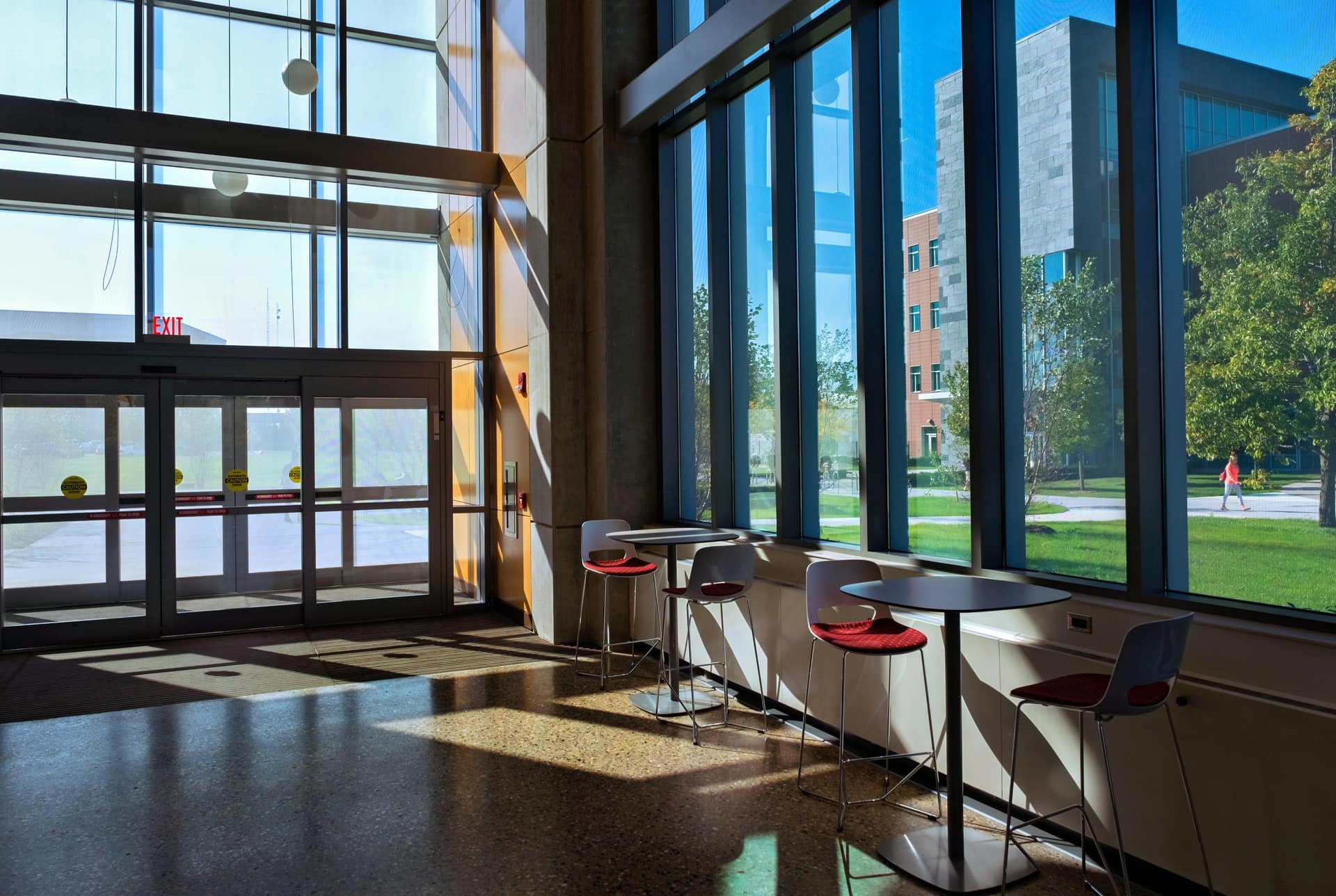 molecular biology, biotechnology, and through working with the Institute for Great Lakes Research. This institute plays a key role in promoting sustainable use of
critical and natural ecosystems.
molecular biology, biotechnology, and through working with the Institute for Great Lakes Research. This institute plays a key role in promoting sustainable use of
critical and natural ecosystems.
The CMU Biosciences Building possesses a LEED Silver certification. The design of the building balances the energy-intensive needs of a science facility with growing efforts towards energy efficiency. Systems found in the building include rainwater capture, solar panels, and the use of local and renewable resources.
Calkins Hall
Opened: Fall 1958
Cost: $1.42 million
Capacity: 312
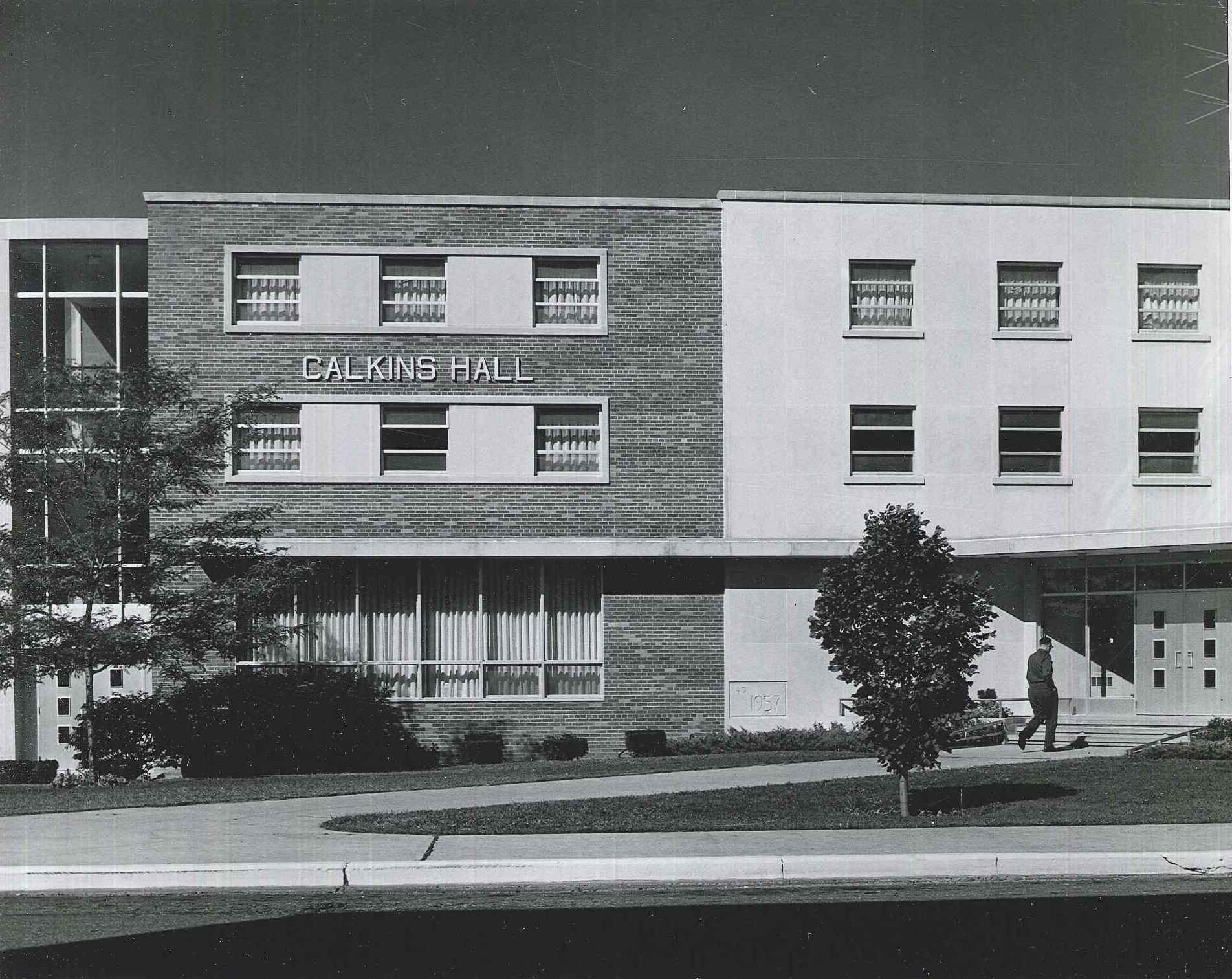 Calkins Hall was the third residence hall built in what would eventually become a quadrangle on the northwest side of campus. The location of this quad was the site of the Centralville married student housing (Hopkins Court) within the Vetville
complex that temporarily housed student veterans after the Second World War, although by the time construction started on Calkins, the apartment buildings that had once stood there had been sold and removed. The interior plans for Calkins
copied those developed for Tate Hall the previous year, which featured a suite-style layout that would heavily influence residence hall design until the construction of the Towers complex in the late 1960s. Calkins Hall shares a dining
commons with Robinson, Larzelere, and Trout Halls.
Calkins Hall was the third residence hall built in what would eventually become a quadrangle on the northwest side of campus. The location of this quad was the site of the Centralville married student housing (Hopkins Court) within the Vetville
complex that temporarily housed student veterans after the Second World War, although by the time construction started on Calkins, the apartment buildings that had once stood there had been sold and removed. The interior plans for Calkins
copied those developed for Tate Hall the previous year, which featured a suite-style layout that would heavily influence residence hall design until the construction of the Towers complex in the late 1960s. Calkins Hall shares a dining
commons with Robinson, Larzelere, and Trout Halls.
The $1.42 million building was designed by Roger Allen of Grand Rapids, who designed many of the other dormitories built during the period of campus expansion and residence hall construction in the 1950s and 1960s. Cornerstones of buildings often contain items that are specific to the time and place the building was constructed, and Calkins was no different. In addition to the usual newspaper clippings and school bulletins, Calkins' cornerstone contains a copy of the United Nations charter and several articles on the crisis in the Middle East over Israel's Suez Campaign.
The building was opened for occupancy in September 1958 and officially dedicated in May 18, 1959. Calkins was built as a women's hall. It housed women in its first year, men from 1959 to 1960, and women after that. In its early days, the hall
had a policy that each wing would host faculty members to a dinner once a month. When they were first built, Trout and Calkins were joined without any partitions between them, and in 1959-1960, there were several reports of the Trout men
rolling bowling balls down into Calkins.
In the fall of 1967, the women of Calkins Hall won the award for best Homecoming float by a women's residence hall. The float had a large mock bon fire with the cartoon characters Chip and Dale roasting over it. The slogan read,
"Fire Up Chips!" This is the first known use of the now-familiar rallying cry for the University.
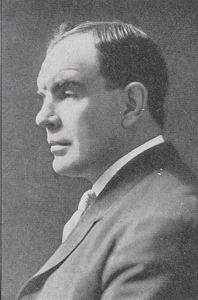 The hall was named for the head of the Department of Geography from 1902-1944. R. D. Calkins was born in Parma, Michigan on April 20, 1873. He received his Life Certificate from the State Normal School at Ypsilanti in 1897. He was the superintendent
of North Branch schools in Lapeer for one year, then returned to Ypsilanti to teach geography. He came to Central to chair the Geography Department in 1902. He was granted Central's first-ever sabbatical, and in 1903 received his Bachelors
from the University of Chicago, followed by his Masters from the same institution in 1907. In addition to teaching at Central, he taught summer sessions at the Columbia University, the University of Chicago, and UCLA. He and his wife had
two sons. His wife was active in the establishing of the first city library in Mt. Pleasant. Calkins died on September 27, 1955.
The hall was named for the head of the Department of Geography from 1902-1944. R. D. Calkins was born in Parma, Michigan on April 20, 1873. He received his Life Certificate from the State Normal School at Ypsilanti in 1897. He was the superintendent
of North Branch schools in Lapeer for one year, then returned to Ypsilanti to teach geography. He came to Central to chair the Geography Department in 1902. He was granted Central's first-ever sabbatical, and in 1903 received his Bachelors
from the University of Chicago, followed by his Masters from the same institution in 1907. In addition to teaching at Central, he taught summer sessions at the Columbia University, the University of Chicago, and UCLA. He and his wife had
two sons. His wife was active in the establishing of the first city library in Mt. Pleasant. Calkins died on September 27, 1955.
Campbell Hall
Opened: 2003
Cost: $33 Million (entire three-building project)
Capacity: 714 (entire three-building project)
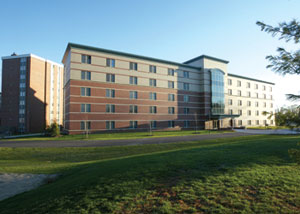 In the fall of 2001, University officials announced plans for the construction of a new high rise residence hall project which would be built as an addition to the existing Towers complex, originally completed in 1969-70. The first new residence
halls to be built by the University in over 30 years, the $33 million housing complex would add an additional 238,000 square feet to the existing complex. Plans for the project were created by architects at Design Plus in Grand Rapids.
The Christman Company of Lansing, which constructed the original Towers project, received the contract for the new buildings as well as the $8 million in renovations planned for the existing dormitories.
In the fall of 2001, University officials announced plans for the construction of a new high rise residence hall project which would be built as an addition to the existing Towers complex, originally completed in 1969-70. The first new residence
halls to be built by the University in over 30 years, the $33 million housing complex would add an additional 238,000 square feet to the existing complex. Plans for the project were created by architects at Design Plus in Grand Rapids.
The Christman Company of Lansing, which constructed the original Towers project, received the contract for the new buildings as well as the $8 million in renovations planned for the existing dormitories.
Construction officially began with a groundbreaking ceremony in November 2001. The plans called for a large complex that would include space for 714 additional residents, classrooms, a technology center, and a workout room. A convenience store and a DVD/video game rental outlet were also included in the original designs. Parking facilities would be redesigned so that three separate parking lots would serve the housing complex, the main one leading to a circular drive bounded by two ponds. A new security system, comprised of 54 cameras and proximity readers on exterior doors, was also installed as part of the project.
As the additions to the Towers complex neared completion in the fall of 2003, the University announced the official names of the new buildings. Kesseler Hall, which had been named previously, would be joined by Kulhavi Hall (called Gold Hall
during construction) and Campbell Hall (called Maroon Hall during construction). In September, as students moved into the new residence halls, the University held an official dedication ceremony. Trustees Campbell (served 1995-2007), Kesseler
(served 1991-97), and Kulhavi (served 2002-09) were honored in front of around 300 CMU alumni and donors and President Michael Rao gave a speech.
That same month, residents of the Towers complex held a pep rally to encourage unity among the old and new buildings. Around 1,500 student residents gathered at the intramural fields in an event sponsored by the seven buildings that make up the Towers complex. The event not only encouraged closer ties between residents of different buildings, it also kicked off the annual year-long challenge between residents of those buildings.
Carey Hall
Opened Spring 1970
Cost: $1.43 million
Capacity: 336
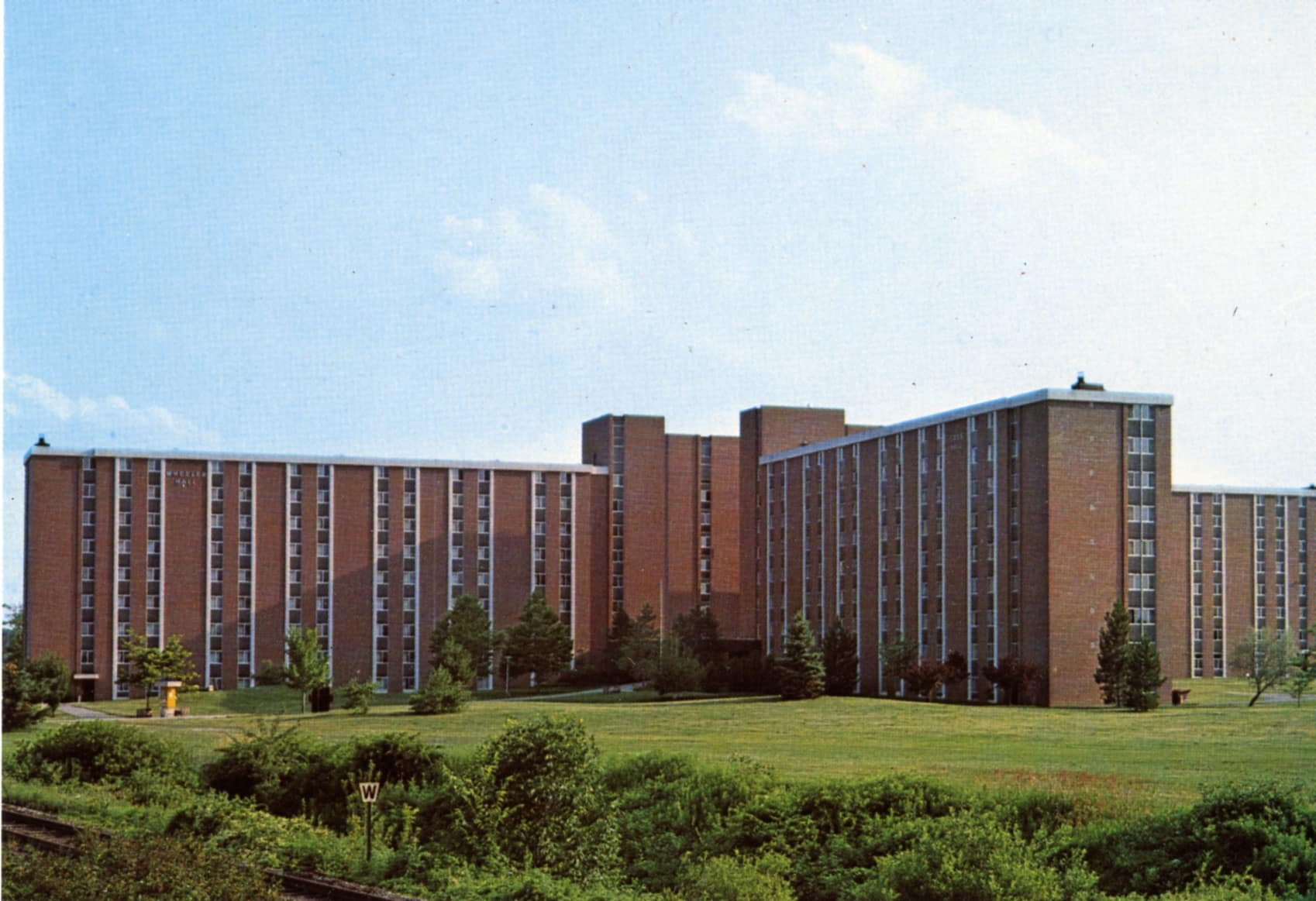 Carey Hall was the first co-ed residence hall on campus. It had four floors of men and three of women. The first women to move in were refugees from the first Ronan Hall, which was torn down shortly before Carey opened. The hall was
co-ed in when it opened in the spring of 1970, housed only men from 1971-1973 and 1976-1978, and became co-ed permanently after 1978. The hall opened with a capacity of 336.
Carey Hall was the first co-ed residence hall on campus. It had four floors of men and three of women. The first women to move in were refugees from the first Ronan Hall, which was torn down shortly before Carey opened. The hall was
co-ed in when it opened in the spring of 1970, housed only men from 1971-1973 and 1976-1978, and became co-ed permanently after 1978. The hall opened with a capacity of 336.
Carey Hall was named for the head of the Geography Department from 1944 to 1956. Joseph Carey was born on January 4, 1886 in Isabella County. In 1911, he completed a two-year course at Central, then received his Bachelor of Science in 1915 at the University of Chicago. He taught school at St. Johns in Bay City, in Spokane, Washington, and in Isabella County. He left the area in 1916 to teach Geography at Eastern Illinois University, then returned to Mt. Pleasant in 1919 to run the Chatterton Elevator Company.
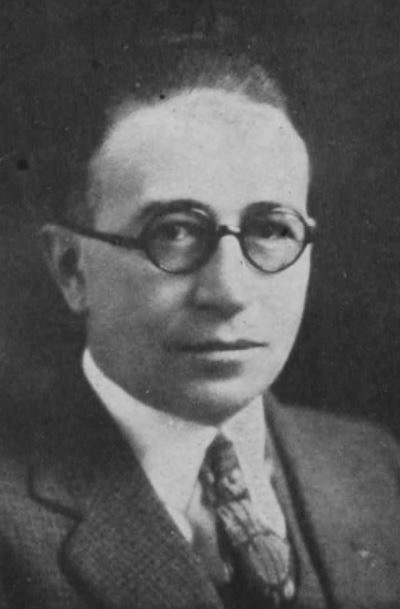 In 1925, he joined the faculty of Central as an assistant professor of Geography. He was head of the short-lived Aeronautics Department in 1943, then became head of Geography in 1944. He also chaired the Faculty Athletic Committee
for twenty years. He also found time to return to the University of Chicago for his Master of Sciences in 1932.
In 1925, he joined the faculty of Central as an assistant professor of Geography. He was head of the short-lived Aeronautics Department in 1943, then became head of Geography in 1944. He also chaired the Faculty Athletic Committee
for twenty years. He also found time to return to the University of Chicago for his Master of Sciences in 1932.
Carey was the president of the Mt. Pleasant Board of Education, the chair of the City Planning Commission, and the executive secretary of the Michigan Oil and Gas Expo. He and his wife, Ida, had two sons and two daughters. He died in 1968.
Carlin Alumni House
Purchased by Central: 1941
Renovated: 1989
Cost of renovation and expansion: $500,000
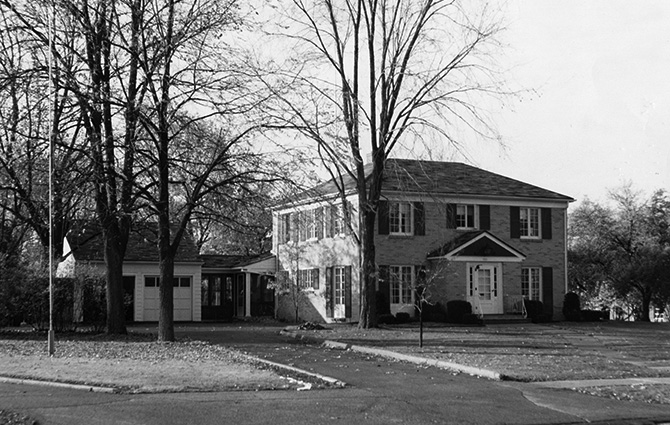 The Carlin Alumni House, which was at one time the home of the president of Central, was originally built as a private residence. The land on which Rowe Hall and the Carlin Alumni House are now located was once part of a subdivision owned
by George J. Moutsatson. He sold lot number four, the future site of the house, to a Mr. Clark, a local geologist, who constructed the house on the property. Moutsatson later sold the rest of the property on East Bellows to the University,
and Clark sold the house to the University in 1941. The University planned to use the house as a home for its top executive, who began living there in 1944.
The Carlin Alumni House, which was at one time the home of the president of Central, was originally built as a private residence. The land on which Rowe Hall and the Carlin Alumni House are now located was once part of a subdivision owned
by George J. Moutsatson. He sold lot number four, the future site of the house, to a Mr. Clark, a local geologist, who constructed the house on the property. Moutsatson later sold the rest of the property on East Bellows to the University,
and Clark sold the house to the University in 1941. The University planned to use the house as a home for its top executive, who began living there in 1944.
Each president who lived in the house made improvements to the structure. Under President Anspach, the library was remodeled and a new patio was added. President Foust remodeled the kitchen and laundry room, excavated the basement, and began construction on a recreation room. President Boyd oversaw the most extensive renovations; an elaborate addition, designed by architects with Wakely, Kushner, & Wakely of Mt. Pleasant and bigger than the existing structure, was eventually abandoned because of the prohibitive cost. Instead, the house was painted white, a wall was removed to enlarge the master bedroom, and the kitchen was again remodeled. President Abel, the last University official to live in the house full-time, added a bedroom and bathroom to the basement. President Ellis did reside in the building for a brief period after a 1986 flood, but by this point, the president no longer lived permanently on campus.
Plans to convert the house into an alumni center were underway by late 1989 and the transformation was complete by October of 1990. Approximately $500,000 was allocated by the University to pay for the 4,500 sq. ft. renovation. The restoration and expansion of the house included the addition of a conference room, reception areas, staff offices, and workrooms. The modern Alumni House serves as a "home base" for visiting graduates, special alumni events, and also as the office building for the alumni and development staffs.
The CMU Alumni House is named for Leslie and Marge Carlin, a husband and wife counseling team with have long histories of association with the University. Leslie Carlin worked as a counselor in the Counseling Center from 1948 to 1981. Margo Carlin served as a residence hall housemother at Central from 1948 to 1967.
Celani Hall
Opened: 2006
Cost: $30 Million (two-building complex)
Capacity: 454 (two-building complex)
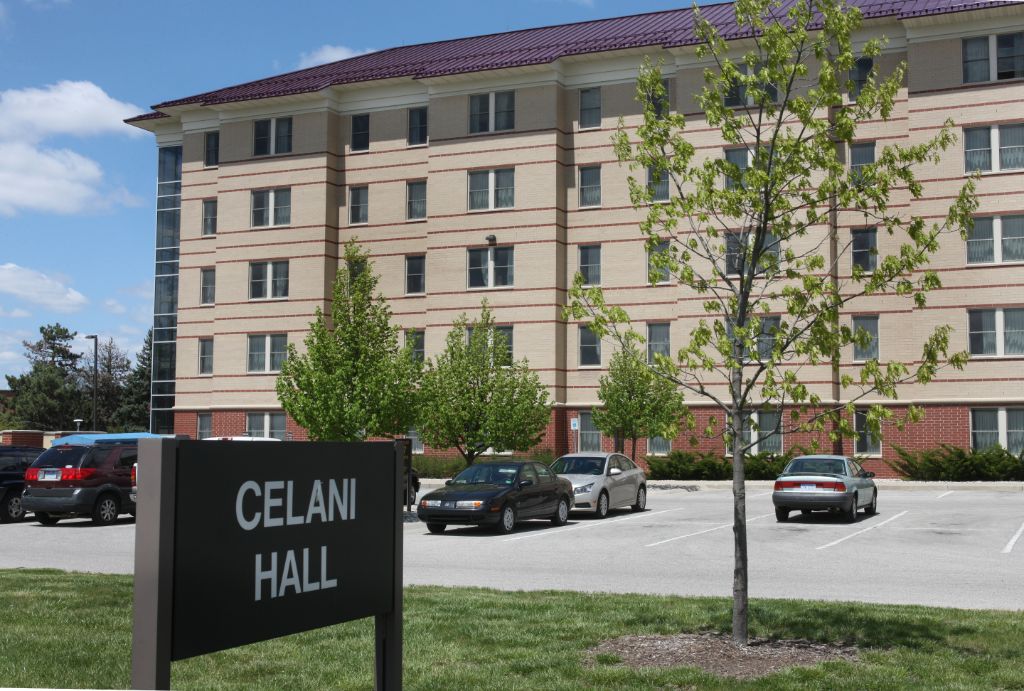 In September 2004, CMU's Board of Trustees approved plans to construct two new residence halls near the existing Woldt and Emmons Halls north of Broomfield Road. Architectural designs were completed by Design Plus of Grand Rapids in January
2005. The buildings were designed with help from a feedback focus group of residents from the recently constructed Towers complex, which made suggestions like moving the lounge, kitchen, and laundry facilities on each floor to the
end of the floor rather than leaving them in the center. Living quarters were also redesigned and enlarged to better suit the needs of students. Besides these minor modifications, the designs closely resembled those used for the additions
to the Towers residence complex in the early 2000s.
In September 2004, CMU's Board of Trustees approved plans to construct two new residence halls near the existing Woldt and Emmons Halls north of Broomfield Road. Architectural designs were completed by Design Plus of Grand Rapids in January
2005. The buildings were designed with help from a feedback focus group of residents from the recently constructed Towers complex, which made suggestions like moving the lounge, kitchen, and laundry facilities on each floor to the
end of the floor rather than leaving them in the center. Living quarters were also redesigned and enlarged to better suit the needs of students. Besides these minor modifications, the designs closely resembled those used for the additions
to the Towers residence complex in the early 2000s.
Rockford Construction Company of Belmont was awarded the contract for the $30 million, 181,981 square foot project. Construction officially began with a groundbreaking ceremony in March 2005. Construction proceeded apace but required temporary accommodations, including the relocation of Woldt Computer Lab to Kulhavi Hall. Improvements to the median dividing Broomfield Road were made in conjunction with the construction of the new buildings as part of the Broomfield Road Enhancement Project. Finally, a 22-foot sculpture designed and built by a former art professor was removed from its location outside of Woldt Hall. Although a new location was sought, the deteriorating condition of the sculpture made restoration and relocation impractical.
The project consisted of two new high-rise dormitory buildings that would house up to 454 students. Each floor consisted of twelve 4-bedroom suites and had a kitchen and laundry facilities with three washers and three dryers each. The complex also contained two new classrooms and an enlarged and improved convenience store. A new fitness center near the lobby of Herrig Hall was twice the size of the facility in the Towers complex, offering 36 workout units to students seven days a week. Plans also called for the complete remodel of Woldt Residential Restaurant, which would serve residents from the old quad as well as those from the new buildings. Finally, the project included a $650,000 landscaping project which was started as the final stages of building construction were underway and included the excavation of a large pond between the two new halls and in front of the dining commons. 140 feet long and between 20 and 40 feet wide, the pond could be frozen in the winter to provide a surface for ice skating.
In December 2005, the University announced that the new tower closest to Broomfield Road would be renamed the Ben and Marion Celani Residence Hall after Tom and Vicki Celani donated $1 million to the University and decided to name the hall after Tom's parents. Similarly, the north building was officially named the Fabiano Family Residence Hall and dedicated to the family of alumnus and former Trustee James C. Fabiano (served 1999-2005) and his wife, Lee.
By August 2006, construction was nearing completion. That month, staff, faculty, and benefactors gathered in the lobby of the new complex to celebrate the Fabiano and Celani families, and President Rao gave a speech commemorating the opening of the new structures. By the end of the month, the computer lab had been returned to its original location in Woldt Hall and students began moving into Fabiano and Celani. These remained the newest residence halls on campus until the construction of the CMED graduate student housing in 2013.
Central Energy Facility
Opened: 1961
Cost: $900,000
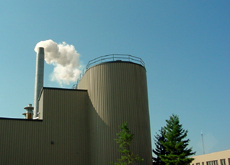 Following a period of incredible growth in terms of both students and campus buildings in the 1950s, school officials placed the construction of a new power house as the top priority for campus expansion plans. The new power house would replace
the heating plant located west of Wightman Hall, which had been constructed in the early 1940s and was itself a replacement for the first heating plant on the main campus.
Following a period of incredible growth in terms of both students and campus buildings in the 1950s, school officials placed the construction of a new power house as the top priority for campus expansion plans. The new power house would replace
the heating plant located west of Wightman Hall, which had been constructed in the early 1940s and was itself a replacement for the first heating plant on the main campus.
The $900,000 project was designed by architect Roger Allen and Company of Grand Rapids. The general contractor for the project was Engelhardt Construction of Bay City, while mechanical work was done by Maintenance Engineers Incorporated of Flint and the electrical work was completed by Electrical Service Company of Ann Arbor. The building, which was located on what was then the southeastern corner of campus (its current location), featured two 32-ton boilers capable of producing 150,000 pounds of steam an hour. The building's location also necessitated the construction of a 4,400-foot heating tunnel to connect it with the existing system. In December 1961 the plant ignited its boilers and began heating all of the buildings on campus.
The new powerhouse saw several significant renovations and improvements over the next few decades. In 1978, a Centralized Monitor and Control System was installed to reduce energy expenditures by allowing adjustment in campus heating, ventilation, lighting, and air conditioning, all of which were controlled by a centralized microprocessing unit. The project cost $1.2 million and took three years to fully implement, but saved the University in operating costs. The project paid for itself in four and a half years.
In December 1982, the Board of Trustees heard a presentation on a proposed wood-burning power plant that would supplement or even replace the natural gas fired plant in operation at the time. After consideration, the Board approved $3.5 million for the project, which was projected to save the University $20 million over the following decade. Funding for the project came from federal grant and loan funds, as well as from University deficit spending. Similar wood-burning power plants were growing in popularity at this time. Dow Corning Corporation had recently completed construction on a similar, albeit much larger, facility in Midland in 1982.
Groundbreaking on CMU's new wood-burning plant took place in the spring of 1984. The wood handling and storage facilities were built by Radar Companies Incorporated of Portland, Oregon, and the construction of the wood boiler was completed by General Riggers and Erectors of Detroit. The wood-burning plant was built adjacent to the existing power house on East Campus Drive. Expected to burn 43,700 tons of woodchips annually, CMU signed a contract with Morbark Industries, Incorporated of Winn to supply the woodchips, which would come from a 50-mile radius around the University and would be stored in two large silos next to the facility. The wood-fired boiler fired for the first time in February 1985, a ribbon cutting ceremony was held in June, and it was fully operational by mid-summer. The wood-burning plant was named the Outstanding Engineering Achievement in the Education Division for 1985 by the Michigan Society of Professional Engineers.
Although the wood-burning plant was initially successful and well received by the campus and local community, the energy crisis that spurred its construction eased by the late 1980s and alternative fuel sources once again became more economically feasible. CMU began to rely more and more heavily on natural gas once again, and by 1988, it had made plans to remove a large boiler from the powerhouse because it was no longer needed for campus use due to the increased efficiency of using natural gas rather than wood chips. The boiler was shipped by rail to AC Spark Plugs in Flint in exchange for robotic equipment no longer needed by the corporation but which would be used in the new Industrial Education and Technology Building on Central's campus.
In 1990, the University announced a $13.7 million expansion to the power house, now known as the Central Energy Facility. E & V Incorporated of Holland was the construction management firm, and work on the project began in the fall of 1990. The project included conversion of the wood-fired boilers to gas-fired boilers, which would be the primary source of heat for campus. Crews installed four large chiller units, which were tied into the expanded air conditioning network that cooled buildings across campus. A fourth boiler was also added that included a cogeneration turbine capable of producing electricity. When the project was completed, the University would be capable of generating up to 60% of its own electricity. The expanded Central Energy Facility remained the primary source of heat, air conditioning, and domestically-produced electricity until the completion of the Satellite Energy Facility in 2006-07.
Central Health Improvement Plan (CHIP)
Opened: 1987
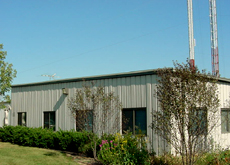 Construction on a building to house the Central Health Improvement Program (CHIP) began in June 1987. The single story, 5,000 square foot building opened in May 1987. The building houses offices and storage space for University grounds
crews. Its main purpose, however, is as the center for CHIP activities. The Central Health Improvement Program is an in-house rehabilitation program for CMU employees and their families. The facilities themselves offer physical
rehabilitation and exercise equipment, and the wider program encourages healthy living among the campus community through seminars and fitness classes. Within two years of its opening in 1987, CHIP was serving around fifty people
a day and around a third of all campus employees were taking advantage of the program in some way. CHIP and the CHIP Facility continue to serve CMU employees today.
Construction on a building to house the Central Health Improvement Program (CHIP) began in June 1987. The single story, 5,000 square foot building opened in May 1987. The building houses offices and storage space for University grounds
crews. Its main purpose, however, is as the center for CHIP activities. The Central Health Improvement Program is an in-house rehabilitation program for CMU employees and their families. The facilities themselves offer physical
rehabilitation and exercise equipment, and the wider program encourages healthy living among the campus community through seminars and fitness classes. Within two years of its opening in 1987, CHIP was serving around fifty people
a day and around a third of all campus employees were taking advantage of the program in some way. CHIP and the CHIP Facility continue to serve CMU employees today.
Cobb Hall
Opened Winter 1970
Cost: $1.65 million
Capacity: 416
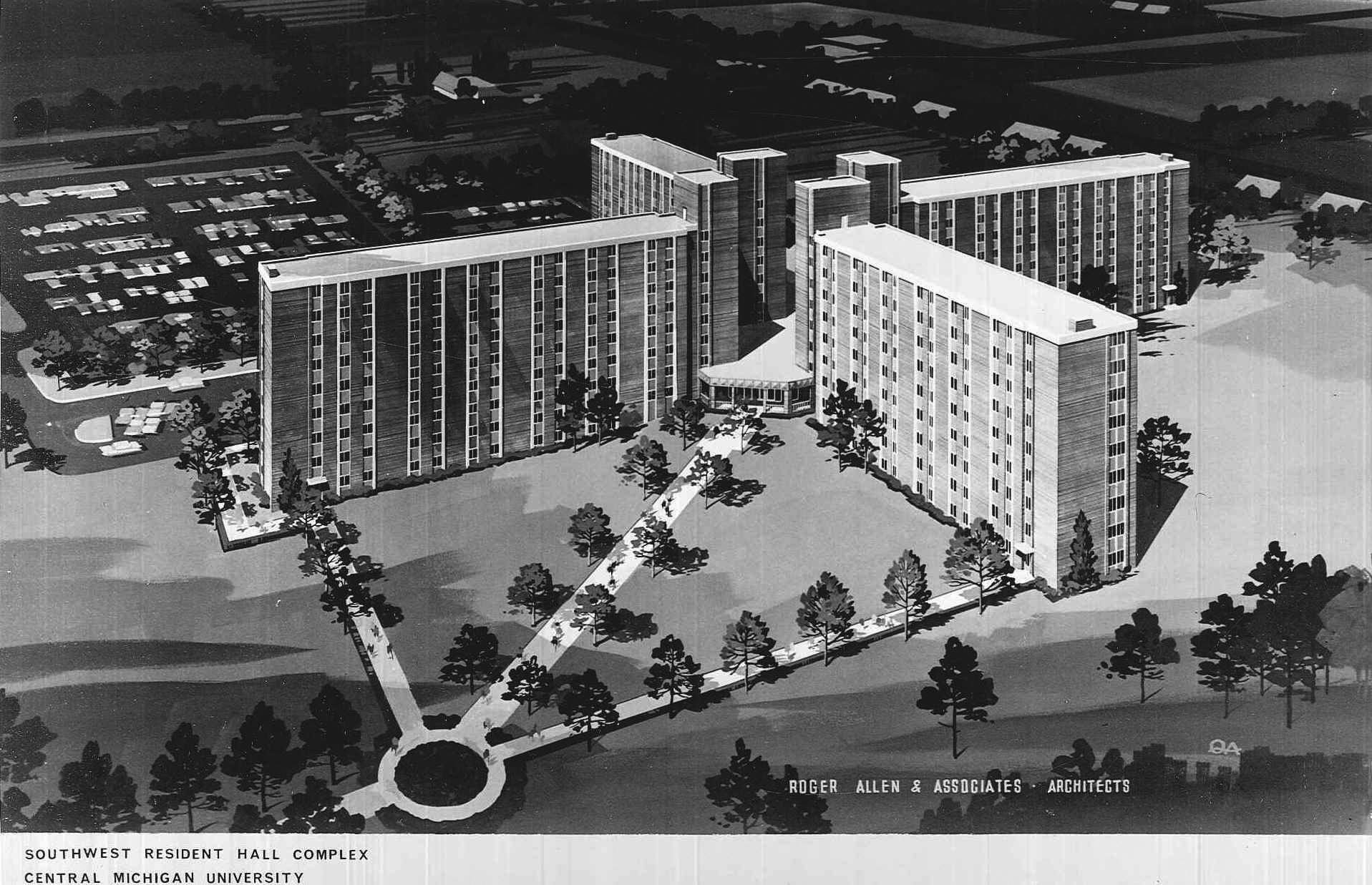 Cobb Hall opened in the winter of 1970 as a women's residence hall with a capacity of 416. In 1973, the hall became co-ed, which it remains to this day. The hall was named for the head of the Department of Agriculture from 1912 to
1936. Myron Cobb was a noted conservationist and agricultural authority who came to Central in 1908 after receiving his Bachelor of Science in 1908 from State Agricultural College (now Michigan State University), where Teddy Roosevelt
spoke at his commencement. While working on his BS, he taught science in Lansing.
Cobb Hall opened in the winter of 1970 as a women's residence hall with a capacity of 416. In 1973, the hall became co-ed, which it remains to this day. The hall was named for the head of the Department of Agriculture from 1912 to
1936. Myron Cobb was a noted conservationist and agricultural authority who came to Central in 1908 after receiving his Bachelor of Science in 1908 from State Agricultural College (now Michigan State University), where Teddy Roosevelt
spoke at his commencement. While working on his BS, he taught science in Lansing.
Cobb started at Central as a Chemistry teacher, then became the head of the Department of Agriculture in 1912. He was a pioneer in introducing soybeans as a crop in the Mt. Pleasant area. He planted numerous forests around the state and led a campaign in Clare against billboards on US-27. The State named a wildlife sanctuary after him in recognition of his efforts at conservation. He received his Master of Science from Michigan Agricultural College (now Michigan State) in 1922. He died in an auto accident near his Harrison cottage in 1936.
College of Medicine
Opened: 2013
Cost: $26.4 Million
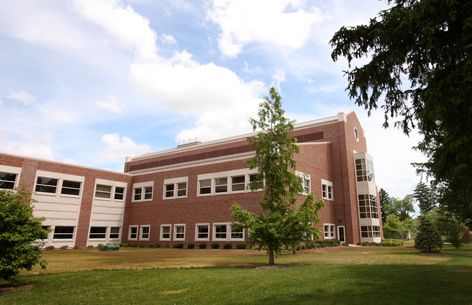 Central Michigan University's College of Medicine opened in 2012 after years of debate over the addition's impact on exiting university classes and budgets. According to administrators, the medical school was founded with the purpose
of producing physicians that would serve rural and urban communities, especially in Michigan and other Midwestern states. With the several local medical organizations that make up the CMU Medical Education Partners, the College
of Medicine welcomed its inaugural class in 2013.
Central Michigan University's College of Medicine opened in 2012 after years of debate over the addition's impact on exiting university classes and budgets. According to administrators, the medical school was founded with the purpose
of producing physicians that would serve rural and urban communities, especially in Michigan and other Midwestern states. With the several local medical organizations that make up the CMU Medical Education Partners, the College
of Medicine welcomed its inaugural class in 2013.
The College of Medicine is housed in a $19.4 million addition to the Health Professions Building, located on the corner of Preston Avenue and East Campus Drive. It comprises 60,000 square feet and houses clinical exam rooms, group study rooms, simulation rooms, and anatomy labs. In addition, the Board of Trustees approved the construction of a $7 million research laboratory complex, which was built by Clark Construction Company of Lansing. The College of Medicine Building earned a Gold Certification from Leadership in Energy and Environmental Design (LEED).
The opening ceremonies on August 4, 2013 featured speeches from CMU President Ross and founding Dean of the College of Medicine Ernest Yoder. Mark Nepo, a poet and philosopher, gave a speech as well. There was also a blessing performed by members of the Saginaw Chippewa Indian Tribe. Upon its opening, CMU's College of Medicine was the 137th medical school in the United States. 57 of the first 64 students were indeed from Michigan, and the college has a full capacity of 400 students.
The College of Medicine located on Central Michigan University's Mt. Pleasant campus is only one part of the training facilities for medical students at CMU. The University also has a separate facility in Saginaw. Built by the Barton Mallow Company of Southfield, the East Campus facility was completed in 2015 at a cost of $25.2 million.
Combined Services Building
Opened 1990
Cost: $4 million
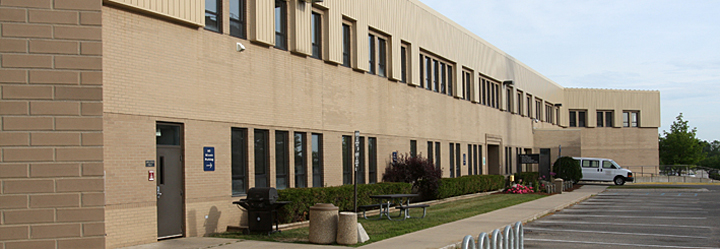 In May 1989, CMU's Board of Trustees approved the construction of a Combined Services Building (CSB) that would house a variety of University departments and services. Groundbreaking on the estimated $4 million project took place in July.
The building was designed by GBKB Associates of Traverse City and was constructed by E&V Incorporated of Holland. Although originally designed to be 63,500 square feet, the design specifications were increased to around 70,000
square feet, a direct result of saving enough money in the contracting stage to allow more space to be added to the design at no additional cost.
In May 1989, CMU's Board of Trustees approved the construction of a Combined Services Building (CSB) that would house a variety of University departments and services. Groundbreaking on the estimated $4 million project took place in July.
The building was designed by GBKB Associates of Traverse City and was constructed by E&V Incorporated of Holland. Although originally designed to be 63,500 square feet, the design specifications were increased to around 70,000
square feet, a direct result of saving enough money in the contracting stage to allow more space to be added to the design at no additional cost.
Construction continued throughout the winter of 1989-1990 and by the spring several departments were ready to move in. Not only were various University services now concentrated within a single building, but several departments were able to move into the Combined Services Building and away from widely scattered layouts. In February 1990, the University Press moved into the CSB from Wightman Hall. In May, the Department of Public Safety moved in from their previous home, a renovated house on the corner of Preston and East Campus Drive. In November, Facilities Management moved into CSB. The new space replaced their old headquarters, located in the original powerhouse built in 1942, and for the first time all Facilities Management operations were housed in a single building. By December, Media Relations had also moved in, consolidating their services into a single office complex as well.
Dow Science Complex
Opened 1992
Cost: $26.5 million
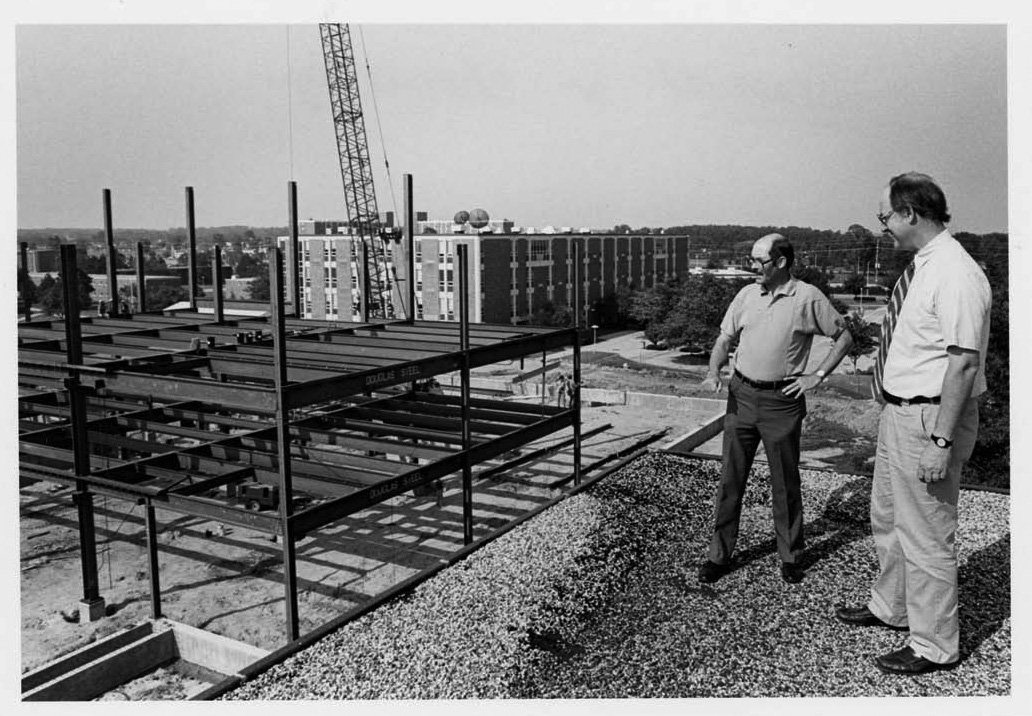 Dow Hall is a major part of the Dow Science Complex, which was opened for classes in August 1992. The $26.5 million Dow Science Complex project provided funds for the design and construction of a new science building, renovations to neighboring Brooks
Hall, and $2.5 million in new science technology. $24 million was funded by the state, while the remaining $2.5 million was funded by the Dow Foundation. The complex was dedicated the Dow Science Complex in 1988, representing the first time a building
on the campus of Central Michigan University was dedicated to a foundation rather than a former staff or faculty member.
Dow Hall is a major part of the Dow Science Complex, which was opened for classes in August 1992. The $26.5 million Dow Science Complex project provided funds for the design and construction of a new science building, renovations to neighboring Brooks
Hall, and $2.5 million in new science technology. $24 million was funded by the state, while the remaining $2.5 million was funded by the Dow Foundation. The complex was dedicated the Dow Science Complex in 1988, representing the first time a building
on the campus of Central Michigan University was dedicated to a foundation rather than a former staff or faculty member.
Construction of the complex took place between 1988 and 1992. Funding problems erupted into controversy and debate, but by May 1992, the physics, chemistry, and geography departments began moving into the offices on the second and third floors. In August,
classes began, although many students noted that the finishing touches remained to be completed. A large cardboard sign with the name of the building in marker greeted students at the door for months after classes began; a permanent sign did not go
up until the end of the year. Students also remarked on the lack of permanent signs for the classrooms, which were labeled with temporary paper signs. This, combined with the building's unique layout, resulted in some minor confusion during the first
few days of the semester.
No part of the construction of the complex was more controversial than the $70,000 sculpture that was installed as part of the new Dow building. Created by San Francisco artist Cork Marchescki, it was over 18 feet tall, 7 feet wide, and constructed of steel, aluminum, plastic, and neon tubing. After suffering two separate attacks by vandals, the sculpture was eventually moved in the spring of 1992 to the recently completed Student Activity Center.
In October 1992, the physics wing of the Dow Science Complex was renamed the Leon A. and Frances M. McDermott Physics Wing. When opened, the three-story wing featured three lecture rooms, a seminar room, a combination reading room and computer lab, and an area for student and faculty research.
In 2012, the CMU Board of Trustees approved a $1.5 million upgrade project designed to promote active learning within classrooms in the Dow Science Complex. Two ground-floor classrooms were to be equipped with "active learning technology" that would allow students to more easily communicate and collaborate with each other.
Education and Human Services Building (EHS)
Opened: 2009
Cost: $50 Million
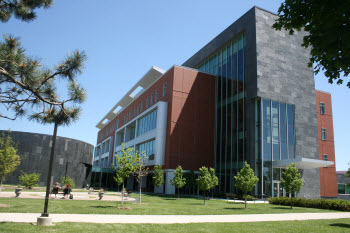 The design phase for the Education and Human Services Building began in 2006. It was designed by SHW Group LLC, a Michigan-based architectural and engineering firm, and built by Walsh Construction of Grand Rapids. The four-story, 137,000 square
foot building cost $50 million and was named the top project by the Construction Association of Michigan in 2010, beating out competing structures like the Greektown Casino in Detroit and the Gerald R. Ford International Airport in Grand
Rapids.
The design phase for the Education and Human Services Building began in 2006. It was designed by SHW Group LLC, a Michigan-based architectural and engineering firm, and built by Walsh Construction of Grand Rapids. The four-story, 137,000 square
foot building cost $50 million and was named the top project by the Construction Association of Michigan in 2010, beating out competing structures like the Greektown Casino in Detroit and the Gerald R. Ford International Airport in Grand
Rapids.
The Education and Human Services Building was designed to be as environmentally-friendly as possible, and it received a Gold Certification from Leadership in Energy and Environmental Design (LEED). The roof of the building featured 26,500 square feet of sedum, a ground-covering vegetation that helps drain water and maintain heating and cooling levels within the building. Floor-to-ceiling windows allowed the use of natural light and reduced electricity consumption, and restrooms featured reduced water usage and alternatives to paper towels. Finally, bamboo was used extensively throughout the building to reduce the use of wood materials and all of the furnishings and paint are recyclable.
In addition to environmental concerns, the Education and Human Services Building featured advanced teaching technology. Every room contained a copy cam, or a camera that takes a snapshot of the classroom whiteboard and copies it to a URL so that it can be accessed online by students. Rooms were also equipped with video cameras to facilitate recording lectures and presentations. Individual classes incorporated technology even more heavily. Some classes held in the Education and Human Services Building began with an iPod initiative, requiring all students to bring an iPod to class, where they would be used to take attendance, complete assignments, and communicate with other students and with the instructor.
One prominent feature of the Education and Human Services Building is the Child Development and Learning Lab. The lab had been located in Wightman Hall for over forty years but was relocated to EHS upon the building's opening in 2009. The Child Development and Learning Lab contains space for 72 preschool-aged children and many Central Michigan University students eager to work with them.
Emmons Hall
Opened: 1965
Cost: $1.4 million
Occupancy: 344
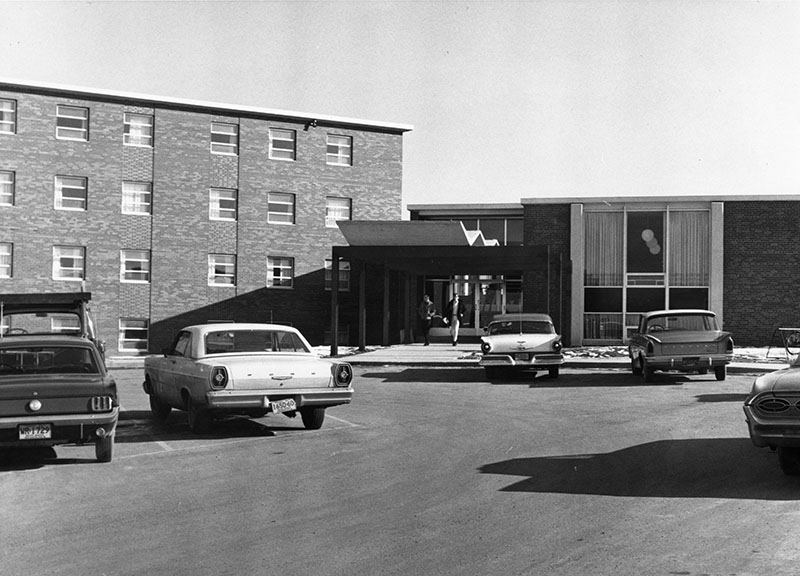 Emmons Hall was the second residence hall built in what would become the southeast quadrangle. Emmons, along with Woldt, Saxe, and Herrig Halls, were all constructed during a period of campus expansion that included four new quads in fifteen
years. Emmons Hall was designed by architects from Roger Allen and Associates in Grand Rapids. The $1.4 million building, designed to house 344 students in 86 suites, utilized the floor plan from Tate Hall (this floor plan was used
in all residence hall buildings until the construction of the towers complex in the late 1960s).
Emmons Hall was the second residence hall built in what would become the southeast quadrangle. Emmons, along with Woldt, Saxe, and Herrig Halls, were all constructed during a period of campus expansion that included four new quads in fifteen
years. Emmons Hall was designed by architects from Roger Allen and Associates in Grand Rapids. The $1.4 million building, designed to house 344 students in 86 suites, utilized the floor plan from Tate Hall (this floor plan was used
in all residence hall buildings until the construction of the towers complex in the late 1960s).
Emmons Hall opened for occupancy in the spring of 1965. It was dedicated on May 9, 1965 in a joint ceremony that also featured the dedication of Emmons' sister hall, Woldt. When it opened, the building included several innovative features, some of which are still extant. The basement of the Woldt-Emmons complex, beneath the dining room where Computer Services is now housed, was a new student union, complete with a cafeteria, a bookstore, and recreation rooms. Woldt and Emmons were also unique in that they shared a common lobby.
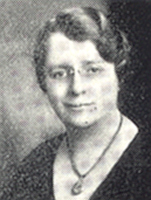 The hall was named for Helen R. Emmons, the Head of the Department of Early Education from 1926 to 1934. Emmons received her Life Certificate from the Chicago College of Education and taught in the kindergartens of the Presbyterian Social
Services Board in Chicago. In 1915, she taught kindergarten in Fargo, North Dakota, before coming to Central in 1916. She became the Head of the Department of Early Education in 1926 and, in 1929, received her Bachelors of Education
from the Evanston National College of Education. She was a member of the Association for Childhood Education and helped establish kindergartens throughout Michigan.
The hall was named for Helen R. Emmons, the Head of the Department of Early Education from 1926 to 1934. Emmons received her Life Certificate from the Chicago College of Education and taught in the kindergartens of the Presbyterian Social
Services Board in Chicago. In 1915, she taught kindergarten in Fargo, North Dakota, before coming to Central in 1916. She became the Head of the Department of Early Education in 1926 and, in 1929, received her Bachelors of Education
from the Evanston National College of Education. She was a member of the Association for Childhood Education and helped establish kindergartens throughout Michigan.
Fabiano Hall
Opened: 2006
Cost: $30 Million (two-building complex)
Capacity: 454 (two-building complex)
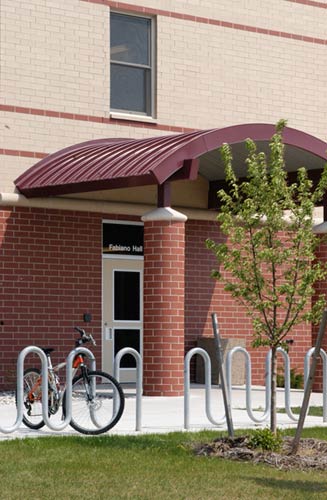 In September 2004, CMU's Board of Trustees approved plans to construct two new residence halls near the existing Woldt and Emmons Halls north of Broomfield Road. Architectural designs were completed by Design Plus of Grand Rapids in January
2005. The buildings were designed with help from a feedback focus group of residents from the recently constructed Towers complex, which made suggestions like moving the lounge, kitchen, and laundry facilities on each floor to the
end of the floor rather than leaving them in the center. Living quarters were also redesigned and enlarged to better suit the needs of students. Besides these minor modifications, the designs closely resembled those used for the additions
to the Towers residence complex in the early 2000s.
In September 2004, CMU's Board of Trustees approved plans to construct two new residence halls near the existing Woldt and Emmons Halls north of Broomfield Road. Architectural designs were completed by Design Plus of Grand Rapids in January
2005. The buildings were designed with help from a feedback focus group of residents from the recently constructed Towers complex, which made suggestions like moving the lounge, kitchen, and laundry facilities on each floor to the
end of the floor rather than leaving them in the center. Living quarters were also redesigned and enlarged to better suit the needs of students. Besides these minor modifications, the designs closely resembled those used for the additions
to the Towers residence complex in the early 2000s.
Rockford Construction Company of Belmont was awarded the contract for the $30 million, 181,981 square foot project. Construction officially began with a groundbreaking ceremony in March 2005. Construction proceeded apace but required temporary accommodations, including the relocation of Woldt Computer Lab to Kulhavi Hall. Improvements to the median dividing Broomfield Road were made in conjunction with the construction of the new buildings as part of the Broomfield Road Enhancement Project. Finally, a 22-foot sculpture designed and built by a former art professor was removed from its location outside of Woldt Hall. Although a new location was sought, the deteriorating condition of the sculpture made restoration and relocation impractical.
The project consisted of two new high-rise dormitory buildings that would house up to 454 students. Each floor consisted of twelve 4-bedroom suites and had a kitchen and laundry facilities with three washers and three dryers each. The complex also contained two new classrooms and an enlarged and improved convenience store. A new fitness center near the lobby of Herrig Hall was twice the size of the facility in the Towers complex, offering 36 workout units to students seven days a week. Plans also called for the complete remodel of Woldt Residential Restaurant, which would serve residents from the old quad as well as those from the new buildings. Finally, the project included a $650,000 landscaping project which was started as the final stages of building construction were underway and included the excavation of a large pond between the two new halls and in front of the dining commons. 140 feet long and between 20 and 40 feet wide, the pond could be frozen in the winter to provide a surface for ice skating.
In December 2005, the University announced that the new tower closest to Broomfield Road would be renamed the Ben and Marion Celani Residence Hall after Tom and Vicki Celani donated $1 million to the University and decided to name the hall after Tom's parents. Similarly, the north building was officially named the Fabiano Family Residence Hall and dedicated to the family of alumnus and former Trustee James C. Fabiano (served 1999-2005) and his wife, Lee.
By August 2006, construction was nearing completion. That month, staff, faculty, and benefactors gathered in the lobby of the new complex to celebrate the Fabiano and Celani families, and President Rao gave a speech commemorating the opening of the new structures. By the end of the month, the computer lab had been returned to its original location in Woldt Hall and students began moving into Fabiano and Celani. These remained the newest residence halls on campus until the construction of the CMED graduate student housing in 2013.
Finch Fieldhouse
Opened 1951
Cost: $1.25 million
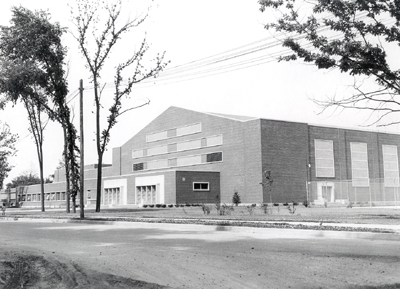 Finch Fieldhouse (and the adjoining athletic complex) was one of the first major construction projects undertaken by Central during the construction boom following the Second World War. As the number of students on campus swelled in the late
1940s, the need for a larger and more fully equipped athletic facility became apparent. In early 1944, President Anspach announced plans for the future planning and construction of a new gymnasium and field house. At a cost of over one
million dollars, the new field house and gymnasium complex would have to wait until 1949 for final approval of funding and plans.
Finch Fieldhouse (and the adjoining athletic complex) was one of the first major construction projects undertaken by Central during the construction boom following the Second World War. As the number of students on campus swelled in the late
1940s, the need for a larger and more fully equipped athletic facility became apparent. In early 1944, President Anspach announced plans for the future planning and construction of a new gymnasium and field house. At a cost of over one
million dollars, the new field house and gymnasium complex would have to wait until 1949 for final approval of funding and plans.
Designed by Roger Allen of Grand Rapids, the building's construction contract was awarded to the Storm Construction Company, also of Grand Rapids. The Hertel Company was responsible for installation of the plumbing and electrical work was completed by the Kirkhoff Company. The building was planned for the east side of Franklin Street north of Preston, and a number of existing homes were moved in preparation for the construction. Among the homes that were moved were several belonging to Central faculty, one of which became the future practice house for the Department of Home Economics.
The total cost for the entire project was over one million dollars and construction began in early 1950. At an official ceremony on March 16, 1950, President Anspach helped lay the cornerstone of the new building, which contained a copper box with information about Central and the City of Mt. Pleasant at the time of construction. The new Health and Physical Education Building was completed by the fall of 1951. University and state officials dedicated the new building, as well as the newly completed Wightman Hall, in October 1951. At the dedication ceremony, Michigan Senator Frank Heath congratulated Central for coming in under budget on the project. The principal architect, Roger Allen, also designed many buildings on campus and made a speech at the dedication ceremony, in which he stated that the gym and field house was his favorite project.
The largest building on campus at the time of its opening, the Health and Physical Education Building was one of the best equipped athletic facilities in the state. The building itself was 340 feet long by 288 feet wide. The field house alone was 263 feet by 138 feet with room for 4,000 seats. The project included the construction of parking facilities on the north and east sides of the building and the placement of nine concrete tennis courts to the south of the building; an area that is now a commuter parking lot.
The facilities within were also impressive. The complex featured a basketball court which was lit by floodlights and had permanent seating and a press box. In the opposite wing was a smaller gymnasium complex that was four times the size of the previous gym and would be used for athletic instruction. Boxing and wrestling rooms were located in the basement. The building also housed a 75 x 30 ft. pool that had a maximum depth of 15 feet and seating for 350 spectators. By early October 1951, the basketball team was practicing on its new court. The basketball team played the official dedication game on December 1, 1951, in which it upset the University of Michigan.
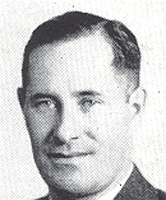 The building was renamed the Ronald W. Finch Health and Physical Education Building on October 20, 1962 at a ceremony that featured speeches from several University officials and the unveiling of the identifying letters on the building. Ronald
W. Finch was the head of the Physical Education department from 1942 to 1959. He was born on October 19, 1902 in Howard City. He graduated from Rockford High School. Before coming to Central as a faculty member, he taught high school for
twelve years, teaching in Clare, Lowell, St. Joseph, and Saginaw. He received his Bachelor of Science from Central in 1932 and his Master of Arts from Columbia in 1941. Finch joined the Central faculty in 1937. He was the head track and
football coach until 1946. He became the first dean of the college of Health, Physical Education, and Recreation when it was formed in 1959. He and his wife Bernice had three sons.
The building was renamed the Ronald W. Finch Health and Physical Education Building on October 20, 1962 at a ceremony that featured speeches from several University officials and the unveiling of the identifying letters on the building. Ronald
W. Finch was the head of the Physical Education department from 1942 to 1959. He was born on October 19, 1902 in Howard City. He graduated from Rockford High School. Before coming to Central as a faculty member, he taught high school for
twelve years, teaching in Clare, Lowell, St. Joseph, and Saginaw. He received his Bachelor of Science from Central in 1932 and his Master of Arts from Columbia in 1941. Finch joined the Central faculty in 1937. He was the head track and
football coach until 1946. He became the first dean of the college of Health, Physical Education, and Recreation when it was formed in 1959. He and his wife Bernice had three sons.
Foust Hall
Cost: $2.035 million
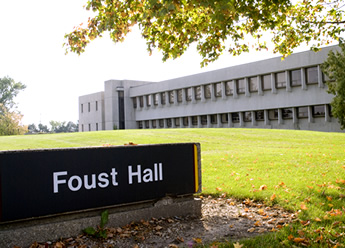 Judson Foust Hall was originally proposed in 1970 as a space for the Student Health Service, as well as various other University services. The $2.5 million project would be situated on Preston halfway between Mission and Franklin Streets
on the site of the Public Safety Building and across the street from Alumni Field. The Public Safety building was moved east to its new location in February 1972 to make room for Foust Hall. The new building was designed by Alden Dow
Architects of Midland. Dow was the son of Herbert H. Dow and a well-respected architect who worked under Frank Lloyd Wright. He and his firm had built over 800 buildings at the time of his appointment on this project, several of which
were located in the state of Michigan. Dow would later design the North Art Studio on campus as well.
Judson Foust Hall was originally proposed in 1970 as a space for the Student Health Service, as well as various other University services. The $2.5 million project would be situated on Preston halfway between Mission and Franklin Streets
on the site of the Public Safety Building and across the street from Alumni Field. The Public Safety building was moved east to its new location in February 1972 to make room for Foust Hall. The new building was designed by Alden Dow
Architects of Midland. Dow was the son of Herbert H. Dow and a well-respected architect who worked under Frank Lloyd Wright. He and his firm had built over 800 buildings at the time of his appointment on this project, several of which
were located in the state of Michigan. Dow would later design the North Art Studio on campus as well.
Construction had begun by summer 1971 and was completed in about two years. The University held a public open house in Foust Hall in October 1973. The Student Health Service began moving in during the summer of 1973. Established in the early 1960s to serve the needs of Central students, the Health Service had outgrown its original facilities in Sloan Hall as the demands of a growing campus community put more pressure on the department. Indeed, in the two years prior to the move, the number of students treated by the Student Health Service more than doubled.
The new facility was nearly double the size of the one Health Services left. In their new location in Foust Hall, the Student Health Service would occupy two entire floors and have access to an emergency room, laboratory, x-ray facilities, a 55-bed inpatient infirmary, and parking for 125 cars. The facility was designed to serve a campus of 20,000. The original plans had also called for a dental clinic and physiotherapy unit, but diminishing funds meant these proposed additions would have to wait. There was space for up to ten physicians and one psychiatrist, and University medical officials immediately recognized the urgent need for Central's first female physician and worked to bring one in.
Sharing Foust with Student Health Service was a counseling center and sports medicine clinic. There was also space for a new center for the University's Computer Services, including the addition of an IBM UNIVAC computer in late 1973 that
would greatly expand the school's computing power. Foust also housed the Women's Health and Information Project (WHIP), which worked to keep women on campus informed about birth control and reproductive health.
Foust has undergone several minor renovations since its construction and has been repurposed multiple times. It currently houses the Counseling Center, University Health Services, and the Office of Research and Graduate Studies.
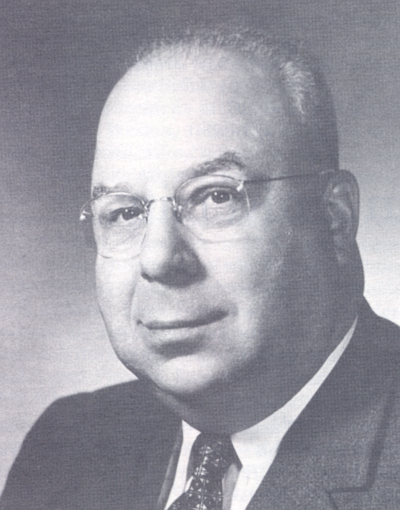 Born in Ann Arbor in 1902, Judson Foust moved with his family to Ithaca, Michigan, where he graduated from high school in 1919. He then went on to college and received a degree from Albion in 1923. Upon graduation, he accepted a position
as teacher of mathematics and debate coach in a Lansing high school. While teaching, he attended the University of Michigan, receiving a master's degree in 1927 and a doctorate in 1938. He began his career at Central State Teachers
College as a mathematics instructor in 1929 and authored several textbooks. In 1941, he was named director of summer school at Central. He later became assistant to the president in 1946 and vice president in 1952. When President Anspach
retired in 1959, Foust succeeded him to the office. He left the presidency in 1968, having served during the largest expansion period yet known to the University.
Born in Ann Arbor in 1902, Judson Foust moved with his family to Ithaca, Michigan, where he graduated from high school in 1919. He then went on to college and received a degree from Albion in 1923. Upon graduation, he accepted a position
as teacher of mathematics and debate coach in a Lansing high school. While teaching, he attended the University of Michigan, receiving a master's degree in 1927 and a doctorate in 1938. He began his career at Central State Teachers
College as a mathematics instructor in 1929 and authored several textbooks. In 1941, he was named director of summer school at Central. He later became assistant to the president in 1946 and vice president in 1952. When President Anspach
retired in 1959, Foust succeeded him to the office. He left the presidency in 1968, having served during the largest expansion period yet known to the University.
Gerald L. Poor Schoolhouse
Opened: 1973
Cost of Renovation: $68,500
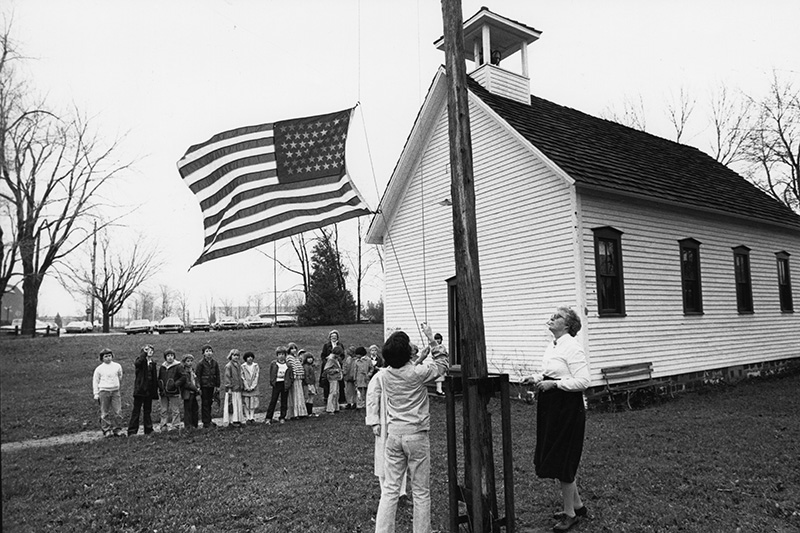 The building that now houses the Gerald L. Poor School Museum was originally built as the Bohannon Schoolhouse in 1901 to replace an existing log cabin serving as a schoolhouse in Jasper Township, eight miles
east of Mt. Pleasant. The school was closed in 1950 due to declining enrollment and rising operating costs and was converted into housing for migrant workers in the area. Seven years later, the building and the property on which it sat
were annexed to the St. Louis Public School System. It was sold to Carl Ross in 1959 and later to James Lensher in the 1960s.
The building that now houses the Gerald L. Poor School Museum was originally built as the Bohannon Schoolhouse in 1901 to replace an existing log cabin serving as a schoolhouse in Jasper Township, eight miles
east of Mt. Pleasant. The school was closed in 1950 due to declining enrollment and rising operating costs and was converted into housing for migrant workers in the area. Seven years later, the building and the property on which it sat
were annexed to the St. Louis Public School System. It was sold to Carl Ross in 1959 and later to James Lensher in the 1960s.
The process of relocation to Central Michigan University represented a cooperative effort between the University and the local community. In 1970, CMU's Center for Cultural and Natural History began looking for an old schoolhouse to convert into a museum on Central's campus. The Mt. Pleasant Realty Company located and purchased the Bohannon Schoolhouse and then donated it to the Center. Fred Grewe donated his services for moving the schoolhouse to its new location, a site on Preston just west of the railroad tracks and campus in May 1972. New wiring and heating systems were installed, and volunteers used donated furnishings to restore the interior to its original condition. Restoration work was done by workers at the Center for Cultural and Natural History, the Isabella County Historical Society, and volunteer citizens and students. In addition, the Mount Pleasant Federated Garden Club helped create an authentic surrounding landscape that included roses, shrubs, and forsythias.
In 1973, the Board of Trustees announced that the facility would be renamed the Gerald L. Poor School Museum, after a retiring member of the education faculty, who taught at CMU for 30 years. Unfortunately, Poor passed away before the museum was officially opened and dedicated in October 1976, although his wife was present at the ceremony. When it opened, the schoolhouse museum featured several artifacts from the turn of the twentieth century, including a pot-bellied stove, a slate chalkboard, period-style desks, and a 45-star American flag. By the end of October, second graders from Sacred Heart Elementary School were the first students to enjoy the authentic classroom experience.
In November 2004, John and Margaret Ann Riecker donated $108,500 to establish a literature series, which would be held in the Gerald L. Poor School Museum beginning summer 2005. $68,500 was used for renovation of the structure itself. Restroom facilities were added to the building, and air conditioning, ventilation, and heating systems were installed. New landscaping features were also added. Finally, the structure was improved to comply with the Americans with Disabilities Act at this time. The schoolhouse remains open to the public and guided tours can be scheduled by appointment.
Graduate Housing
Opened: 2013
Cost: $28.5 Million
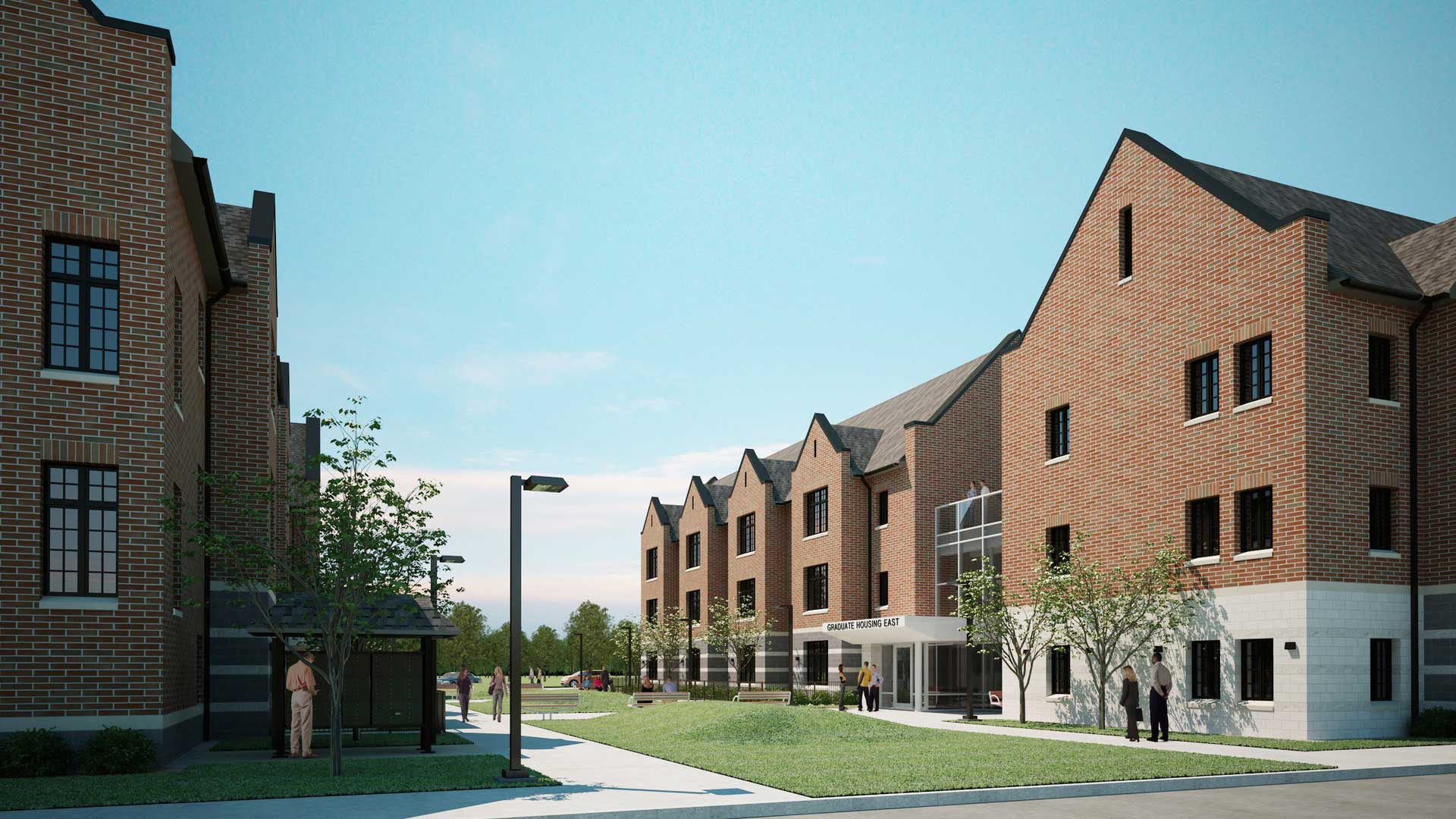 The Graduate Housing Complex offers on-campus housing to graduate students and families. The complex is comprised of two buildings, both located on Bellows Street at the north end of campus. The buildings opened in May and July of 2013,
helping to replace the loss of other graduate/family housing that occurred when 96 units at Preston Apartments were removed for the construction of the Music Building and 128 units at Washington Court were removed for the construction
of the Education and Human Services building.
The Graduate Housing Complex offers on-campus housing to graduate students and families. The complex is comprised of two buildings, both located on Bellows Street at the north end of campus. The buildings opened in May and July of 2013,
helping to replace the loss of other graduate/family housing that occurred when 96 units at Preston Apartments were removed for the construction of the Music Building and 128 units at Washington Court were removed for the construction
of the Education and Human Services building.
The project was approved by the CMU Board of Trustees in December 2011. The Christman Company of Lansing was hired to contract out the work. The total budget for the project was $28.5 million, which included funds for the expansion of an adjacent parking lot. The buildings were designed so that their architectural style fit in with the rest of the older buildings on the north side of campus. With this in mind, the exteriors of the buildings were closely modeled on Barnard Hall, a residence hall built in 1948 and demolished in 1997. The Graduate Housing Complex was the first multi-family building in the Midwest to receive a platinum certification from Leadership in Energy and Environmental Design (LEED).
The Graduate Housing Complex was designed to attract graduate students and family-oriented University attendees. When it opened, it featured one, two, and four-person accommodations, either furnished or unfurnished. Each unit had a full kitchen, washer and dryer, and air conditioning. Additionally, each unit was equipped with landline Ethernet ports or wireless capabilities, and all were within walking distance of the main campus. In total, the Graduate Housing Complex offered 94 units with 164 beds.
Grawn Hall
Opened April 1915
Cost: $100,000
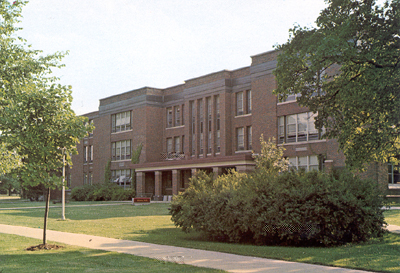 Grawn Hall is the oldest existing building on the campus of Central Michigan University. Designed by E. W. Arnold of Battle Creek, it was dedicated as the Science and Agriculture Building on July 8, 1915 by Governor Woodbridge Ferris.
When it first opened, the building housed the departments of Agriculture, Psychology, Geography, Biology, Physics, and Chemistry. Until 1965, it housed the various science and mathematics disciplines. During this time, a small
greenhouse stood on the present site of the Applied Business Studies Complex attached to the building. It also housed the University's print shop for some time. The building was dedicated in honor of Charles T. Grawn on June 15,
1940.
Grawn Hall is the oldest existing building on the campus of Central Michigan University. Designed by E. W. Arnold of Battle Creek, it was dedicated as the Science and Agriculture Building on July 8, 1915 by Governor Woodbridge Ferris.
When it first opened, the building housed the departments of Agriculture, Psychology, Geography, Biology, Physics, and Chemistry. Until 1965, it housed the various science and mathematics disciplines. During this time, a small
greenhouse stood on the present site of the Applied Business Studies Complex attached to the building. It also housed the University's print shop for some time. The building was dedicated in honor of Charles T. Grawn on June 15,
1940.
The building narrowly escaped destruction by fire on two occasions. The first happened January 31, 1933, when the memory of the Old Main fire was still fresh in the minds of the administration. The other, which did $25,000 in damage on March 10, 1954, started in a chemistry laboratory.
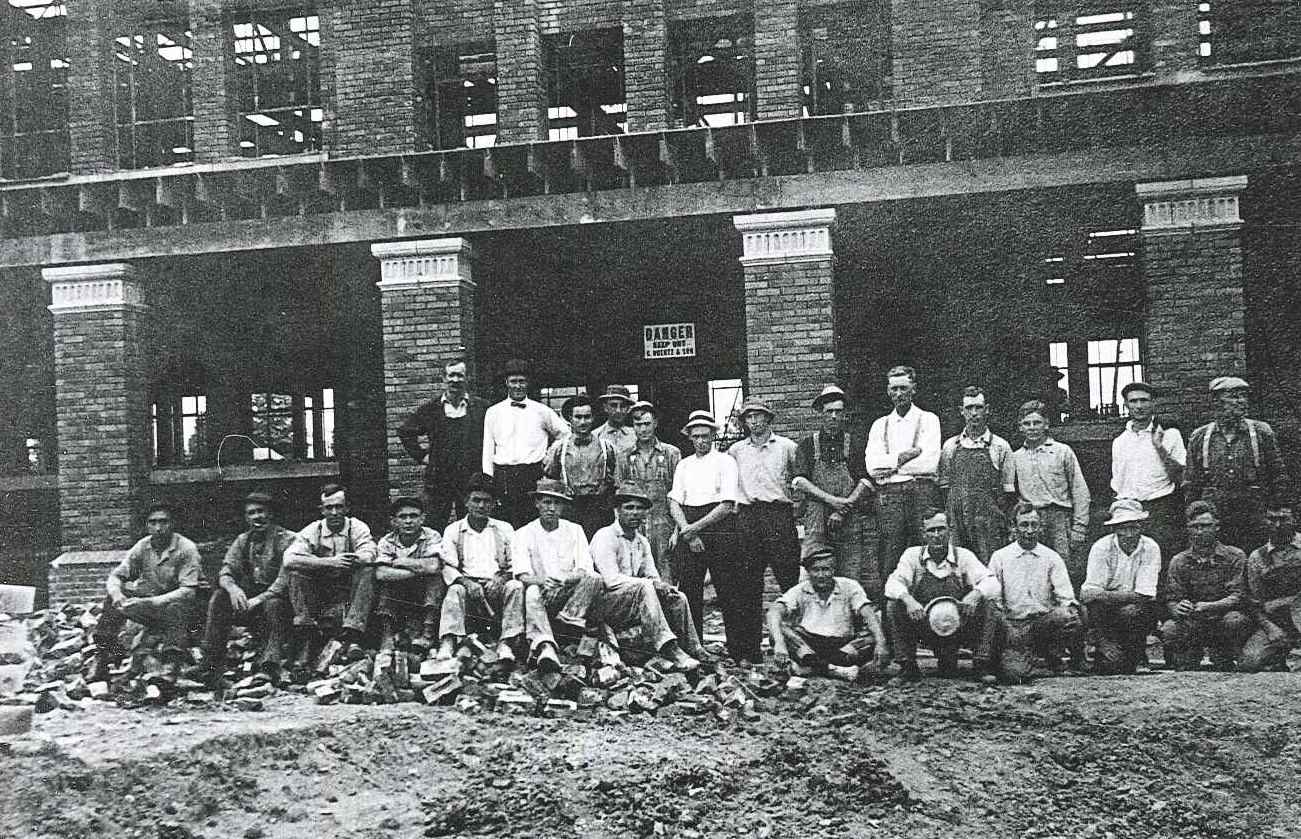 With the completion of a new science building (Brooks Hall) in 1964, the departments of Biology, Chemistry, Geography, Geology, and Physics all planned to move out of their homes in Grawn Hall. The University announced plans for a
remodeling of Grawn, which would be used temporarily as a general classroom building before conversion into the new home for the School of Business Administration. Governor Romney initially requested $10,000 for the project, but
the state legislature later agreed to increase funding to $600,000 for the renovation. An additional $250,000 was later added to this total. The project would include improvements to the existing building and an addition to the
south end of the structure. The addition was designed by Roger Allen and Associates of Grand Rapids and the construction contract was awarded to the Collinson Construction Company of Midland. Construction began in early 1966 and,
although work was delayed by a carpenters' union strike that summer, the project was complete and Grawn was ready for occupancy by fall 1966.
With the completion of a new science building (Brooks Hall) in 1964, the departments of Biology, Chemistry, Geography, Geology, and Physics all planned to move out of their homes in Grawn Hall. The University announced plans for a
remodeling of Grawn, which would be used temporarily as a general classroom building before conversion into the new home for the School of Business Administration. Governor Romney initially requested $10,000 for the project, but
the state legislature later agreed to increase funding to $600,000 for the renovation. An additional $250,000 was later added to this total. The project would include improvements to the existing building and an addition to the
south end of the structure. The addition was designed by Roger Allen and Associates of Grand Rapids and the construction contract was awarded to the Collinson Construction Company of Midland. Construction began in early 1966 and,
although work was delayed by a carpenters' union strike that summer, the project was complete and Grawn was ready for occupancy by fall 1966.
In 1986, the University announced plans for an Applied Business Studies Complex, the second major renovation of Grawn Hall. University officials raised the estimated $1.7 million through private donations from local and national businesses. The addition was designed by Wakely Associates of Mt. Pleasant and the construction contract was awarded to Wolgast Construction of Freeland. Groundbreaking took place on June 4, 1988. In the fall of that year, the University agreed to add an additional $400,000 to the project, raising the total cost to $2.1 million. Even though crews faced some difficulties incorporating the new addition into the oldest building on campus, the Applied Business Studies Complex opened on time in June 1989. The two-story, 20,000 square foot addition housed the Robert M. Perry School of Banking, Office and Management Information Systems, and the Materials Resource Center. There was also a large microcomputer lab available for student use. The University named several areas of the new addition after donors to the project, including the Dow Chemical Center for Creative Business Studies, the Whirlpool Behavioral Studies Laboratory, the Kmart Retail Center, and the Kysor Dispute Resolution Center.
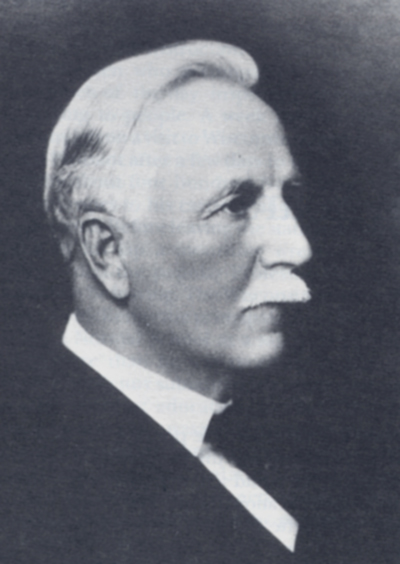 The building was named for Charles T. Grawn, the son of Swedish parents, who was born in Salem in Washtenaw County, Michigan, on October 4, 1857. Starting his educational career at eighteen years of age as a rural teacher in Kent County,
where he taught for one year, he entered the Michigan State Normal at Ypsilanti, graduating from the Classical course in 1880. After serving as superintendent of public schools in Plymouth, he accepted a similar position in Traverse
City, where he remained for fifteen years, leaving in 1899 to become superintendent of the training school at the State Normal College. A year later, when the position of principal at Central became vacant with the resignation
of Charles McKenny, the State Board of Education appointed Grawn to the post. In 1908, his title changed from principal to president. He remained the head of Central until 1918, when he resigned in order to devote his full time
to business interests.
The building was named for Charles T. Grawn, the son of Swedish parents, who was born in Salem in Washtenaw County, Michigan, on October 4, 1857. Starting his educational career at eighteen years of age as a rural teacher in Kent County,
where he taught for one year, he entered the Michigan State Normal at Ypsilanti, graduating from the Classical course in 1880. After serving as superintendent of public schools in Plymouth, he accepted a similar position in Traverse
City, where he remained for fifteen years, leaving in 1899 to become superintendent of the training school at the State Normal College. A year later, when the position of principal at Central became vacant with the resignation
of Charles McKenny, the State Board of Education appointed Grawn to the post. In 1908, his title changed from principal to president. He remained the head of Central until 1918, when he resigned in order to devote his full time
to business interests.
Health Professions Building
Opened: March 2004
Cost: $50 Million
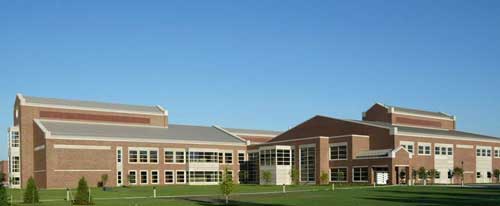 Central Michigan University's Health Professions Building opened in March 2004. It was designed by the Smith Group of Detroit and built by the JM Olsen Corporation of St. Clair Shores between August 2001 and January 2004. Although the total cost of the
project was $50 million, the University initially planned on spending only $2 million on the building, because $37.5 million would be funded by the state and another $10 million would be raised from donors.
Central Michigan University's Health Professions Building opened in March 2004. It was designed by the Smith Group of Detroit and built by the JM Olsen Corporation of St. Clair Shores between August 2001 and January 2004. Although the total cost of the
project was $50 million, the University initially planned on spending only $2 million on the building, because $37.5 million would be funded by the state and another $10 million would be raised from donors.
The Health Professions Building was designed to bring together students and faculty in the health professions, which had previously been scattered across six different buildings on campus before consolidation into the new facilities. Upon opening, the
building encompassed 175,000 square feet over two stories and three separate wings: a clinical wing, a laboratory wing, and a classroom wing. A prominent two-story atrium at the spine of the structure gave the structure a unique design aesthetic.
The building featured over a hundred offices, twelve classrooms, 27 laboratories, 35 diagnostic and treatment rooms, eight observation rooms, and 28 therapy rooms. There were also two inner courtyards, one of which included a memorial to those lost
in the attacks of September 11, 2001.
At the opening ceremony in March 2004, a large crowd of donors, politicians, and Central Michigan students, faculty, and administrators heard speeches from several guests, including the Michigan Surgeon General Kimberlydawn Wisdom, MD. The Health Professions
Building is now home to The Herbert H. and Grace A. Dow College of Health Professions. A $19.4 million, 60,000 square foot addition to the Health Professions Building established the Central Michigan University's College of Medicine, which
opened in 2012.
The CMU Board of Trustees approved another addition to the Health Professions Building on April 29, 2017. Construction began in March of 2018 and the building was open to students in January of 2020. Designed with collaboration in mind, the new Center
for Integrated Health Studies was built to facilitate shared learning experiences among the various health professions and to simulate clinical environments to prepare students for real-life medical situations.
The initial budget for the Center for Integrative Health Studies was set at $26,450,000 dollars. At the outset of approval, the Michigan Legislature allocated $19.5 million dollars for construction. Central Michigan University's reserve funds paid for
the remaining balance. Final costs totaled $26 million dollars.
At the time of its opening in 2004, the Health Professions Building boasted state-of-the-art audio-visual and telecommunications technology that allowed students and faculty to converse with other research facilities worldwide in real-time with high-quality
video and audio. One room, called the "global telepresence room," featured equipment designed to capture and share activity within the room and to generate three-dimensional imaging. Other technological innovations included a therapeutic pool and
a keycard entry system to ensure security in the facility, which housed valuable and potentially dangerous equipment.
The Center for Integrative Health Studies, totaling 50,000 square feet, is comprised of classrooms equipped with spaces for group labs. It also houses collaborative study rooms throughout the center. Additionally, the
physical therapy rooms integrate designs for remote learning through a simulcast virtual classroom that allows video calls.
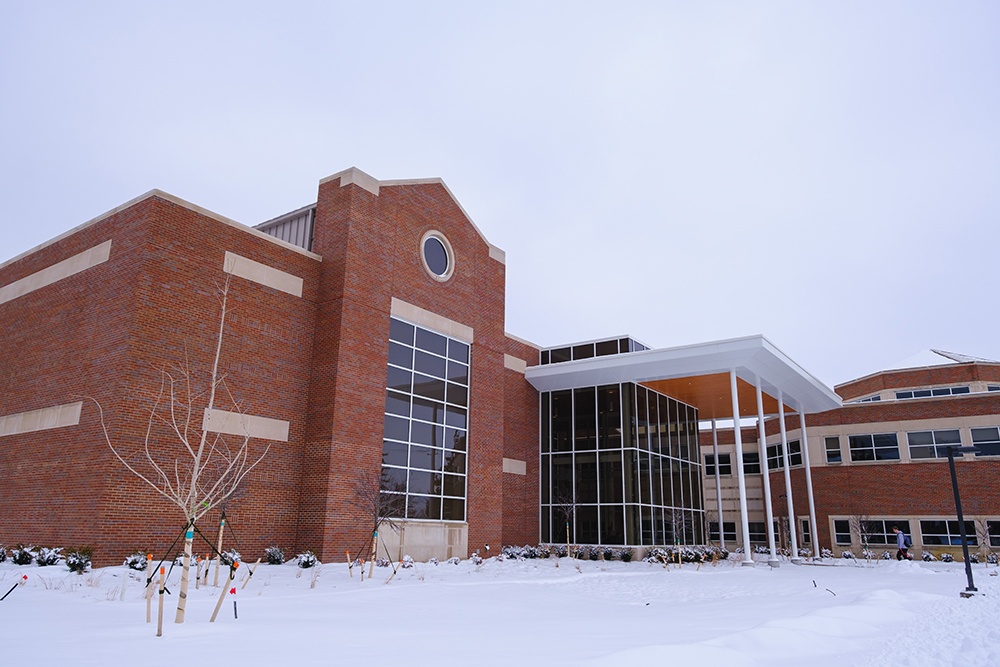 6,000 square feet of the center houses a two-room simulation suite and eight exam rooms. The simulation suite provides students with a controlled environment to experience medical scenarios and practice active learning. Several high-tech clinical mannequins
simulate speech, breathing, blinking, and symptoms for various role-playing exercises. The exam rooms can also be adapted and redecorated to represent multiple healthcare environments.
6,000 square feet of the center houses a two-room simulation suite and eight exam rooms. The simulation suite provides students with a controlled environment to experience medical scenarios and practice active learning. Several high-tech clinical mannequins
simulate speech, breathing, blinking, and symptoms for various role-playing exercises. The exam rooms can also be adapted and redecorated to represent multiple healthcare environments.
The Health Professions building is located on the corner of Preston Avenue and East Campus Drive, on the former site of Alumni Field and the old Lyle Bennett Track.
Herrig Hall
Opened: Fall 1966
Cost: $1.4 million
Occupancy: 344
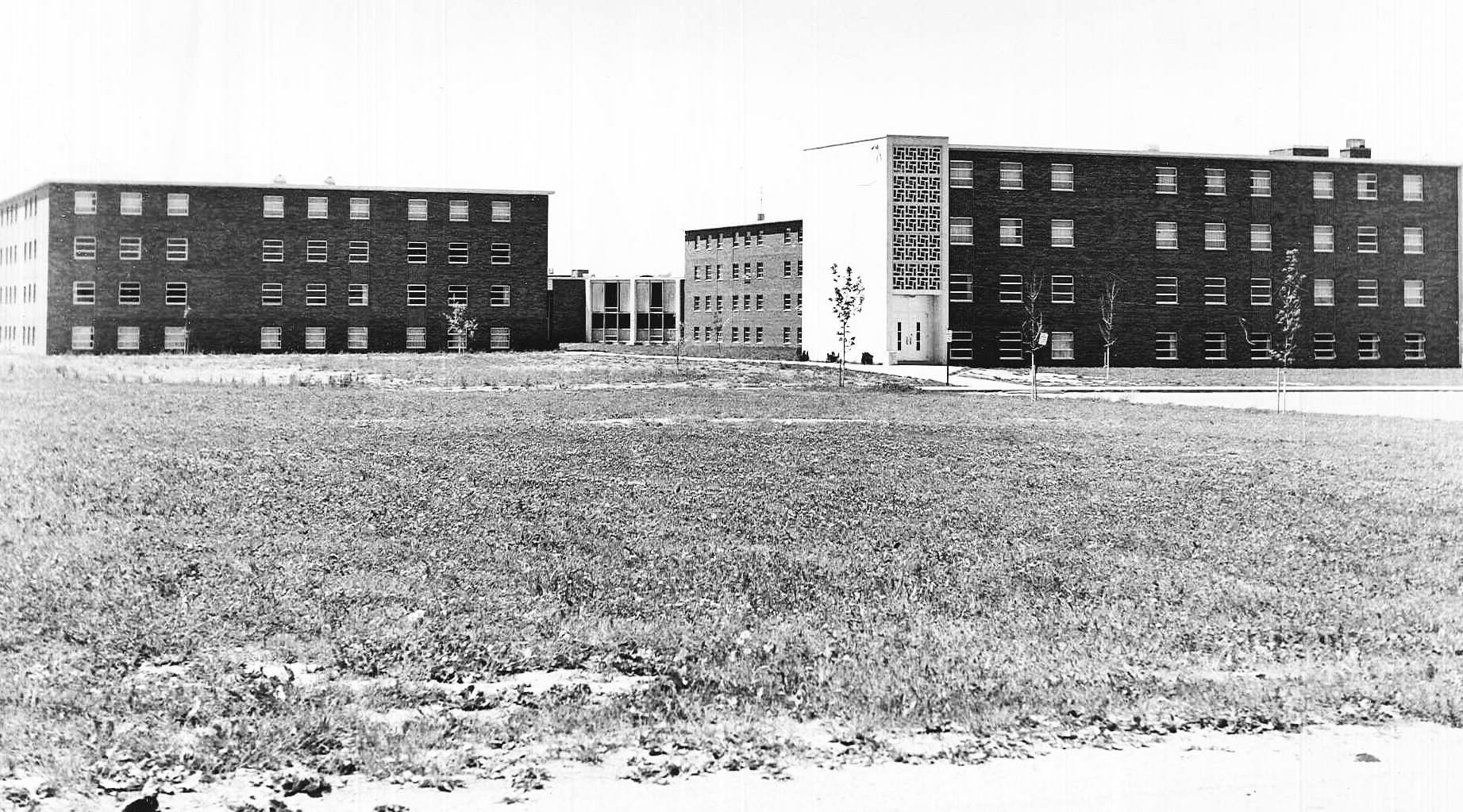 Herrig Hall opened in the fall of 1966 as part of the southeast quadrangle of residence halls. Herrig, along with Woldt, Emmons, and Saxe Halls, were all constructed during a period of campus expansion that included four new quads in a
fifteen year period. Herrig Hall was designed by architects from Roger Allen and Associates in Grand Rapids. The $1.4 million building, designed to house 344 students in 86 suites, used the suite plan from Tate Hall (this floor plan
was used in all dormitory buildings until the construction of the towers complex in the late 1960s).
Herrig Hall opened in the fall of 1966 as part of the southeast quadrangle of residence halls. Herrig, along with Woldt, Emmons, and Saxe Halls, were all constructed during a period of campus expansion that included four new quads in a
fifteen year period. Herrig Hall was designed by architects from Roger Allen and Associates in Grand Rapids. The $1.4 million building, designed to house 344 students in 86 suites, used the suite plan from Tate Hall (this floor plan
was used in all dormitory buildings until the construction of the towers complex in the late 1960s).
Herrig and Saxe Halls opened for occupancy in the fall of 1966, although crews were still working on finishing the construction and furnishings for the building. Indeed, dressers, mirrors, lounge chairs, and other finishing touches had
yet to be installed when the first students moved in. Both Herrig Hall and Saxe Hall were dedicated in a joint ceremony on December 10, 1967. The ceremony also featured a celebration of the University's 75th anniversary. As part
of the ceremony, University president Judson Foust presented the 75th Alumni Anniversary Award to architect Roger Allen for his service to the school. Like Woldt and Emmons, Saxe and Herrig Halls shared a common lobby area and
were served by the Woldt food commons.
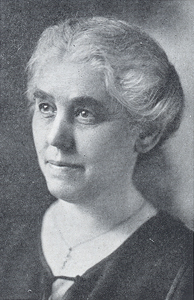 The hall was named for Anna B. Herrig, an assistant professor of Psychology and Education from 1921 to 1938. Herrig was born in Saginaw on October 27, 1866. She graduated from Arthur Hill High School. In 1891, she became the first recipient
in the United States of the new certificate to teach at Normal Schools, the old name for teacher education centers. She studied at Columbia, Harvard, Clark, and the University of Chicago. She spent time as the principal of training
schools in South Dakota and Nebraska, taught in New Paltz, New York for twelve years, and came to Central Michigan to teach in the Department of Psychology and Education in 1921. In addition to her teaching, she started a World Acquaintance
Tour, a Negro Acquaintance Tour, a Sherwood Eddy Conference, a YWCA Mercier Breakfast, and an annual Christmas party at the Mount Pleasant Indian School. She died on August 11, 1938.
The hall was named for Anna B. Herrig, an assistant professor of Psychology and Education from 1921 to 1938. Herrig was born in Saginaw on October 27, 1866. She graduated from Arthur Hill High School. In 1891, she became the first recipient
in the United States of the new certificate to teach at Normal Schools, the old name for teacher education centers. She studied at Columbia, Harvard, Clark, and the University of Chicago. She spent time as the principal of training
schools in South Dakota and Nebraska, taught in New Paltz, New York for twelve years, and came to Central Michigan to teach in the Department of Psychology and Education in 1921. In addition to her teaching, she started a World Acquaintance
Tour, a Negro Acquaintance Tour, a Sherwood Eddy Conference, a YWCA Mercier Breakfast, and an annual Christmas party at the Mount Pleasant Indian School. She died on August 11, 1938.
Industrial Education and Technology (IET) Building
Opened 1989
Cost: $16.2 million
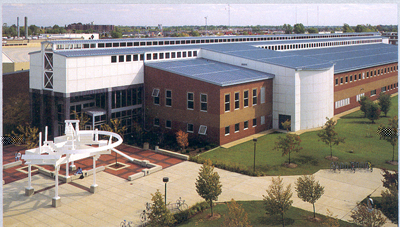 Central Michigan University first discussed and authorized the planning for a new building in which its Industrial and Engineering Technology Department (IET) and classes could be housed in 1973. Lack of funding delayed its construction until
1985, when funding was finally approved and architectural plans began to be developed. In preparation for the design phase, IET faculty traveled to a number of institutions with recently-installed technology similar to that planned for
CMU's new building. In addition to several smaller institutions, faculty visited Purdue University and the General Motors Institute in Flint.
Central Michigan University first discussed and authorized the planning for a new building in which its Industrial and Engineering Technology Department (IET) and classes could be housed in 1973. Lack of funding delayed its construction until
1985, when funding was finally approved and architectural plans began to be developed. In preparation for the design phase, IET faculty traveled to a number of institutions with recently-installed technology similar to that planned for
CMU's new building. In addition to several smaller institutions, faculty visited Purdue University and the General Motors Institute in Flint.
The final designs were submitted by architectural firm Daverman and Associates of Grand Rapids. The $16.2 million project, which included over $6 million for equipment, called for a two-story, 110,000 square foot structure that would stretch for a tenth of a mile in length. The building would also be the first at a Michigan college or university with money set aside for state "art in public places" legislation. Located southeast of Moore Hall and to the north of Woldt Hall, the building would be constructed on the site of an existing parking lot that contained almost 300 spaces.
The Christman Company of Lansing was awarded the construction contract, which totaled just under $9 million, and construction began in June 1987. Construction was hampered by a few problems, including a small fire that caused some damage in the summer of 1988. More seriously, an electrical worker on the project was killed in December 1988. Harry Millard, a 36-year old Beal City man and an employee of Kempf Electric, died while installing electrical components in the new building.
Although the original completion date was planned for November of 1988, construction crews were still working when students entered the building for classes in January 1989. The building was officially dedicated in October of that year, when Secretary of State John Engler, former CMU president Arthur Ellis, and other dignitaries toured the facility. University officials decided that rather than dedicating the building in honor of a person, it would remain the Industrial Education and Technology Building. While most buildings on campus bear the name of a person, and while the faculty of IET had suggested a name, the Board of Trustees decided to adhere to a policy of refusing to name buildings after people who are still alive, although they had broken this policy in the past. The structure remains the Industrial Education and Technology Building today.
Regardless of its name, the building proved a huge benefit for the IET department. Formerly housed in the tight confines of Wightman Hall, the usable square footage for the department grew from 21,000 to 110,000 with their move into the new facilities. The IET Building featured 30 laboratories equipped for instruction in electronics, plastics, graphics, energy, drafting, and other fields. Additionally, the building contained cutting edge technology, including 3-dimensional engineering graphics and design capabilities and facilities specializing in robotic vision. The new building provided ample space for the still-growing IET department, which at the time of the move had 14 faculty members, 400 majors, and 200 minors. This department has since become the School of Engineering and Technology.
Indoor Athletic Complex (IAC)
Opened: 1999
Cost: $27 million
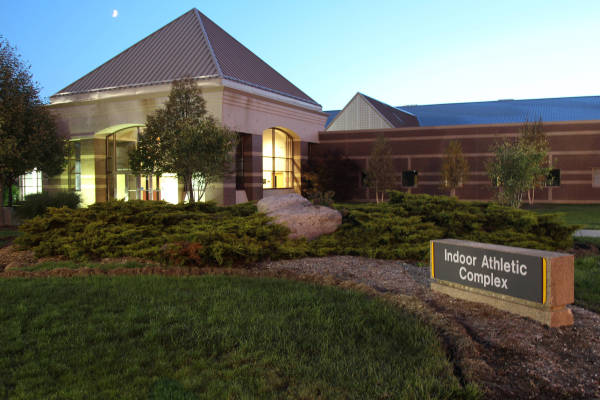 In January 1997, the Board of Trustees approved $27 million to fund the planning and construction of a new indoor sports complex. The project also included a significant expansion to Kelly/Shorts Stadium. Funds would be raised
through a bond and through private contributions. Donations would be encouraged through sales of bricks that would be imprinted with a donor's personalized message and then arranged in a plaza at the entrance to the expanded
stadium. University officials argued that the construction and expansion were necessary to keep pace with the Mid-American Conference and NCAA Division I-A competition and compliance.
In January 1997, the Board of Trustees approved $27 million to fund the planning and construction of a new indoor sports complex. The project also included a significant expansion to Kelly/Shorts Stadium. Funds would be raised
through a bond and through private contributions. Donations would be encouraged through sales of bricks that would be imprinted with a donor's personalized message and then arranged in a plaza at the entrance to the expanded
stadium. University officials argued that the construction and expansion were necessary to keep pace with the Mid-American Conference and NCAA Division I-A competition and compliance.
The Indoor Athletic Complex was designed by architect Richard Black. Groundbreaking took place at a pregame homecoming ceremony on October 11, 1997. The $28 million project called for an indoor athletic facility to be built on the west side of Kelly/Shorts Stadium. There would be a new outdoor track just south of the facility as well. Construction of the project forced the relocation of intramural athletic competition, which was moved to a parcel of university-owned land on the corner of Broomfield and Crawford Roads west of Kewadin Village that had previously been leased as farm land. The University allocated $775,000 to build the new intramural facilities, which would provide better drainage and offer lighting for night games on most of the fields. During construction, CMU intramural softball was temporarily moved to the fields at Island Park, while soccer and flag football were able to remain at the old fields along West Campus Drive east of Kewadin Village.
The interior of the new complex was designed to offer state-of-the-art practice facilities to athletes and athletic faculty at CMU. The complex was designed in two major sections. One section would be used by softball, baseball, field hockey, and football as a fully-equipped practice facility. The other section would house men's and women's track. In addition, there was a weight and training room as well as academic enhancement facilities. The complex featured a 100-yard field that could be used by a variety of teams, a 200-meter indoor track, and a variety of academic labs for student athlete use.
Construction on the project proceeded rapidly, and the entire complex (including the expansion to Kelly/Shorts Stadium) was dedicated at a home football game on September 12, 1998. Over 26,000 were in attendance to witness the ribbon cutting ceremony, which was conducted by President Leonard Plachta, architect Richard Black, and several members of CMU athletic teams.
Kelly/Shorts Stadium
Opened: 1972
Cost: $2.5 million
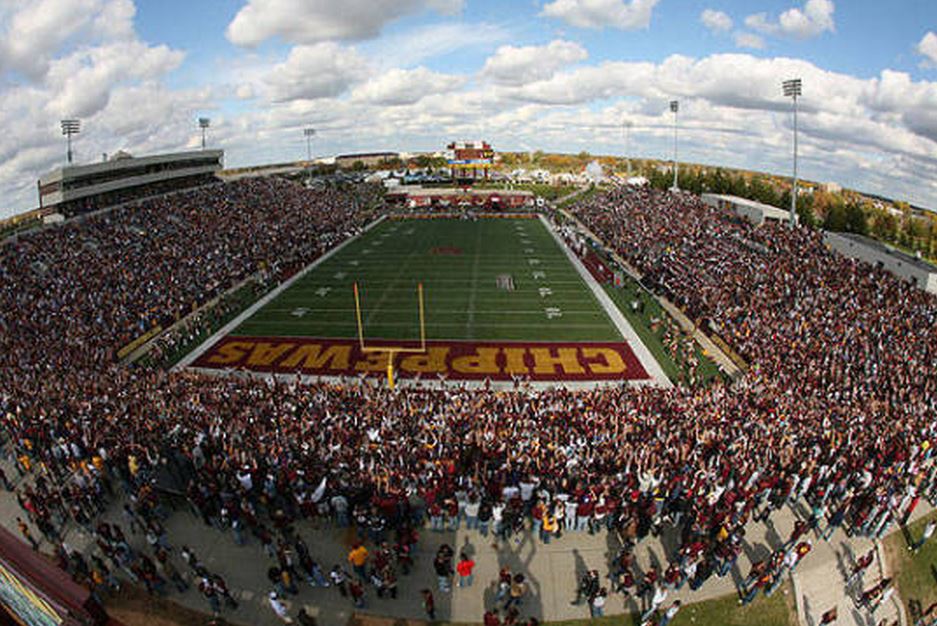 Central's football team played games at Alumni Field when University officials began discussing plans for a new football stadium in the mid-1960s. Alumni Field could only seat a few thousand spectators comfortably,
and the continued growth of the University meant an alternative would have to be found. The University was also under pressure to keep up with other Michigan schools, including the University of Michigan and
Michigan State University, which had recently updated their football stadiums. Proposals for the new facility included a domed events center that, although costly, could be used year-round for a wide variety
of events. The domed concept was abandoned in 1971 when the University announced the planned construction of an outdoor football stadium and a separate events center nearby.
Central's football team played games at Alumni Field when University officials began discussing plans for a new football stadium in the mid-1960s. Alumni Field could only seat a few thousand spectators comfortably,
and the continued growth of the University meant an alternative would have to be found. The University was also under pressure to keep up with other Michigan schools, including the University of Michigan and
Michigan State University, which had recently updated their football stadiums. Proposals for the new facility included a domed events center that, although costly, could be used year-round for a wide variety
of events. The domed concept was abandoned in 1971 when the University announced the planned construction of an outdoor football stadium and a separate events center nearby.
The project officially began in November 1971, when football coach Roy Kramer presided over the groundbreaking ceremony. The decision to use AstroTurf caused some controversy on campus, but designers sided with its versatility over traditional grass. The $2.5 million project was completed in under a year, although heavy rain delayed the final stages of construction and the opening ceremonies by about a month. The stadium was officially dedicated in November 1972. Its original seating capacity was just over 20,000. The original stadium included a 12-foot high statue designed by Greg Mierka, a Mt. Pleasant graduate art student.
The facility was originally named Perry Shorts Stadium in honor of R. Perry Shorts, a Saginaw banker who was a 1900 graduate of Central Michigan and a generous donor. In June of 1983, the CMU Board of Trustees voted
to rename the stadium Kelly/Shorts Stadium in honor of Kenneth "Bill" Kelly, who coached the Chippewa football team to a 91-58-2 record from 1951 to 1966.
The first game played at Perry Shorts Stadium was a Homecoming victory over Illinois State on November 4, 1972. This was the first collegiate game played on AstroTurf in Michigan. Since 1972, the turf has been replaced
three times, in 1983, 1993, and with FieldTurf artificial grass in 2004. In 1986, a $140,000 scoreboard complete with a full-color message center was erected at the south end of the stadium. In addition, Kelly/Shorts
also received a new auxiliary scoreboard in the north end zone. A $550,000 renovation to the locker room complex was completed prior to the start of the 1996 season.
The stadium was expanded following the 1997 football season as a part of a $28 million athletic facilities expansion that included the construction of the Indoor Athletic Complex. A total of 10,000 seats were added and the old press box was replaced by a two-tiered press box. The lower deck featured nine guest suites and the upper deck offered space for radio, television, and newspaper media. Coaches' booths and game operations are also on this level. Beginning in 2004, multiple upgrades to the stadium were made including FieldTurf (2004), new lighting (2006), a video scoreboard (2007), and the addition of the Chippewas Varsity Shop (2009).
Kesseler Hall
Opened: 2003
Cost: $33 Million (entire three-building project)
Capacity: 714 (entire three-building project)
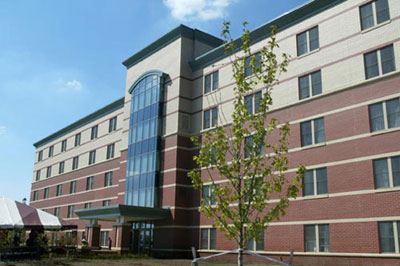 In the fall of 2001, University officials announced plans for the construction of a new high rise residence hall project which would be built as an addition to the existing Towers complex, originally completed
in 1969-70. The first new residence halls to be built by the University in over 30 years, the $33 million housing complex would add an additional 238,000 square feet to the existing complex. Plans for
the project were created by architects at Design Plus in Grand Rapids. The Christman Company of Lansing, which constructed the original Towers project, received the contract for the new buildings as
well as the $8 million in renovations planned for the existing dormitories.
In the fall of 2001, University officials announced plans for the construction of a new high rise residence hall project which would be built as an addition to the existing Towers complex, originally completed
in 1969-70. The first new residence halls to be built by the University in over 30 years, the $33 million housing complex would add an additional 238,000 square feet to the existing complex. Plans for
the project were created by architects at Design Plus in Grand Rapids. The Christman Company of Lansing, which constructed the original Towers project, received the contract for the new buildings as
well as the $8 million in renovations planned for the existing dormitories.
Construction officially began with a groundbreaking ceremony in November 2001. The plans called for a large complex that would include space for 714 additional residents, classrooms, a technology center, and a workout room. A convenience store and a DVD/video game rental outlet were also included in the original designs. Parking facilities would be redesigned so that three separate parking lots would serve the housing complex, the main one leading to a circular drive bounded by two ponds. A new security system, comprised of 54 cameras and proximity readers on exterior doors, was also installed as part of the project.
As the additions to the Towers complex neared completion in the fall of 2003, the University announced the official names of the new buildings. Kesseler Hall, which had been named previously, would be joined by Kulhavi Hall (called Gold Hall during construction) and Campbell Hall (called Maroon Hall during construction). In September, as students moved into the new residence halls, the University held an official dedication ceremony. Trustees Campbell (served 1995-2007), Kesseler (served 1991-97), and Kulhavi (served 2002-09) were honored in front of around 300 CMU alumni and donors and President Michael Rao gave a speech.
That same month, residents of the Towers complex held a pep rally to encourage unity among the old and new buildings. Around 1,500 student residents gathered at the intramural fields in an event sponsored by the seven buildings that make up the Towers complex. The event not only encouraged closer ties between residents of different buildings, it also kicked off the annual year-long challenge between residents of those buildings.
Kewadin Village
Opened: 1971
Cost: $1.75 Million
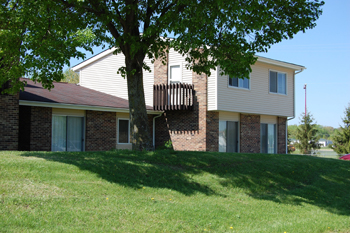 Kewadin Village was the last of a series of married student housing complexes built during a period of increasing enrollment in the 1950s and 1960s. Even after the construction of Washington
Court, Preston Court, and Northwest Apartments, demand for married student housing remained high on campus. In 1969, the University began discussing plans for a 100-unit complex of married
student apartments to be built on the southwest corner of campus, near the new Towers residence hall complex. Once Federal funding was secured, trustees approved the plans and construction
was underway.
Kewadin Village was the last of a series of married student housing complexes built during a period of increasing enrollment in the 1950s and 1960s. Even after the construction of Washington
Court, Preston Court, and Northwest Apartments, demand for married student housing remained high on campus. In 1969, the University began discussing plans for a 100-unit complex of married
student apartments to be built on the southwest corner of campus, near the new Towers residence hall complex. Once Federal funding was secured, trustees approved the plans and construction
was underway.
The complex, known as Broomfield Married Student Housing while under construction, was designed by Wakely, Kushner, & Wakely Associates of Mt. Pleasant. Designs featured townhouse-style apartments similar to those recently built in Northwest Apartments. The construction contract was awarded to Kwaske Brothers Company of Jackson, who broke ground on the $1.75 million complex in November 1970.
The married student housing complex opened as Kewadin Village in September 1971. It consisted of 20 three-bedroom apartments, 40 two-bedroom apartments, and 40 one-bedroom apartments. Kewadin Village, along with the three southern residence hall quads and the newly constructed athletic facilities, shifted many campus activities to the south side of campus. As a result, Broomfield Road was widened to four lanes in 1972. Kewadin Village continues to serve faculty, nontraditional students, and students with families today.
Kulhavi Hall
Opened: 2003
Cost: $33 Million (entire three-building project)
Capacity: 714 (entire three-building project)
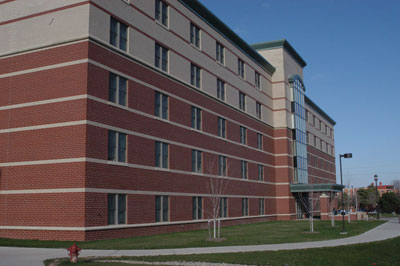 In the fall of 2001, University officials announced plans for the construction of a new high rise residence hall project which would be built as an addition to the existing Towers complex, originally
completed in 1969-70. The first new residence halls to be built by the University in over 30 years, the $33 million housing complex would add an additional 238,000 square feet to the existing complex.
Plans for the project were created by architects at Design Plus in Grand Rapids. The Christman Company of Lansing, which constructed the original Towers project, received the contract for the new
buildings as well as the $8 million in renovations planned for the existing dormitories.
In the fall of 2001, University officials announced plans for the construction of a new high rise residence hall project which would be built as an addition to the existing Towers complex, originally
completed in 1969-70. The first new residence halls to be built by the University in over 30 years, the $33 million housing complex would add an additional 238,000 square feet to the existing complex.
Plans for the project were created by architects at Design Plus in Grand Rapids. The Christman Company of Lansing, which constructed the original Towers project, received the contract for the new
buildings as well as the $8 million in renovations planned for the existing dormitories.
Construction officially began with a groundbreaking ceremony in November 2001. The plans called for a large complex that would include space for 714 additional residents, classrooms, a technology center, and a workout room. A convenience store and a DVD/video game rental outlet were also included in the original designs. Parking facilities would be redesigned so that three separate parking lots would serve the housing complex, the main one leading to a circular drive bounded by two ponds. A new security system, comprised of 54 cameras and proximity readers on exterior doors, was also installed as part of the project.
As the additions to the Towers complex neared completion in the fall of 2003, the University announced the official names of the new buildings. Kesseler Hall, which had been named previously, would be joined by Kulhavi Hall (called Gold Hall during construction) and Campbell Hall (called Maroon Hall during construction). In September, as students moved into the new residence halls, the University held an official dedication ceremony. Trustees Campbell (served 1995-2007), Kesseler (served 1991-97), and Kulhavi (served 2002-09) were honored in front of around 300 CMU alumni and donors and President Michael Rao gave a speech.
That same month, residents of the Towers complex held a pep rally to encourage unity among the old and new buildings. Around 1,500 student residents gathered at the intramural fields in an event sponsored
by the seven buildings that make up the Towers complex. The event not only encouraged closer ties between residents of different buildings, it also kicked off the annual year-long challenge between
residents of those buildings.
Larzelere Hall
Opened September 1957
Cost: $1.22 million
Capacity: 324
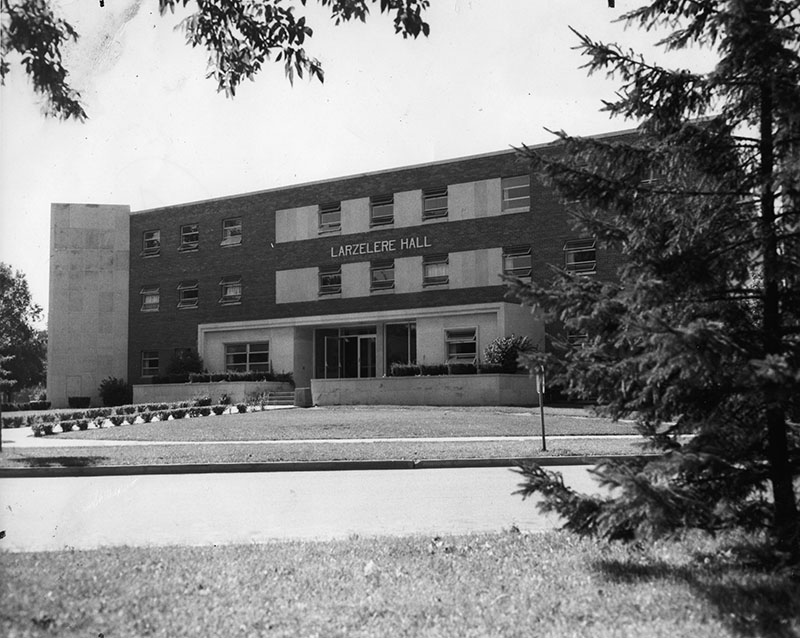 Larzelere Hall was the second residence hall built in what would eventually become a quadrangle on the northwest side of campus. The location of this quad was the site of the Vetville
complex that temporarily housed veterans after the Second World War, although by the time construction started on Larzelere, the barracks that had once stood there had been sold and
removed. Its architectural plans were closely based on Robinson Hall, next to which it was situated. The interior plans copied those developed for Tate Hall the previous year, which
featured a suite-style layout that would heavily influence residence hall design until the construction of the Towers complex in the late 1960s. Larzelere Hall shares a dining commons
with Robinson, Calkins, and Trout Halls.
Larzelere Hall was the second residence hall built in what would eventually become a quadrangle on the northwest side of campus. The location of this quad was the site of the Vetville
complex that temporarily housed veterans after the Second World War, although by the time construction started on Larzelere, the barracks that had once stood there had been sold and
removed. Its architectural plans were closely based on Robinson Hall, next to which it was situated. The interior plans copied those developed for Tate Hall the previous year, which
featured a suite-style layout that would heavily influence residence hall design until the construction of the Towers complex in the late 1960s. Larzelere Hall shares a dining commons
with Robinson, Calkins, and Trout Halls.
The $1.22 million building was designed by Roger Allen of Grand Rapids, who designed many of the other residence halls built during the period of campus expansion in the 1950s and 1960s. The building was opened for occupancy in September 1957 and officially dedicated on May 18, 1958. It was built as a men's residence, which it remained until 1959. Women lived there from 1959 to 1970, after which it became coed. It was designated the Honors residence hall in 1972.
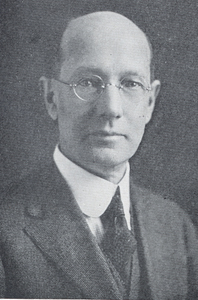 The building was named for the longtime head of the Department of History and Social Sciences. Claude S. Larzelere headed that department from 1900 to 1939. He was born in 1866 in Iowa.
He received his Bachelor of Literature from the University of Michigan and did graduate study at the University of Chicago and Oxford University. He received his MA from Harvard
in 1900. Before coming to Central, he was the superintendent of schools at Lowell, Michigan and Jefferson, Ohio. In 1912, he received an honorary Master of Pedagogy from the State
Normal School at Ypsilanti (Eastern Michigan University). Larzelere specialized in Michigan history and government, topics on which he wrote several books and articles. He traveled
extensively, visiting Europe, Egypt, and Palestine. He and his wife Lorena had two sons and a niece who lived with them. He died on January 20, 1946.
The building was named for the longtime head of the Department of History and Social Sciences. Claude S. Larzelere headed that department from 1900 to 1939. He was born in 1866 in Iowa.
He received his Bachelor of Literature from the University of Michigan and did graduate study at the University of Chicago and Oxford University. He received his MA from Harvard
in 1900. Before coming to Central, he was the superintendent of schools at Lowell, Michigan and Jefferson, Ohio. In 1912, he received an honorary Master of Pedagogy from the State
Normal School at Ypsilanti (Eastern Michigan University). Larzelere specialized in Michigan history and government, topics on which he wrote several books and articles. He traveled
extensively, visiting Europe, Egypt, and Palestine. He and his wife Lorena had two sons and a niece who lived with them. He died on January 20, 1946.
Margo Jonker Stadium
Opened: 2008
Renovation Cost: $400,000
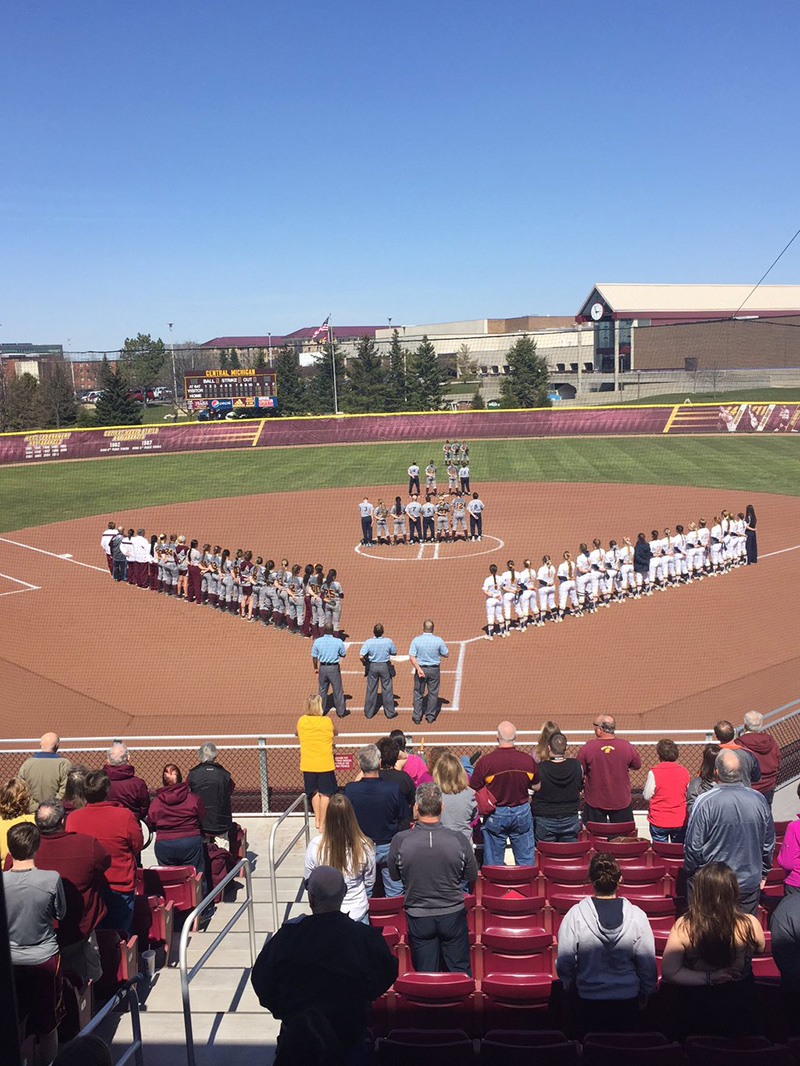 Central Michigan University's softball team moved to its current location in 1973, when new softball fields were built as part of the Rose Center athletic complex. A collection
of softball and soccer fields were installed on the south end of the Rose complex and served as the home of varsity softball during the 1970s and 1980s.
Central Michigan University's softball team moved to its current location in 1973, when new softball fields were built as part of the Rose Center athletic complex. A collection
of softball and soccer fields were installed on the south end of the Rose complex and served as the home of varsity softball during the 1970s and 1980s.
By the mid-1990s, the continued growth of the softball program at Central made improving the facilities a priority for the athletic department. As a result, the Board of Trustees approved $250,000 for improvements to the softball fields in 1995. Changes to the facility included the renovation of the main existing field into a more sophisticated softball complex, the addition of a press box, installation of restrooms, and the construction of a concessions building. The new Rose Softball Complex was dedicated in April 1998.
In 2006, the University announced plans for a renovation of the Rose Softball Complex. A total of $400,000 was used to replace older features of the ballpark, install new netting on the cages and bullpens, restore windows in the press box, and add a supplementary batting cage. Two ramps were also installed in the seating section to accommodate Americans with Disabilities Act standards. Seating capacity was also increased with the addition of new chairback seating, which increased the total seating capacity to 286.
The renovated stadium opened in April 2008 as Margo Jonker Stadium. Margo Jonker, softball coach at CMU, pulled off the curtain unveiling the new name and threw out the first pitch to inaugurate the new stadium. President Michael Rao and several other dignitaries were also in attendance. The decision to name the stadium after Jonker represented a departure for the University in multiple ways. Jonker was still alive, and indeed still coaching, at the time of the dedication. Further, officials decided to include both the first and last name as part of the stadium's official name, breaking with the naming tradition for most buildings on campus.
Margo Jonker is the winningest softball coach in CMU history. She started at Central in 1980 after a short tenure at Grand Valley State College. She retired in 2019. During her 40 seasons at Central, she posted a 1,268-808-7 record, ranking her eleventh all-time among college coaches. She is a member of five Halls of Fame and was the 1987 NCAA Mideast Region Coach of the Year and the Great Lakes Region Coach of the year in 1994 and 2000. She has also been named MAC coach of the year ten times. Under her leadership, the Chippewas made thirteen trips to the NCAA tournament and have captured ten MAC regular season titles and ten MAC Tournament championships.
Merrill Hall
Opened: 1960
Cost: $1.44 Million
Capacity: 288
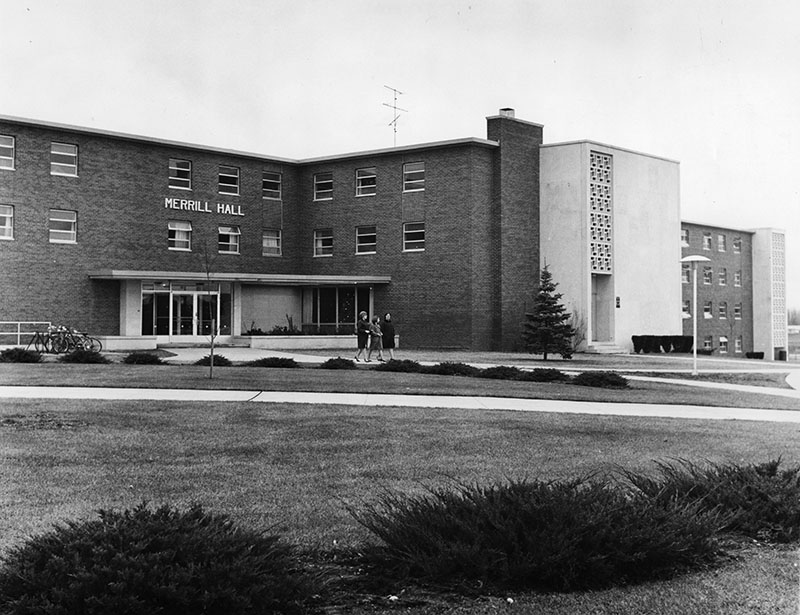 Merrill Hall was the first residence hall built in a quadrangle on what was then the southern extreme of campus. Merrill, along with Beddow, Thorpe, and Sweeney Halls,
was located south of Washington Court and far from any classroom or other campus buildings. There were no sidewalks, streetlights, or public transportation when the
first inhabitants moved in. It would be the construction of these four buildings, the southeast quad, and the Towers complex that relocated the center of campus living
southward by the 1970s. Indeed, because it was the first residence hall to open on this end of campus, it was difficult to convince to students to sign up for residency
there because the nearest academic building was Warriner Hall.
Merrill Hall was the first residence hall built in a quadrangle on what was then the southern extreme of campus. Merrill, along with Beddow, Thorpe, and Sweeney Halls,
was located south of Washington Court and far from any classroom or other campus buildings. There were no sidewalks, streetlights, or public transportation when the
first inhabitants moved in. It would be the construction of these four buildings, the southeast quad, and the Towers complex that relocated the center of campus living
southward by the 1970s. Indeed, because it was the first residence hall to open on this end of campus, it was difficult to convince to students to sign up for residency
there because the nearest academic building was Warriner Hall.
Merrill Hall was designed by architects from Roger Allen and Associates in Grand Rapids. The $1.44 million building was designed to house 288 students. The building opened in the fall of 1960 as a new men's hall, although it was not officially dedicated for another year. On November 5, 1961, Merrill was dedicated in a joint ceremony celebrating both Merrill and Sweeney Halls.
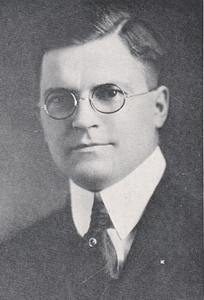 The building was dedicated in honor of the Head of the Department of Physics and Chemistry from 1921 to 1953. Ernest J. Merrill was born in 1889 in Grand Blanc, Michigan,
the son of a farmer and a teacher. He graduated from Flint High School and Albion College, and taught at Otsego and St. Joseph. He volunteered for service in World
War I, but was rejected. He worked as a chemist for the Republic Truck Company of Alma before joining Central's faculty in 1921. In addition to his teaching, he was
the advisor for the College YMCA. During his time at Central, he received his Master of Arts from the University of Michigan and his Ph.D. from the same institution
in 1929. He and his wife, Pearl, had one daughter and one son. Merrill retired in 1953 and died in 1958.
The building was dedicated in honor of the Head of the Department of Physics and Chemistry from 1921 to 1953. Ernest J. Merrill was born in 1889 in Grand Blanc, Michigan,
the son of a farmer and a teacher. He graduated from Flint High School and Albion College, and taught at Otsego and St. Joseph. He volunteered for service in World
War I, but was rejected. He worked as a chemist for the Republic Truck Company of Alma before joining Central's faculty in 1921. In addition to his teaching, he was
the advisor for the College YMCA. During his time at Central, he received his Master of Arts from the University of Michigan and his Ph.D. from the same institution
in 1929. He and his wife, Pearl, had one daughter and one son. Merrill retired in 1953 and died in 1958.
Moore Hall and Bush Theater
Opened: 1971
Cost: $5.25 Million
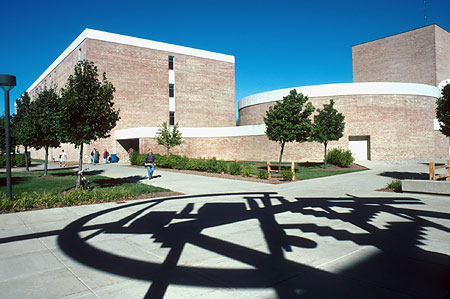 University officials announced plans for the construction of a new speech and dramatic arts building in the mid-1960s. Architectural plans, designed by Roger Allen and
Associates of Grand Rapids, were completed by 1967. The new building would be located near Ottawa Court and Franklin Street, on a site occupied by the small headquarters
of Campus Security, which relocated to a house on Preston in preparation for construction of the new building.
University officials announced plans for the construction of a new speech and dramatic arts building in the mid-1960s. Architectural plans, designed by Roger Allen and
Associates of Grand Rapids, were completed by 1967. The new building would be located near Ottawa Court and Franklin Street, on a site occupied by the small headquarters
of Campus Security, which relocated to a house on Preston in preparation for construction of the new building.
Designs called for a large L-shaped building. One wing would be four stories and would house classrooms, offices, and the new speech and hearing clinic. The other wing would be a single story collection of offices, shops, educational television and radio departments, and the theatre complex. The two wings were to be connected by a kiva theatre-in-the-round.
The $5.25 million structure was partially financed by a $1 million Federal grant under the Higher Education Facilities Act of 1963. The remaining $4.25 million came from state funds. Initial bids for the project were too high, and the lack of adequate funding resulted in a 20% reduction in the planned size of the building and a smaller-than-expected budget for the radio and television operations. The building was originally designed to meet the demands of the campus community for several years into the future, but the cuts in space and operating budgets meant it was near capacity when it opened.
In the end, the Miller-David Company of Kalamazoo was awarded the contract and began construction with a groundbreaking ceremony in March 1969. The construction process met with several challenges besides the budgetary concerns. Color schemes for the new building were the major source of disagreement in the months before the Department of Broadcasting and Cinematic Arts (BCA) moved in. Don McDonald, of McDonald and Associates, wanted shades of brown throughout the building, but the building committee, made up of faculty members of the department, wanted no browns. Jerry Anderson, who was the head of BCA, accused McDonald of having "a hang-up" on brown tones in several letters to Controller Norvall Bovee. The problems were eventually ironed out, but further color problems caused more uproar in December 1970. There was some question of whether the Department Chair's office should be decorated in blue or red, but this, too, was eventually settled.
Also causing problems was the timetable set for the departments to move into the new building. The original plans called for them to move over the Christmas break between fall 1970 and spring 1971 semesters. The faculty complained, the date of relocation was eventually moved to Easter Break during spring 1971. The radio station moved from its former home in Warriner at the end of the spring semester. Classes were first held in the new building on March 29, 1971.
Although the construction of Moore Hall faced significant challenges, the opening of the theatre complex within Moore expanded the University Theatre's capacity and flexibility for the 1971 theatre season and beyond. The complex consisted of four separate theatres of varying size and function. The Platform Theatre, the smallest of the group, was about the size of a small lecture room and was designed with interpretive readings in mind. The Kiva, or the theatre-in-the-round, contained 300 seats, although its opening was delayed because of acoustical problems. The Theatre-On-The-Side, which seats up to 250 people, was designed to allow for the rectangular space to be organized as an arena or a semi-arena, depending on the arrangement of stage and seating.
While the three small theatres increased the production flexibility of the University Theatre, the opening of the Bush Theatre represented the most significant improvement of theatre facilities on campus. The theatre had a capacity of 500 and was constructed in such a way so that seats in the back were elevated above the stage to facilitate easy viewing for all audience members. When it opened, the Bush also featured an Electro Controls Mark IV Microset Lighting Control Board, a computerized magnetic tape switchboard that regulated lighting and stage effects throughout an entire production. Capable of storing up to 2,000 separate light cues in a single performance, the control board in Bush was the only one of its kind in the United States at the time.
The expansion of the University's theatre facilities opened new possibilities for the University Theatre, which made full use of the new theatre space in the inaugural season of 1971. Some of the productions from the opening season of Bush Theatre included Indians (by Arthur Kopit, directed by J. Alan Hammack) and The Lady's Not For Burning (by Christopher Fry, directed by Elbert R. Bowen). Two contemporary operas, one by Gilbert and Sullivan and the other by Leonard Bernstein, were also produced that academic year. 1971 also represented the first season in which season tickets for University Theatre productions were made available.
Moore Hall was named for the Wilbur Moore (pictured above), Vice President of Academic Affairs from 1959 to 1970. He was part of the CMU faculty for twenty years, serving
as the head of the Speech and Drama department from 1939 to 1947, the Director of the Division of Clinical Services from 1947 to 1956, and the Dean of Psychology and
Educational Services from 1956-1959. Moore was an expert on stuttering and voice problems who had taught at Colorado, Kent State, and the University of Iowa before
joining Central's faculty. He retired in 1970 and died in June of 1988 at the age of 84. Bush Theatre was named for Fred R. Bush (pictured at right), who served as
assistant professor of speech and director of dramatics and University Theatre from 1939 until his death in 1964.
Music Building
Opened: 1997
Cost: $21 Million
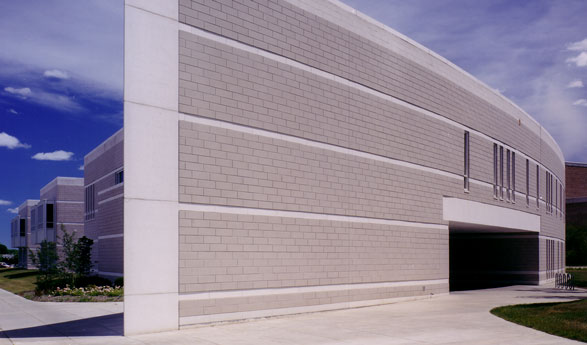 Central Michigan University's School of Music is one of the oldest academic units on campus. Its lack of a permanent home, however, resulted in a decade-long drive to
build a state-of-the-art music building by the early 1990s. At this point, the department was in desperate need of new quarters. Having moved into Powers Hall (the
former Keeler Union) in 1961 after moving around campus for decades, the Music Department faced several challenges. Sound management, made difficult by disturbing
sounds throughout the building and reverberation throughout the structure, hampered both learning and performance. A lack of large performance spaces and insufficient
practice areas were another problem. To compound these issues, enrollment in the music program increased dramatically, like the enrollment of many other Central programs,
during the 1950s and 1960s.
Central Michigan University's School of Music is one of the oldest academic units on campus. Its lack of a permanent home, however, resulted in a decade-long drive to
build a state-of-the-art music building by the early 1990s. At this point, the department was in desperate need of new quarters. Having moved into Powers Hall (the
former Keeler Union) in 1961 after moving around campus for decades, the Music Department faced several challenges. Sound management, made difficult by disturbing
sounds throughout the building and reverberation throughout the structure, hampered both learning and performance. A lack of large performance spaces and insufficient
practice areas were another problem. To compound these issues, enrollment in the music program increased dramatically, like the enrollment of many other Central programs,
during the 1950s and 1960s.
By the early 1980s, several University administrators were tentatively discussing plans for a new music building. Initial plans were approved by the state of Michigan in 1983, but a final cost estimate was not delivered until 1986. Funding was not approved until 1994, and construction finally began on August 1, 1995. The building was designed by architect Harley Ellington Design of Southfield. Construction was done by Three Rivers Construction in Midland, which had the building ready to open by the fall of 1997. With a total cost of $21 million, the building contained 119,000 square feet of usable space that included a 500-seat recital hall and a 110-seat chamber hall. There were also rehearsal rooms, music technology laboratories, teaching studios, practice rooms, and offices.
Both visual and acoustic characteristics were given careful consideration during the design and construction phases. The building was designed with a light-colored limestone masonry exterior and a white interior accented by an abundance of natural daylight. Natural maple wood and a dark purple palette offset the lighter tones throughout the building. Acousticians from the Talaske Group of Chicago helped design some of the advanced acoustic features within the structure, including soundproofing technology between rooms and adjustable acoustical shells that could be raised or lowered depending on the type of performance underway in a performance hall. The building itself is actually composed of three separate buildings joined by two-inch wide silicone and rubber joints designed to dampen the transfer of sound between buildings.
The new Music Building was equipped with some of the most advanced music technology available at the time. New instruments and equipment were purchased with some of the funds. The Music Department actually sold 33 pianos in preparation for the arrival of new ones. The large recital hall featured a state-of-the-art sound system for recording performances, light and audio control booths, surround sound capability, and a fiber optic system that allowed CMU public broadcasting to play live performances on the air. The performance hall also featured a new concert grand organ that was custom built for CMU by Casavant Frères, a Canadian company that has been handcrafting organs since 1879. The organ features three keyboards, a pedal board, and a total of 3,321 pipes ranging from 8 inches to 20 feet in length. The organ alone took two months to install and calibrate.
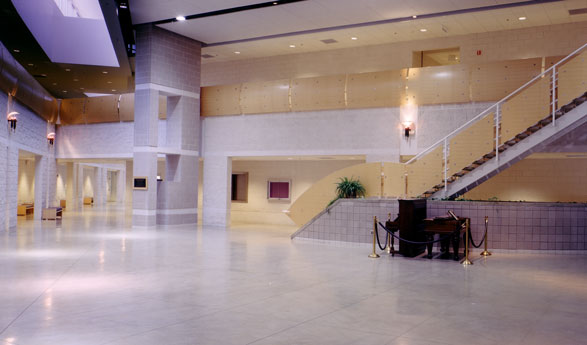 Although colloquially referred to as the Music Building, the structure itself has no official name. However, several rooms within the building have been named in honor
of CMU alumni and former faculty. The Norman C. Dietz Band Hall was named after the director of CMU bands during the 1950s and 1960s. The GR "Rollie" and Olga J. Denison
Music Resource Center is named after two graduates and ardent supporters of the CMU music program. The Nancy Page Smith Viola Studio is named after a former string
teacher in the Mt. Pleasant Public School system. Many other rooms within the building are similarly dedicated.
Although colloquially referred to as the Music Building, the structure itself has no official name. However, several rooms within the building have been named in honor
of CMU alumni and former faculty. The Norman C. Dietz Band Hall was named after the director of CMU bands during the 1950s and 1960s. The GR "Rollie" and Olga J. Denison
Music Resource Center is named after two graduates and ardent supporters of the CMU music program. The Nancy Page Smith Viola Studio is named after a former string
teacher in the Mt. Pleasant Public School system. Many other rooms within the building are similarly dedicated.
The Music Building underwent a $425,000 repair project in 2008. The top three courses of exterior masonry, or about 3,400 blocks of limestone, were replaced in their entirety.
Additionally, another 130 blocks from various locations around the structure were cracked and were also replaced. The building continues to be the home the School
of Music today.
North Art Studios
Opened: 1976
Cost: $650,000
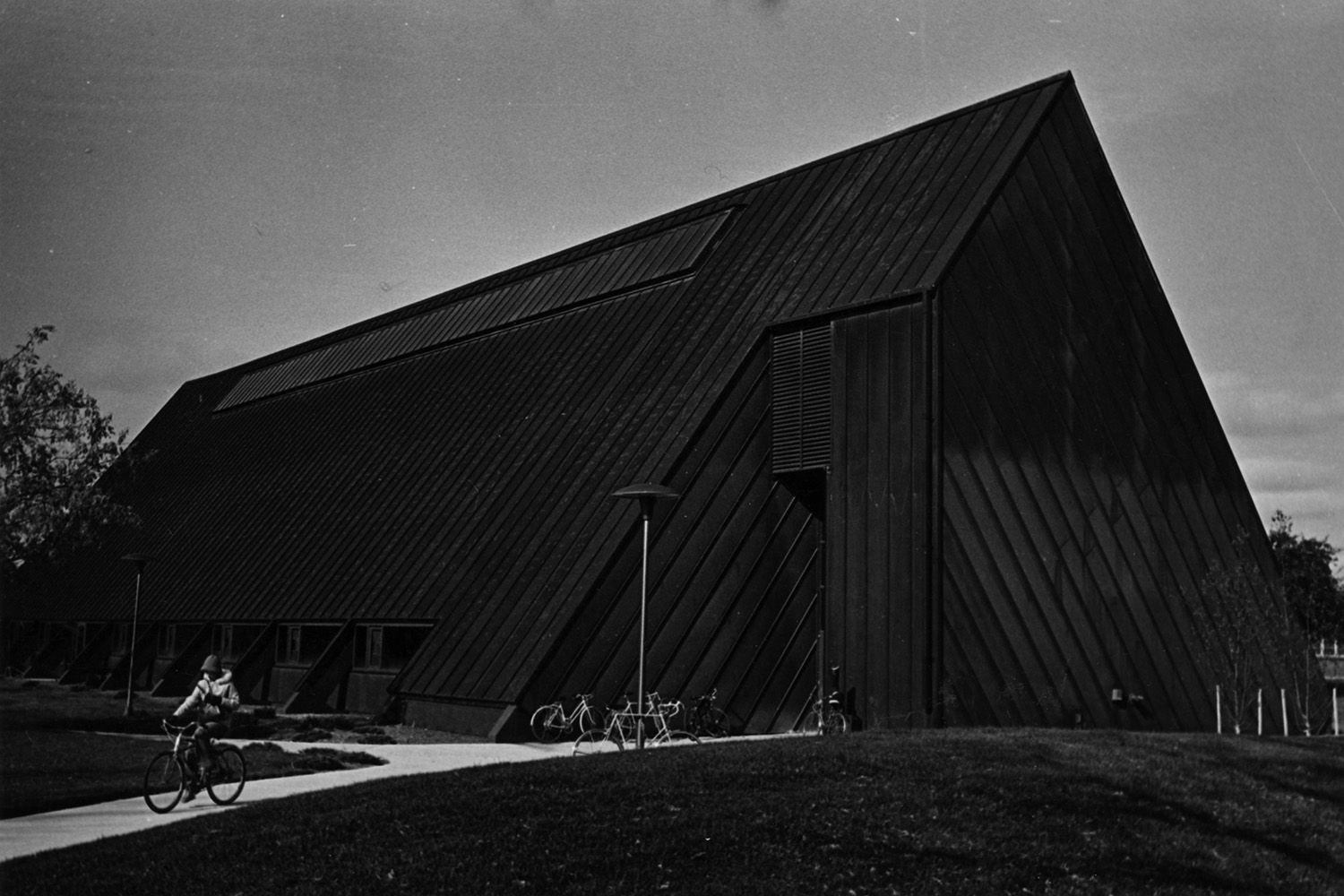 In the fall of 1975, University administrators proposed the construction of a new art facility to replace the outdated and sometimes even unsafe conditions of the studios
located in Pearce Hall and Ronan Hall. The building was originally projected to cost $500,000, although that figure expanded to $650,000 by the time of completion.
The building was financed completely through private funds, including private gifts from the Kresge Foundation of Troy and the Dow Foundation of Midland. Additional
funds were collected by Central Michigan University’s One Point Five development campaign.
In the fall of 1975, University administrators proposed the construction of a new art facility to replace the outdated and sometimes even unsafe conditions of the studios
located in Pearce Hall and Ronan Hall. The building was originally projected to cost $500,000, although that figure expanded to $650,000 by the time of completion.
The building was financed completely through private funds, including private gifts from the Kresge Foundation of Troy and the Dow Foundation of Midland. Additional
funds were collected by Central Michigan University’s One Point Five development campaign.
The building was designed by Alden B. Dow Associates of Midland. Dow was the son of Herbert H. Dow and a well-respected architect who worked under Frank Lloyd Wright and had worked on over 800 buildings at the time of his appointment, several of which were located in the state of Michigan. Dow also designed Foust Hall, the Health Services building on campus that had been completed in 1973. The new art building was designed as a large, single story A-frame structure rising to a peak of about 50 feet. With a partial balcony inside, half of the interior would be open to a series of skylights across the roof while the other half would contain a loft for office space and machinery. Totaling 13,000 square feet, the distinctive building also featured an exterior clad in Corten steel, which was designed to age in a very colorful rust pattern over the first five years following its installation and remain maintenance free afterward, although it failed to meet this expectation. The interior was designed as a wood frame with laminated timber and wood decking. Plans also included a provision for an entrance on the north side of the building that would connect the structure to Wightman Hall.
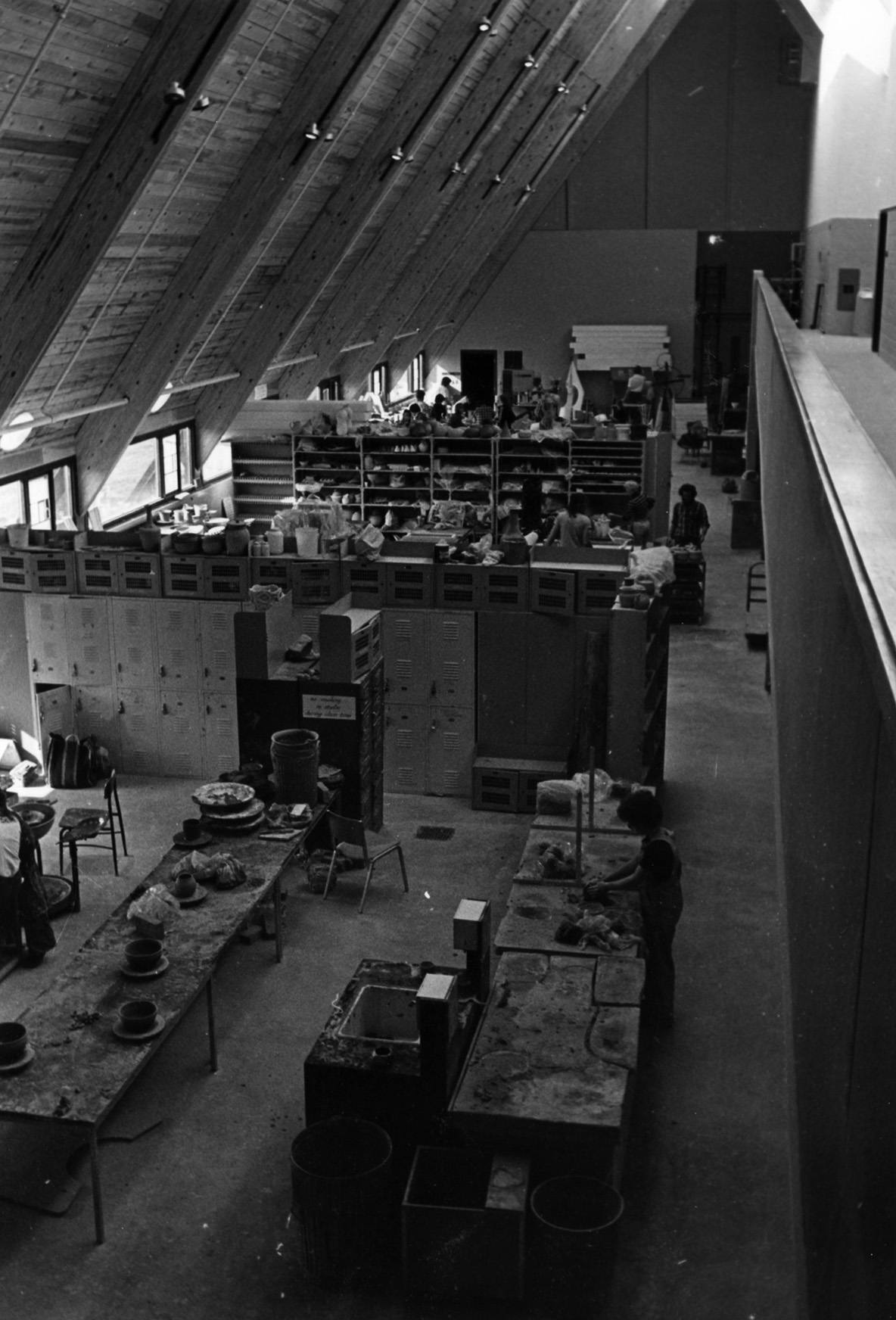 Although construction ran behind, the building was completed in 1976, and students and faculty began making use of this fully capable art studio right away. The studio
contained space and materials for three dimensional art instruction, kiln and plaster rooms, and areas for mixing clay and glazing pottery. There was additional studio-related
space and extra space for storage. A gallery was also included as part of the proposed project, but this was eventually moved to the UC Annex building due to a lack
of space in the new building.
Although construction ran behind, the building was completed in 1976, and students and faculty began making use of this fully capable art studio right away. The studio
contained space and materials for three dimensional art instruction, kiln and plaster rooms, and areas for mixing clay and glazing pottery. There was additional studio-related
space and extra space for storage. A gallery was also included as part of the proposed project, but this was eventually moved to the UC Annex building due to a lack
of space in the new building.
The North Art Studios, as faculty within the Art Department were already calling the building even before it opened, became one of several buildings within which the Art Department taught and practiced their creative skills across campus. It was not until the construction of the IET Building a decade later that the department would be consolidated into the North Art Studios and the adjacent Wightman Hall. During this renovation project, the roof and siding of the North Art Studios were replaced. Although the original roof was designed to provide its own protection through a special rust-based coating, it failed to last the expected twenty years and was completely replaced at a cost of $128,000.
Northwest Apartments
Opened: 1967
Cost: $2.4 Million
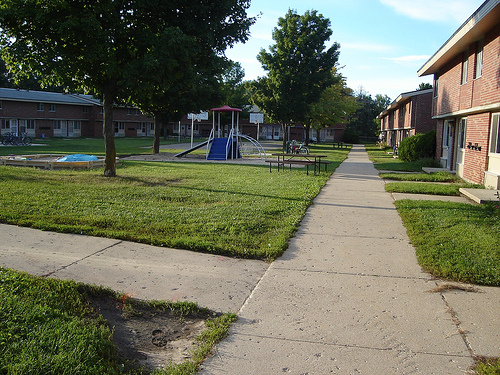 In February 1967, the University began taking bids on the construction of a new married housing complex to be built at the northwest corner of campus. The apartments would
be situated west of the railroad tracks and would be bordered on the north by M-20 and on the south by Bellows Street. Plans called for a 96-unit complex consisting of
seven buildings, one of which would contain laundry facilities. The new apartments were scheduled to be completed in time for student use in fall of 1967 and were designed
to replace the loss of married student housing in Preston Court, which was remodeled for single student use that summer. The $1,267,000 construction contract for the new
Northwest Apartments was awarded to the Miller-Davis Company of Kalamazoo, which began the project in April 1967.
In February 1967, the University began taking bids on the construction of a new married housing complex to be built at the northwest corner of campus. The apartments would
be situated west of the railroad tracks and would be bordered on the north by M-20 and on the south by Bellows Street. Plans called for a 96-unit complex consisting of
seven buildings, one of which would contain laundry facilities. The new apartments were scheduled to be completed in time for student use in fall of 1967 and were designed
to replace the loss of married student housing in Preston Court, which was remodeled for single student use that summer. The $1,267,000 construction contract for the new
Northwest Apartments was awarded to the Miller-Davis Company of Kalamazoo, which began the project in April 1967.
Although construction was scheduled for completion in time for fall, a strike among aluminum window workers delayed the project for several weeks. 48 units were opened for occupancy in September 1967, sixteen more were completed in October, and the remaining units were finished by November. By that time, the University had already announced a second, 100-unit complex to be built on the same site. Collinson Construction of Midland was awarded the $1,127,000 contract and construction was underway by October 1967. Construction was completed and the apartments were occupied by fall 1968.
Both the original 96-unit complex and the additional 100-unit complex were comprised of two-story townhouses, which provided students with a more homelike atmosphere than the dormitory-inspired apartments in Preston Court and Washington Court. Each unit had its own furnace to efficiently regulate heating. Unlike earlier married housing complexes, however, Northwest Apartments had communal laundry facilities. Northwest continues to house nontraditional students, faculty members, and students with families today.
Park Library
Opened: 1969
Renovated: 1999-2003
Renovation Cost: $50 Million
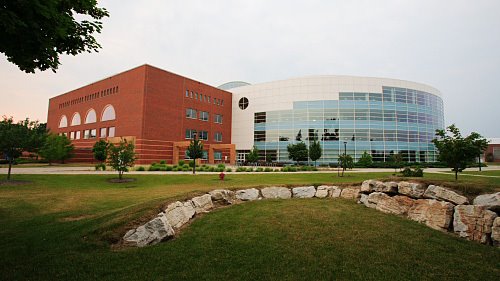 Central Michigan University proposed the construction of a new library building in the fall of 1965 to replace the existing facilities, which were constructed in 1956 and
which were increasingly inadequate for the growing campus community. That building, which eventually became Ronan Hall, was renamed the Charles V. Park Library in 1965
after the late head of Central's library (pictured below), who came to Central in 1931 after serving as the Assistant Librarian at Stanford University for fifteen years.
Central Michigan University proposed the construction of a new library building in the fall of 1965 to replace the existing facilities, which were constructed in 1956 and
which were increasingly inadequate for the growing campus community. That building, which eventually became Ronan Hall, was renamed the Charles V. Park Library in 1965
after the late head of Central's library (pictured below), who came to Central in 1931 after serving as the Assistant Librarian at Stanford University for fifteen years.
Plans for a new library, to be constructed near Brooks Hall on Preston and Franklin Streets and facing east, were compiled with the help of consultant Dr. G. Flint Purdy of Wayne State University. Roger Allen and Associates of Grand Rapids served as the designing architect, with assistance in site-planning from Daverman Associates of Grand Rapids.
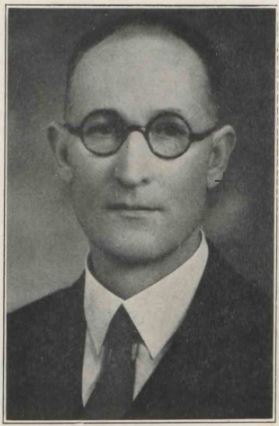 Construction bids for the project were awarded to the Miller Davis Company of Kalamazoo, who agreed to build the structure for $4,282,000. The project was financed by the
Michigan State Legislature and federal funds from the Higher Education Facilities Act of 1963. The bid was significantly lower than expected, and many students and faculty
unsuccessfully petitioned the University to use the remaining funds to purchase additional library materials.
Construction bids for the project were awarded to the Miller Davis Company of Kalamazoo, who agreed to build the structure for $4,282,000. The project was financed by the
Michigan State Legislature and federal funds from the Higher Education Facilities Act of 1963. The bid was significantly lower than expected, and many students and faculty
unsuccessfully petitioned the University to use the remaining funds to purchase additional library materials.
Groundbreaking took place in the fall of 1967. Construction was hampered by strikes among five unions working on this and other projects around campus. The cornerstone contained a time capsule that included Richard Nixon's inaugural address and a report on the war in Vietnam written by Dean Rusk, Secretary of State.
Although originally expected to open in the fall of 1968, students and faculty did not begin to use the new structure until January 1969. Workers were still finishing the project when the building was opened. For example, a marble staircase had yet to be installed upon the opening of the library, as the first staircase shattered during delivery from Italy. A private moving company, assisted by library staff and student workers, used specially built wheeled shelving units to move more than 600,000 items from the old library into the new building.
The design of the new library was based on guidelines from the American Library Association for academic libraries, with classrooms and staff working areas located around the outer halls of the building with the center areas reserved for stacks and study areas. The interior design featured color-coordinated, carpeted floors and bookshelves with ends finished in a dark wood paneling. There were carrels, or private study booths, for undergraduate students, graduate students, and faculty use. Microfilm readers were located on each floor and the new technology of microfilm reader printers was also available.
When it opened, the new Charles V. Park Library contained 180,000 square feet over four floors, an increase from the 65,000 square feet in the previous library. The new building could house over half a million volumes, doubling the library's capacity for storage. There was room for the relocation of the library sciences department and A/V services and instruction. Additionally, the Clarke Historical Library was relocated to the fourth floor of the new library, where a vault would house the most valuable books and manuscripts in the collection. The library was serviced by four separate parking lots located to the west of the building. Importantly, the building was designed with future expansion in mind. Although the new library represented a dramatic increase in both space and accessibility, plans for further growth would allow Park Library to remain a hub of research and study for Central students for decades.
Indeed, by the 1990s, students, faculty, and administrators at CMU recognized the need for expanded library facilities and services. By this point, the existing library was far too small to house its collections, let alone accommodate the students who accessed them. Reference materials had been moved to extra space in Finch Fieldhouse, and the old building had little room for improvements, like the addition of computer stations. By 1995, a substantial expansion had been proposed and renovations to the Park Library became the number one priority for State appropriations requests from the University. Plans for a new library, and the funds with which it would be built, were approved by the State in 1997.
The addition to Park Library was designed by URS Greiner Woodward Clyde, Inc. of Grand Rapids, and Woolen, Molzan, and Partners of Indianapolis. The firms solicited input from the campus community on both the aesthetic and practical designs for the new library. The final plans called for an addition that would add 125,000 square feet to the existing structure and more than double its capacity for both volumes and students. The total cost of the project reached $50 million and the Christman Company of Lansing was awarded the construction contract.
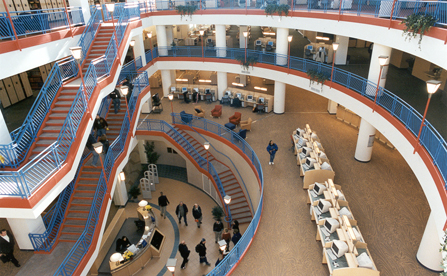 A ceremonial groundbreaking was held in April 1999 and by that summer, work was fully underway. Plans called for the addition of new space, a complete renovation of the third
and fourth floors, and significant remodeling of the first and second floors. A path that led from the University Center to Library Drive was shifted to the west and enlarged.
Additionally, the parking lot between the library and Foust Hall was enlarged and a sculpture that sat near the old library was relocated.
A ceremonial groundbreaking was held in April 1999 and by that summer, work was fully underway. Plans called for the addition of new space, a complete renovation of the third
and fourth floors, and significant remodeling of the first and second floors. A path that led from the University Center to Library Drive was shifted to the west and enlarged.
Additionally, the parking lot between the library and Foust Hall was enlarged and a sculpture that sat near the old library was relocated.
The newly renovated Charles V. Park Library officially opened on January 9, 2003. The building contained 205,526 square feet of usable space, over 400 public computer workstations, and 1,500 network connections. Housed on the 33 miles of shelving were over a million volumes, and there was enough seating for 3,500 students. A large, multimedia-equipped lecture hall created an ideal spot for visiting speakers. The Clarke Historical Library also got a new home on the first floor across the hallway from the main library. In 2012, the library celebrated the ten-year anniversary of its opening after the expansion, which represented the largest construction project to that point for the University.
Pearce Hall
Opened: September 18th, 1967
Cost: $2.65 Million
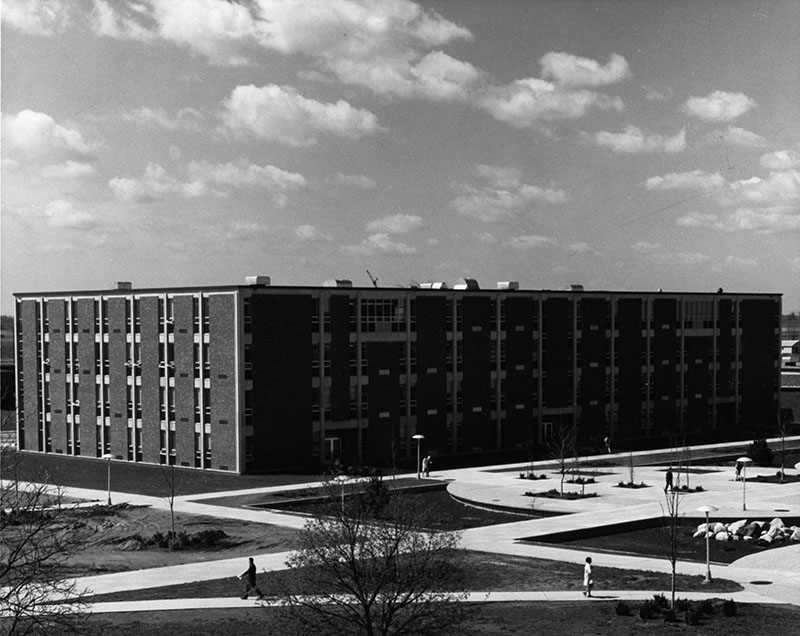 Pearce Hall was the last building constructed in a three-building academic complex, which also contained Anspach Hall and Brooks Hall, located on what was then the southern part
of campus. The building was designed by Roger Allen and Associates of Grand Rapids as a general purpose classroom building that would serve the needs of the Foreign Languages,
Art, and Mathematics departments. The building cost $2.65 million, $100,000 more than university officials originally planned on spending.
Pearce Hall was the last building constructed in a three-building academic complex, which also contained Anspach Hall and Brooks Hall, located on what was then the southern part
of campus. The building was designed by Roger Allen and Associates of Grand Rapids as a general purpose classroom building that would serve the needs of the Foreign Languages,
Art, and Mathematics departments. The building cost $2.65 million, $100,000 more than university officials originally planned on spending.
Construction contracts were awarded in March 1966. Collinson Construction of Midland was the general contractor on the project. The Vander Waals-Troske Company of Grand Rapids was responsible for the mechanical work and Tri-City Electrical of Saginaw did the electrical installation. Construction was underway by summer 1966 and was completed by the beginning of fall 1967. Doors were officially opened to students on September 18, 1967.
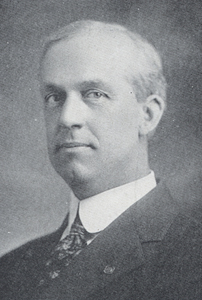 Webster Houston Pearce graduated from the Michigan State Normal College (Eastern Michigan University) at Ypsilanti in 1904. He then continued his education by going on to receive
further degrees from Albion (AB) and the University of Michigan (MA). He served as the principal of Albion High School from 1902 to 1904 and of Adrian High School from 1905-1908.
He then worked as an assistant professor of mathematics at that Michigan State Normal College at Ypsilanti from 1909 until 1916, when he became a professor at Central.
Webster Houston Pearce graduated from the Michigan State Normal College (Eastern Michigan University) at Ypsilanti in 1904. He then continued his education by going on to receive
further degrees from Albion (AB) and the University of Michigan (MA). He served as the principal of Albion High School from 1902 to 1904 and of Adrian High School from 1905-1908.
He then worked as an assistant professor of mathematics at that Michigan State Normal College at Ypsilanti from 1909 until 1916, when he became a professor at Central.
Living in Mt. Pleasant also allowed him to expand his career into politics. He was the city's mayor from March of 1921 until June 1927. He also served as Superintendent of Public instruction for two terms. Pearce left both the college and the town in 1927 to become the president of Northern State Teachers' College, now known as Northern Michigan University. He passed away at his home in Marquette, MI in October of 1940.
Powers Hall
Opened: 1939
Renovated: 1960, 1997
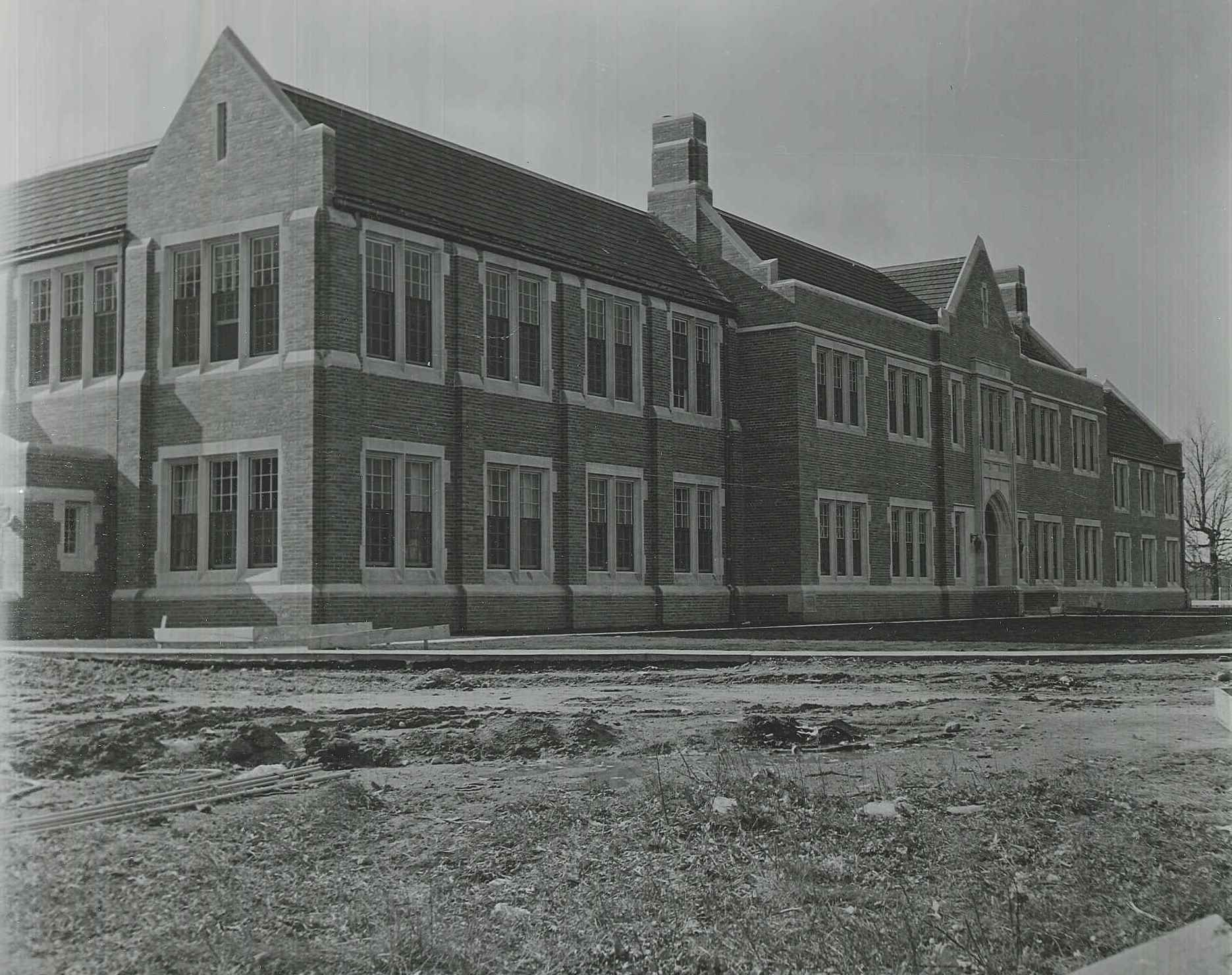 Powers Hall, which now houses the Department of History, has undergone several major changes since it was first built as the combination student union and first men's residence
hall on campus. Although the outside looks nearly the same, the inside would be completely unrecognizable to its original inhabitants.
Powers Hall, which now houses the Department of History, has undergone several major changes since it was first built as the combination student union and first men's residence
hall on campus. Although the outside looks nearly the same, the inside would be completely unrecognizable to its original inhabitants.
Groundbreaking for the new student union occurred on October 31, 1938 when President Warriner turned the first shovel of earth. The building was funded through a grant from the Public Works Administration. Weber Construction of Bay City was responsible for excavation and the Spence Brothers Construction Company of Saginaw was awarded the general construction contract for the building's superstructure. The architect was C. William Palmer of Detroit. The cornerstone was laid in February 1939. Cornerstones often contain materials relating to the period in which the building is built. For some reason, among typical items like newspapers and school material, this cornerstone included a bottle filled with wheat, corn, and barley.
The building contained the Student Union in the wing facing the present-day Ronan Hall, as well as a 90-bed living area now known as the old section of Barnes Hall. The residence wing opened in September of 1939, but the Union section was not ready until November. Despite the fact that it was the first and only men's residence hall on campus, it remained partially empty that first year. It was difficult for the college to convince men who were used to living off campus to move in and conform to the myriad regulations of on-campus living. For those who did move in, room and board was $45 per semester.
The interior of the building was dramatically different than it is now. The lobby opened onto a grand staircase to the second floor. The first floor contained a cafeteria, men's lounge, and a game room. The second floor housed the women's lounge on the west end, a billiards room, and the grand ballroom, which was remodeled in twenty-first century. The men of Keeler were required to wear ties to dinner in the dining hall, which is now a classroom (room 140). The west wing of the building on both the first and second floors housed the dormitory section. This area was converted to offices and practice rooms when the Music program took over the building in 1961, and now houses the offices of the Department of History.
Like the first building named Ronan Hall, portions of this building were turned over to Navy V-12 cadets during World War II. These cadets, who exceeded the original capacity of the building by housing 125 people, remained from 1942 until the program ended on July 1, 1944. During this time, the hall was also used as a rallying point for the Red Cross. In November of 1944, the hall was turned over to women residents for the first time. They remained until after the end of the War, and the male residents returned in March of 1946. Present-day students concerned with residence hall overcrowding should know that this is not a new phenomenon: in 1949, Keeler was at double capacity with 180 residents.
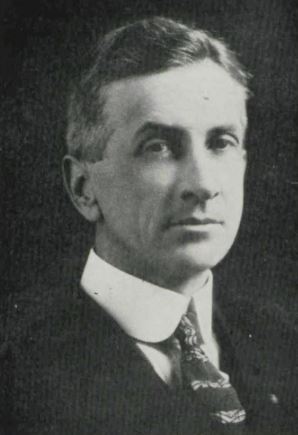 In 1951, a new residence hall wing was added. This was designed by Roger Allen and Associates of Grand Rapids, the architect responsible for most of the buildings on CMU's campus.
On October 25, 1952, the entire residence hall area was renamed Charles C. Barnes Hall, thus ending that section's connection with Keeler.A 1960 "renovation" presided over
by Roger Allen gutted the interior of the building. It was reconstructed and soundproofed for the arrival of the Music Department, which took residence in 1961. The building
was dedicated as Powers Music Building on March 31, 1966, named after J. Harold Powers, the former head of the music program at Central.
In 1951, a new residence hall wing was added. This was designed by Roger Allen and Associates of Grand Rapids, the architect responsible for most of the buildings on CMU's campus.
On October 25, 1952, the entire residence hall area was renamed Charles C. Barnes Hall, thus ending that section's connection with Keeler.A 1960 "renovation" presided over
by Roger Allen gutted the interior of the building. It was reconstructed and soundproofed for the arrival of the Music Department, which took residence in 1961. The building
was dedicated as Powers Music Building on March 31, 1966, named after J. Harold Powers, the former head of the music program at Central.
By the 1980s, Powers Hall was proving to be inadequate for the needs of the Music Department. Swelling enrollment numbers, combined with the poor acoustics and lack of performance space in Powers Hall, prompted University officials to seek funds for the construction of a new music building. Although this process was delayed multiple times, the project was approved in 1994 and the new Music Building opened in the fall of 1997.
With the departure of the School of Music, the University announced plans for a remodel of Powers Hall in preparation for its new tenants. The $1 million renovation included an
expansion of the original lobby and improvements and remodeling of classroom and office space. Included in plans for the renovated Powers Hall were the Dean of the College
of Health Professions, the Department of History, the Charter Schools Office and Resource Center, the Cross-Cultural Leadership Program, and space for graduate assistants
and fellows for the psychology department. The decision to relocate these departments into such an old building was met positively around campus. Although it meant the loss
of air conditioning and separating the Department of History from the College of Humanities and Social and Behavioral Sciences, the move allowed faculty individual office
space and saved Powers Hall from demolition.
Public Broadcasting and Welcome Center
Opened: 1980
Cost: $1.7 Million
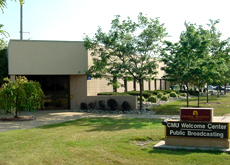 Public Broadcasting at Central Michigan University began its first broadcasts in 1973. However, as it grew during the 1970s, the already crowded spaces to which it was confined
in Anspach Hall became increasingly inadequate for the needs of those involved with its operations. As a result, CMU Board of Trustees approved the purchase of a building
on the corner of Broomfield and Mission for $450,000 in 1980. The building and ensuing renovation was paid for entirely through grants and loans. CMU Board of Trustees loaned
Public Broadcasting $750,000 initially, but Public Broadcasting had already raised $300,000 of the amount needed to cover the renovations.
Public Broadcasting at Central Michigan University began its first broadcasts in 1973. However, as it grew during the 1970s, the already crowded spaces to which it was confined
in Anspach Hall became increasingly inadequate for the needs of those involved with its operations. As a result, CMU Board of Trustees approved the purchase of a building
on the corner of Broomfield and Mission for $450,000 in 1980. The building and ensuing renovation was paid for entirely through grants and loans. CMU Board of Trustees loaned
Public Broadcasting $750,000 initially, but Public Broadcasting had already raised $300,000 of the amount needed to cover the renovations.
The building into which Public Broadcasting would eventually move was a local bar before it was purchased by CMU. Alibi's Bar, built in the early 1970s and known around campus for its popular Oldies Nights, was scheduled to be completely remodeled and then occupied by Public Broadcasting. General contractor Greenwald and Son Construction of Mt. Pleasant was hired to alter the exterior and completely gut the interior to make both more suitable to a public broadcasting building. In the end, the total cost of the project was $1.7 million, which included not only the purchase of and improvements to the building itself but also landscaping, furniture, and TV and radio equipment.
In May 2000, President Plachta announced plans for the renovation of the Public Broadcasting building's lobby to include a CMU Welcome Center. $20,000 was allocated from the president's new initiatives fund to complete this project, which would also include signage clearly visible from Broomfield and Mission Roads. Although the office in the lobby of this building was designed to be temporary, the Welcome Center continues to help keep visitors informed about events on campus, provide maps, or even give away cups of coffee from this location.
Robinson Hall
Opened: 1954
Cost: $1.25 Million
Capacity: 250
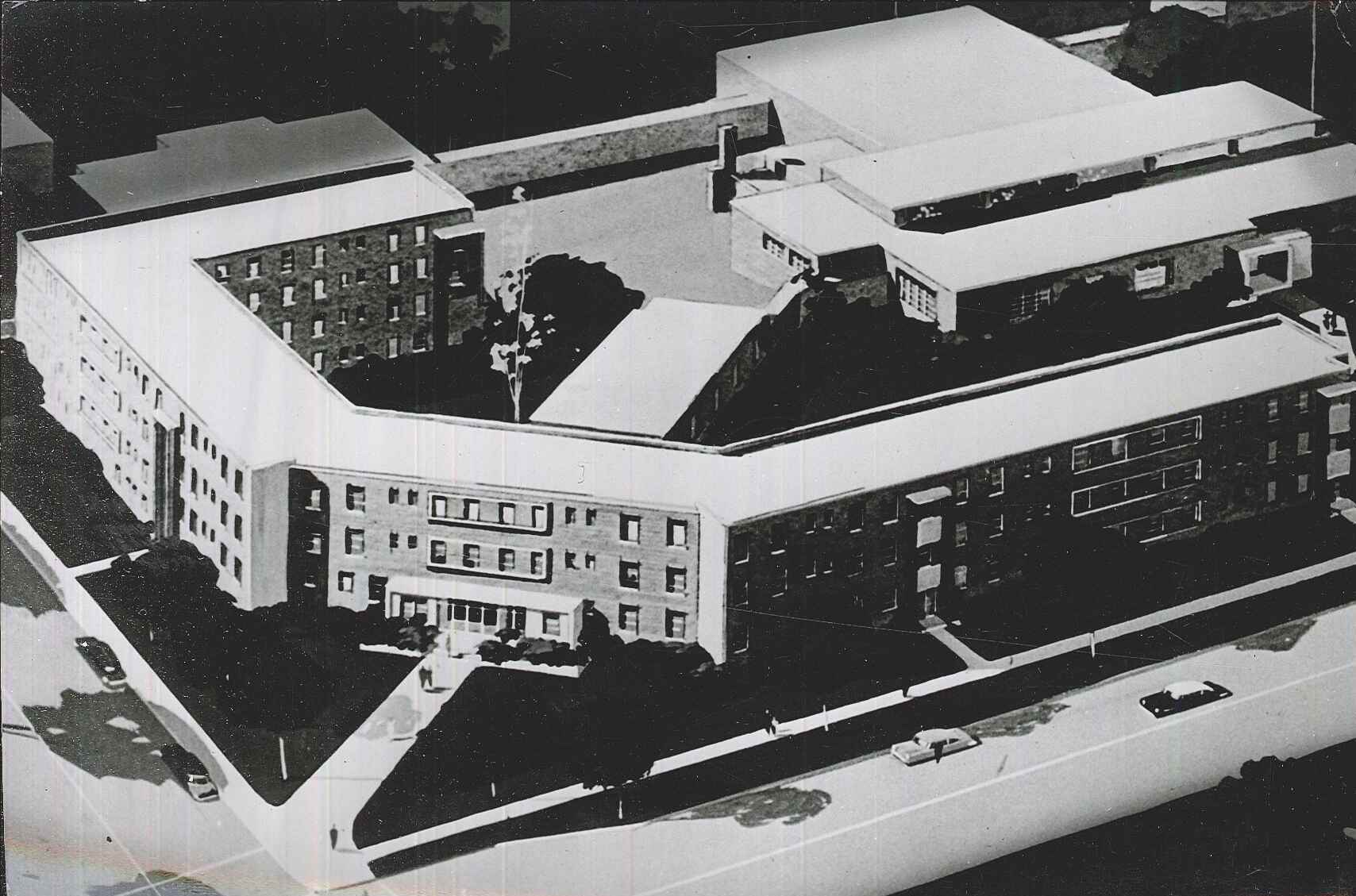 Robinson Hall was the first residence hall built in a northwest quadrangle that would eventually include Calkins, Larzelere, and Trout Halls as well. It introduced a period of campus
expansion, when the University would build a total of four quadrangles in the next twenty years. Robinson Hall was built on the site of Vetville, the temporary housing complex
constructed after World War II to house veterans attending Central on the GI Bill. The barracks were sold and removed and construction on the $1.25 million building was underway
by summer 1953. The building, which included a food commons that would eventually serve the other buildings in the quad, opened for occupancy in the fall of 1954 and was officially
dedicated the Frank E. Robinson Residence Hall on October 16, 1954.
Robinson Hall was the first residence hall built in a northwest quadrangle that would eventually include Calkins, Larzelere, and Trout Halls as well. It introduced a period of campus
expansion, when the University would build a total of four quadrangles in the next twenty years. Robinson Hall was built on the site of Vetville, the temporary housing complex
constructed after World War II to house veterans attending Central on the GI Bill. The barracks were sold and removed and construction on the $1.25 million building was underway
by summer 1953. The building, which included a food commons that would eventually serve the other buildings in the quad, opened for occupancy in the fall of 1954 and was officially
dedicated the Frank E. Robinson Residence Hall on October 16, 1954.
Even though it was designed by Roger Allen of Grand Rapids, an architect with a long relationship with Central, Robinson Hall marked a dramatic shift from the design of earlier residence halls. The architect and College officials solicited input from the entire campus community prior to completing the final plans. Students, faculty, staff, and the builders cooperated to design a hall that would please everyone. Using six-foot-high cinderblock mock-ups of the living quarters, students and staff were able to experiment with different room layouts as workers strained to push the heavy blocks around a warehouse on campus. In a letter to controller Norvall Bovee on October 14, 1952, housing director Don Kilborn outlined 27 recommendations made to him by students, faculty, and staff as to how the new building should be designed. The end product followed almost all of them. Kilborn wrote,
"Obviously, students can be encouraged, and it need be, forced to accept most anything. ... However, we do not exemplify the best traditions of a democratic institution by arbitrarily
establishing a policy which is not accepted by the group affected so long as there is a possibility of a satisfactory alternative."
As a result of this collaboration, Robinson Hall featured several unique innovations in design and layout. Instead of the single rooms and community bathrooms found in previous halls, Robinson was one of the first residence halls in the country to feature "suite" style of rooms, a dramatic departure from the communal bathrooms in older residence halls. Robinson was the first hall on campus designed with private telephones in each suite. Future maintenance was also taken into account. For example, the building was designed to be constructed with painted cinder blocks rather than plaster. Robinson became a model for future on-campus living construction, and indeed around the country. It was featured in several publications in the 1950s as the ideal way to plan residence halls.
In addition to the innovative planning, Robinson contained other features that made it a groundbreaking experiment in on-campus living. The food service area was copied by several other schools. It was the first hall to have a recreation room and a meeting room for the hall council on the first floor. Instead of the usual practice of buying the furniture from Prison Industries of Ionia, the University bought ultra-modern furniture from the Herman Miller Company of Zeeland. It was also the first hall on campus to have music in the dining area.
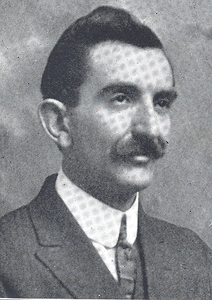 Robinson Hall was originally designed to house 250 men, although housing shortages on campus often led to overcrowding. The architect had anticipated this problem, and had installed
steel brackets in the walls so additional bunk beds could be hung. The hall housed men from 1954 to 1959, women from 1959 to 1960, and returned to being a men's hall from 1961
to 1988, when it became coed.
Robinson Hall was originally designed to house 250 men, although housing shortages on campus often led to overcrowding. The architect had anticipated this problem, and had installed
steel brackets in the walls so additional bunk beds could be hung. The hall housed men from 1954 to 1959, women from 1959 to 1960, and returned to being a men's hall from 1961
to 1988, when it became coed.
The building was named for Frank E. Robinson, who was head of the Department of Commerce from 1916 to 1948. He was born in 1878. Although he never graduated from high school, he passed his teaching examination at Ferris Institute. He attended Central from 1903 to 1905, earning his life certificate. Later, he received his MA from the University of Michigan. Before returning to Central to teach, he was superintendent of Bronson schools for six years, in addition to being commissioner of Branch County schools. He was dedicated to his teaching at CMU, and only retired in 1948 because of a state law that required retirement at age 70. He and his wife had six sons. He died in 1951.
Ronan Hall
Opened: 1955
Cost: <$1 Million
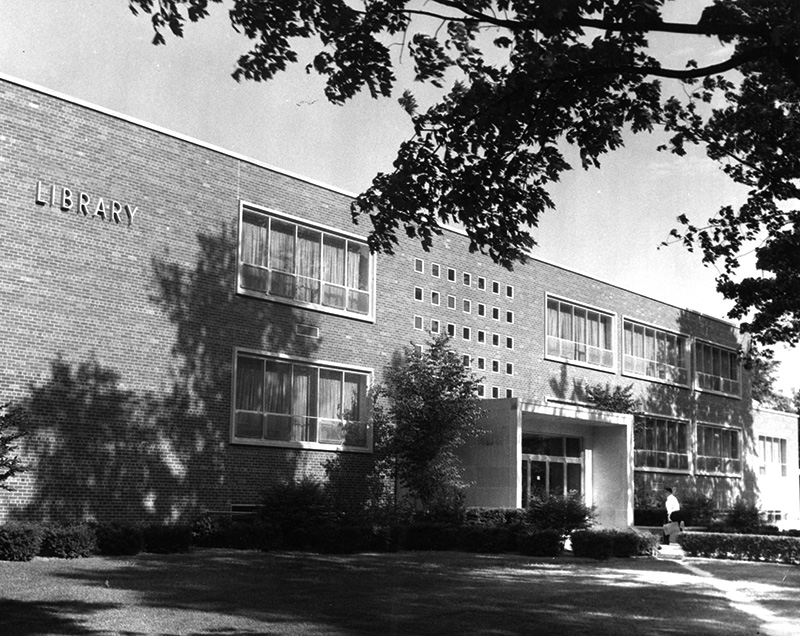 The building that is now Ronan Hall was originally built as a library that would replace the inadequate library facilities located in Warriner Hall. Architectural plans were initially
drawn by Roger Allen and Associates of Grand Rapids in 1951 after Allen and several College officials toured modern library facilities on campuses around the Midwest, including North
Dakota State College, Colorado State College, and Kansas State Teachers College. Funding for the nearly $1 million project was approved by the state legislature in 1953. Plans called
for construction of the new library north of Keeler Union (now Powers Hall) on the corners of Hopkins, S. Main, and S. Washington Streets.
The building that is now Ronan Hall was originally built as a library that would replace the inadequate library facilities located in Warriner Hall. Architectural plans were initially
drawn by Roger Allen and Associates of Grand Rapids in 1951 after Allen and several College officials toured modern library facilities on campuses around the Midwest, including North
Dakota State College, Colorado State College, and Kansas State Teachers College. Funding for the nearly $1 million project was approved by the state legislature in 1953. Plans called
for construction of the new library north of Keeler Union (now Powers Hall) on the corners of Hopkins, S. Main, and S. Washington Streets.
Construction was underway by fall 1954. The cornerstone, which was laid in October 1954, contained materials that reflected the campus environment at the time. It held copies of the college
bulletin, directory, social calendar, and yearbook, as well as a list of the library’s book selections and magazine subscriptions. The building was nearly complete by the end
of the spring session in 1955, although relocation of the library would not be completed until January 1956. Local students were hired over Christmas vacation 1955 to complete the
relocation. The new library was dedicated on April 27, 1956 at a ceremony attended by College officials and the architect. Ralph Ellsworth, director of the library at the University
of Iowa, delivered a speech entitled, “The Significance of a Modern Library for a Modern College.”
The new library building was a major improvement over the existing facilities in Warriner Hall. The three-story, 65,000 square feet structure held over 200,000 volumes. The modern open-stack system provided students with direct access to over 90,000 volumes. In addition, there was study space for a quarter of the campus population at the time, as well as classrooms and reading rooms. In addition to the main library, the new library building also housed special collections within the Clarke Historical Library, which was dedicated on December 8, 1956. The building was renamed the Charles V. Park Library in March 1965. Park was the head of the library at Central throughout the 1940s and 1950s, and the dedication of the new library in his name came shortly after his death.
Although what was by then called the Park Library was designed to be expanded with the future growth of the university, by 1967 construction of an entirely new library was underway. The new Charles V. Park Library, located on Preston and Franklin south of the University Center, opened in 1969. The old library building, now vacated, was remodeled into classroom and office space. It also served the University in a variety of ways over the following decades. The building housed the Center for Cultural and Natural History from its inception on March 30, 1971, until it moved to Rowe Hall in 1975. At one point, the University's closed-circuit television studio was also housed in the building.
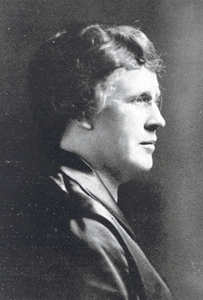 The naming of this building has a somewhat confusing history. For a decade after it was originally built, the building was known as simply “the library” or “the library
building.” In 1965, it was dedicated as the Charles V. Park Library. However, when a new library was built in 1969, the new building was named the Charles V. Park Library. The
original library would receive a new name within a year, however. Ronan Hall, a residence hall built in 1924, was demolished in 1970. The remodeled and repurposed building that was
the old library was renamed Bertha M. Ronan Hall in 1970. Today, Ronan Hall is home to many student support services, including Academic Advising and Assistance, Career Services,
English Language Institute, Enrollment and Student Services, International Affairs, Residence Life, Student Affairs, and Study Abroad.
The naming of this building has a somewhat confusing history. For a decade after it was originally built, the building was known as simply “the library” or “the library
building.” In 1965, it was dedicated as the Charles V. Park Library. However, when a new library was built in 1969, the new building was named the Charles V. Park Library. The
original library would receive a new name within a year, however. Ronan Hall, a residence hall built in 1924, was demolished in 1970. The remodeled and repurposed building that was
the old library was renamed Bertha M. Ronan Hall in 1970. Today, Ronan Hall is home to many student support services, including Academic Advising and Assistance, Career Services,
English Language Institute, Enrollment and Student Services, International Affairs, Residence Life, Student Affairs, and Study Abroad.
The hall was named for Bertha M. Ronan (pictured above), who was a professor in the Department of Physical Education from 1903-1923 and Dean of Women from 1923 until her retirement in 1942.
Rose-Ryan Center / McGuirk Arena
Opened: 1973
Cost: $5.5. Million
Renovated: 1990, 2010
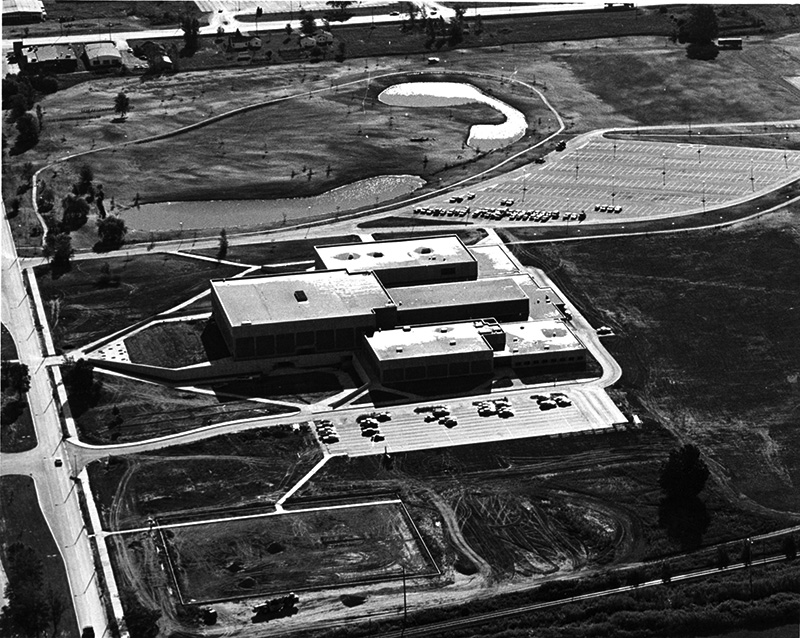 The facilities that would eventually become the Rose Center and Ryan Center were first proposed as a $5.5 million physical Education building in October 1969. Designed by Daverman Architect
and Engineering firm of Grand Rapids, the building's construction contract was awarded to the Christman Company of Lansing in 1971. The building was planned for an area on the south
side of Broomfield, part of the continued expansion of campus to the south. Indeed, Broomfield Road was widened to four lanes and a median was added to facilitate the increased number
of pedestrians that would be using the new athletic complex.
The facilities that would eventually become the Rose Center and Ryan Center were first proposed as a $5.5 million physical Education building in October 1969. Designed by Daverman Architect
and Engineering firm of Grand Rapids, the building's construction contract was awarded to the Christman Company of Lansing in 1971. The building was planned for an area on the south
side of Broomfield, part of the continued expansion of campus to the south. Indeed, Broomfield Road was widened to four lanes and a median was added to facilitate the increased number
of pedestrians that would be using the new athletic complex.
Excavation was underway on the project by summer of 1971, but problems delayed the opening of the new building. In January 1972, high winds caused the collapse of several steel columns on the partially-constructed building. Later that year, three workers were injured when a steel beam fell over thirty feet to the ground.
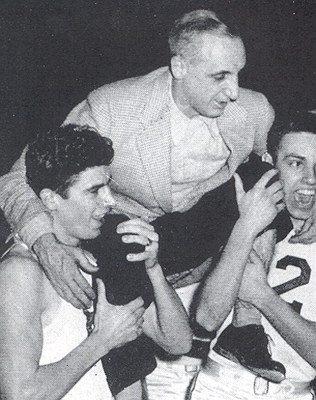 The building itself, which opened in the summer of 1973, was an impressive addition to campus. The complex was twice the size of Finch Fieldhouse, which served as the primary location
of the school's athletic pursuits prior to this point. It had separate areas for wrestling, handball, dance, gymnastics, and physical conditioning. There was a specially equipped
facility for students with disabilities. There was also a 6,000 seat basketball arena that could be converted to classroom space, a six-lane competitive pool and separate diving pool,
and a turf room that featured a Tartan turf surface similar to that installed at Spartan Stadium. Outside, the complex also included eight tennis courts and four softball/soccer fields.
In January 1973, it was announced that the athletic complex building would be named the Daniel P. Rose Center, after the long-time athletic director and winningest basketball coach
in CMU history (pictured at left). The academic wing would be named Grace E. Ryan Hall, after the health and physical education instructor who served for 35 years from 1923-58 (pictured
below). The Rose Center remained the hub of both intramural and recreational athletic activity throughout the 1970s and 1980s.
The building itself, which opened in the summer of 1973, was an impressive addition to campus. The complex was twice the size of Finch Fieldhouse, which served as the primary location
of the school's athletic pursuits prior to this point. It had separate areas for wrestling, handball, dance, gymnastics, and physical conditioning. There was a specially equipped
facility for students with disabilities. There was also a 6,000 seat basketball arena that could be converted to classroom space, a six-lane competitive pool and separate diving pool,
and a turf room that featured a Tartan turf surface similar to that installed at Spartan Stadium. Outside, the complex also included eight tennis courts and four softball/soccer fields.
In January 1973, it was announced that the athletic complex building would be named the Daniel P. Rose Center, after the long-time athletic director and winningest basketball coach
in CMU history (pictured at left). The academic wing would be named Grace E. Ryan Hall, after the health and physical education instructor who served for 35 years from 1923-58 (pictured
below). The Rose Center remained the hub of both intramural and recreational athletic activity throughout the 1970s and 1980s.
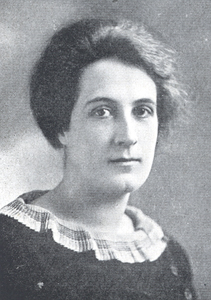 However, with the continued growth of the student body and increasing demands from students for an expansion, Trustees approved financing for an expansion to the existing Rose Center
in 1987. Dubbed Physical Education and Recreation Phase II, the plans called for a $14.9 million, 179,000 square foot addition to the Rose Center. The addition was designed by TMP
Associates of Bloomfield Hills and built by the Christman Corporation of Lansing. The new expansion would feature six racquetball courts, a three-lane jogging track, a twelve-lane
bowling alley, six multipurpose gymnasiums, a pool, weight room facilities, and two auxiliary gymnasiums. In 1990, University officials announced a name change for the facility. The
entire athletic complex would now be known as the Student Activity Center, while the basketball arena would be known as Rose Arena. All of the facilities would be under the supervision
of Campus Recreational Services with the exception of the arena, which would remain under the Department of Athletics.
However, with the continued growth of the student body and increasing demands from students for an expansion, Trustees approved financing for an expansion to the existing Rose Center
in 1987. Dubbed Physical Education and Recreation Phase II, the plans called for a $14.9 million, 179,000 square foot addition to the Rose Center. The addition was designed by TMP
Associates of Bloomfield Hills and built by the Christman Corporation of Lansing. The new expansion would feature six racquetball courts, a three-lane jogging track, a twelve-lane
bowling alley, six multipurpose gymnasiums, a pool, weight room facilities, and two auxiliary gymnasiums. In 1990, University officials announced a name change for the facility. The
entire athletic complex would now be known as the Student Activity Center, while the basketball arena would be known as Rose Arena. All of the facilities would be under the supervision
of Campus Recreational Services with the exception of the arena, which would remain under the Department of Athletics.
Doors to the Student Activity Center officially opened on September 3, 1990. Students and faculty were required to show their campus identification card, which contained information about whether that student had paid the annual fee, to enter the facility. The complex was officially dedicated with a ribbon cutting ceremony on October 4, 1990. CMU President Edward B. Jakubauskas, Chair of the Board of Trustees Margaret Riesker, and SAC Director Tom Jones were among those who spoke in front of a crowd of about one hundred gathered on a converted section of one of the basketball courts.
By the early 2000s, University officials were again discussing renovating, or even completely replacing, the existing events center. A new building was prohibitively expensive, so in 2007, the Board of Trustees approved $21.5 million for renovation of Rose Arena and the surrounding complex. Designs, by the Smith Group, the nation's seventh largest health care architecture firm, were approved in July 2009. The general contractor for the project was the Clark Construction Company of Lansing. Construction began in the fall of 2009. Construction required the relocation of 32 trees and the removal of 80 trees from the site; 80 new trees were planted in other parts of campus to make up for the loss of those on the construction site.
The new events center looked to create a more welcoming appearance and expand both the available space and usefulness of the facilities. 50,000 square feet of additional space was added to the old complex in the form of an atrium grand entrance, a practice gymnasium, and an expanded wrestling complex. The arena itself was renovated through improvements to the existing seating and the addition of a 12 x 30 ft. scoreboard and video system at the west end of the arena. A new lobby and ticket office and significant expansion to the fitness center were also part of the renovation. The project was completed in different phases over the course of 2010-2012.
As the new arena neared its opening in the fall of 2010, the University announced that it would be named after the McGuirk family of Mt. Pleasant, which had donated the requisite $2.5 million for naming rights to the arena. The McGuirks owned McGuirk Sand and Gravel as well as United Apartments, both influential local businesses. The basketball court within the arena was renamed Kulhavi Court, in honor of former Trustee John Kulhavi, who donated $1 million. Kulhavi was a 1965 CMU graduate and senior vice president at Merrill Lynch in Farmington Hills at the time of the dedication. CMU offered naming rights to the entire events center for $5 million, but failed to find a donor willing to accept the offer.
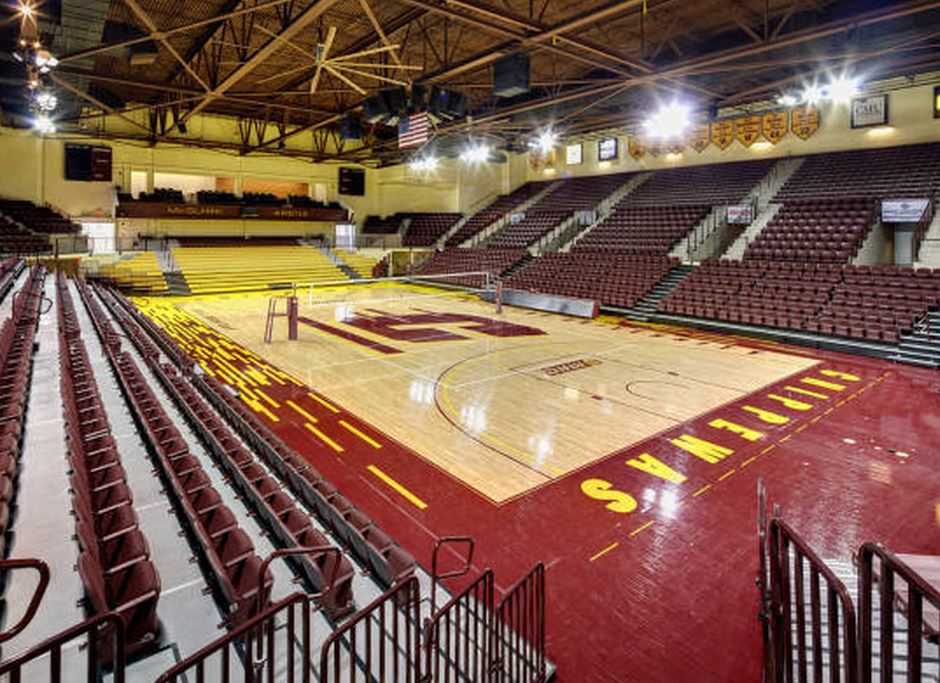 Problems plagued the construction process. The opening of the fitness center was delayed slightly when asbestos and high levels of lead were found in the space being converted from the
old wrestling center. Additional funds had to be allocated when the integration of the old and new construction met difficulties and design errors forced crews to investigate and
adjust their plans. Funding also caused some controversy, as the University's website provided incorrect information about the public nature of construction funds. Although officials
had been transparent in the process of allocating these funds, skepticism over a project facing many other problems grew among some students.
Problems plagued the construction process. The opening of the fitness center was delayed slightly when asbestos and high levels of lead were found in the space being converted from the
old wrestling center. Additional funds had to be allocated when the integration of the old and new construction met difficulties and design errors forced crews to investigate and
adjust their plans. Funding also caused some controversy, as the University's website provided incorrect information about the public nature of construction funds. Although officials
had been transparent in the process of allocating these funds, skepticism over a project facing many other problems grew among some students.
Even with these problems, construction proceeded steadily. The new events center opened in time for the fall 2010 basketball season's start. The expanded fitness center was ready for
use by the spring of 2011. The project was fully complete by 2012. The new events center received the 2012 Building Honor for Architectural Excellence from the Detroit chapter of
the American Institute of Architecture. It was the second University structure to be recognized by the AIA, after the Education and Human Services building won the award eight years
earlier.
Rowe Hall
Opened: 1958
Cost: $1 Million
Partially Razed After Fire: 1998
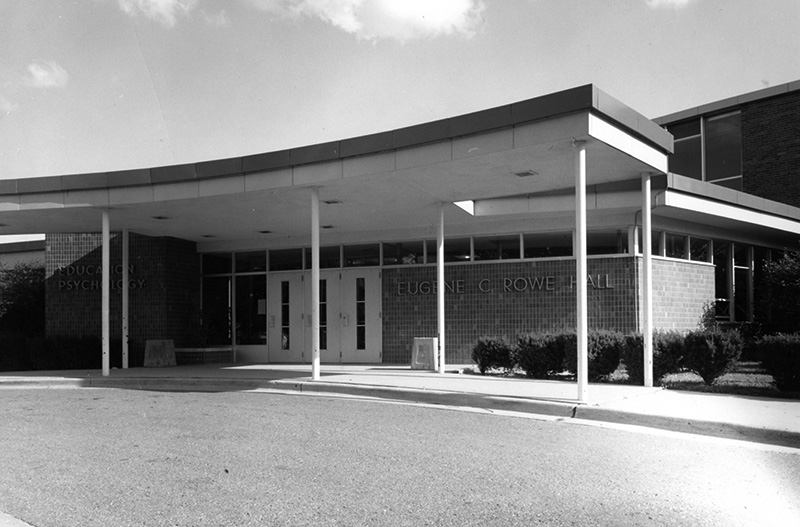 College officials announced plans for a new college elementary, psychology, and education building in 1956. Groundbreaking on the $1 million building, designed by architect Roger Allen,
took place in May 1957. In December 1957, President Anspach announced the new building would be named in honor of Eugene C. Rowe, and in May 1958 the cornerstone was laid. The cornerstone
contained signatures of all the elementary students attending the school in 1958, as well as a photograph. The building was designed with flexibility in mind, featuring movable dividers
between classrooms and movable cupboards and storage within classrooms.
College officials announced plans for a new college elementary, psychology, and education building in 1956. Groundbreaking on the $1 million building, designed by architect Roger Allen,
took place in May 1957. In December 1957, President Anspach announced the new building would be named in honor of Eugene C. Rowe, and in May 1958 the cornerstone was laid. The cornerstone
contained signatures of all the elementary students attending the school in 1958, as well as a photograph. The building was designed with flexibility in mind, featuring movable dividers
between classrooms and movable cupboards and storage within classrooms.
The building was opened in the fall of 1958 and saw some significant renovations over the next few decades, including a renovation of the office wing in 1969 and the addition of an elevator in the 1980s. The former gymnasium now houses the Center for Cultural and Natural History, which relocated to Rowe Hall from Ronan Hall (the old Library) in 1975. The Museum reopened to the public in April 1978. A Native American art gallery, started by a donation from Olga and G. Roland Denison, was dedicated in 1994.
In June 1998, a fire broke out and significantly damaged the east wing of Rowe Hall. This wing had until this point housed the College of Extended Learning, and the fire left many faculty members without office space. In addition to the loss of CEL space and materials, other offices were left covered in soot and the Museum of Cultural and Natural History also sustained smoke damage. The Museum remained closed until September, and temporary facilities for the departments displaced by the fire were set up in the Student Activity Center, Warriner Hall, Powers Hall, Park Library, and Woldt Hall. Cost of the clean-up and post-fire renovations reached $400,000. The 16,500 square foot east wing was determined to be too heavily damaged and was razed. A new entrance was built on the east side of the building, new brick facing was added to the section of the building adjacent to the demolition, and sidewalk and landscaping improvements helped integrate the renovated building into the exiting surroundings.
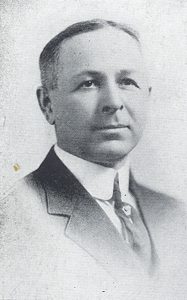 The building was named after the founder of the Department of Psychology and Education at Central. Eugene C. Rowe was born in Monroe, Michigan, on March 8, 1870. He received his AB from
Olivet in 1897 and his PhD from Clark University in 1909. He came to Central in 1902 and retired in 1936. He was the first faculty member at Central to have a PhD.
The building was named after the founder of the Department of Psychology and Education at Central. Eugene C. Rowe was born in Monroe, Michigan, on March 8, 1870. He received his AB from
Olivet in 1897 and his PhD from Clark University in 1909. He came to Central in 1902 and retired in 1936. He was the first faculty member at Central to have a PhD.
Rowe was a prominent psychologist. He offered the first Mental and Sex Hygiene courses in the state. He was a clinical psychologist for the New York City Police from 1915 to 1916. During
World War I, he was the US Army's Chief Psychological Examiner, attaining the rank of Major. He helped design the Army Alpha test, which is a fore-runner of the modern IQ tests. He
was a fellow of the American Association for the Advancement of Science and a life member of the American Psychological Association. In addition to his work as a psychologist, Rowe
was also a pioneer in the controversial eugenics movement. He died on December 31, 1946.
Satellite Energy Facility
Opened: 2007
Cost: $27 Million
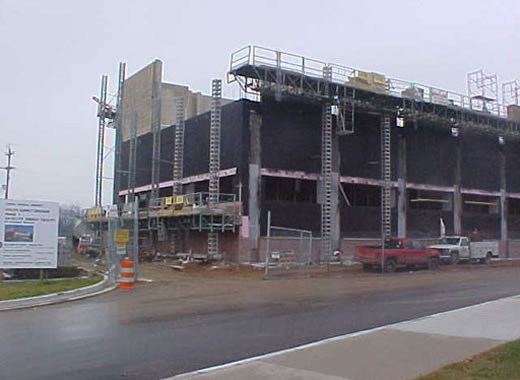 In May 2006, the University announced plans to begin construction on a new Satellite Energy Facility in the parking lot west of Wightman Hall. The recent construction of the Health Professions
Building, the new Towers residence hall complex, and the soon to be completed East Area Residence Halls increased the need for expanded electrical and water facilities. The proposed 16,500
square foot facility would increase the University's electrical and chilled water capacity by 60%. Total cost of the project was $27 million dollars, of which $15.2 million was allocated
for the construction of the building itself. The remaining funds were used to make improvements to the Central Energy Facility, the Energy Management System, and the distribution system.
The project represented the first major utility supply upgrade since the early 1990s
In May 2006, the University announced plans to begin construction on a new Satellite Energy Facility in the parking lot west of Wightman Hall. The recent construction of the Health Professions
Building, the new Towers residence hall complex, and the soon to be completed East Area Residence Halls increased the need for expanded electrical and water facilities. The proposed 16,500
square foot facility would increase the University's electrical and chilled water capacity by 60%. Total cost of the project was $27 million dollars, of which $15.2 million was allocated
for the construction of the building itself. The remaining funds were used to make improvements to the Central Energy Facility, the Energy Management System, and the distribution system.
The project represented the first major utility supply upgrade since the early 1990s
The building was designed by DiClemente Siegel Design, Inc. of Southfield and the construction contract was awarded to Devere Construction Company, Inc. of Alpena. Construction began in summer 2006. Inside the new building, crews installed new chillers, each with a capacity of 1,250 tons, which would supply water to air conditioning units around campus. A total of 6,100 feet of 20-inch-diameter pipe was laid to carry the water, and the excavation involved created large holes in several areas across campus. Electrical capacity was online by May 2007, and chilled water production was fully operational by June 2007.
Saxe Hall
Opened: 1966
Cost: $1.4 Million
Capacity: 344
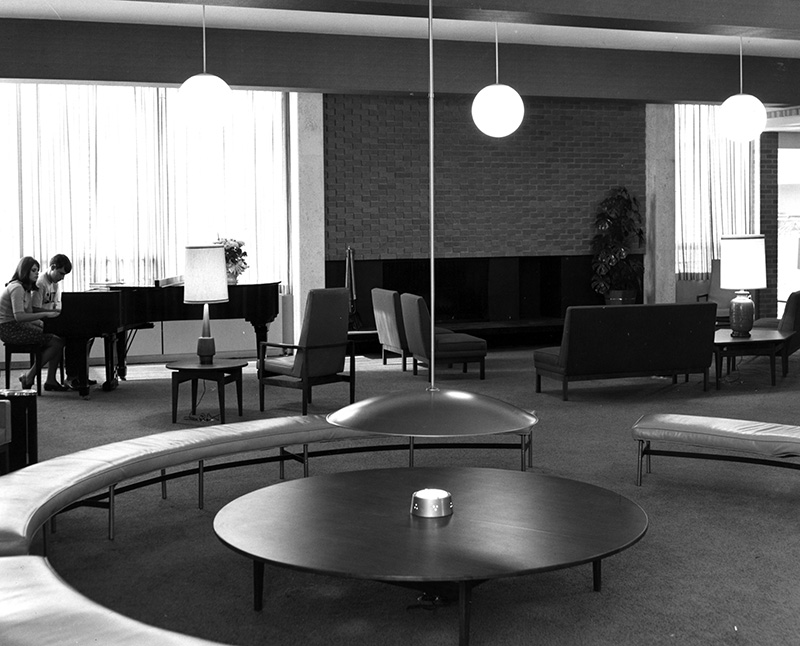 Saxe Hall opened in the fall of 1966 as part of the southeast quadrangle of residence halls. Saxe, along with Woldt, Emmons, and Herrig Halls, were all constructed during a period of campus
expansion that included four new quads in a fifteen-year period. Saxe Hall was designed by architects from Roger Allen and Associates in Grand Rapids. The $1.4 million building, designed
to house 344 students in 86 suites, utilized the floor plan from Tate Hall (this floor plan was used in all residence hall buildings until the construction of the Towers complex in the
late 1960s).
Saxe Hall opened in the fall of 1966 as part of the southeast quadrangle of residence halls. Saxe, along with Woldt, Emmons, and Herrig Halls, were all constructed during a period of campus
expansion that included four new quads in a fifteen-year period. Saxe Hall was designed by architects from Roger Allen and Associates in Grand Rapids. The $1.4 million building, designed
to house 344 students in 86 suites, utilized the floor plan from Tate Hall (this floor plan was used in all residence hall buildings until the construction of the Towers complex in the
late 1960s).
Saxe and Herrig Halls opened for occupancy in the fall of 1966, although crews were still working on finishing the construction and furnishings for the building. Indeed, dressers, mirrors, lounge chairs, and other finishing touches had yet to be installed when the first students moved in. Both Saxe Hall and Herrig Hall were dedicated in a joint ceremony on December 10, 1967. The ceremony also featured a celebration of the University's 75th anniversary. As part of the ceremony, University president Judson Foust presented the 75th Alumni Anniversary Award to architect Roger Allen for his service to the school. Like Woldt and Emmons, Saxe and Herrig Halls shared a common lobby area and were served by the Woldt food commons.
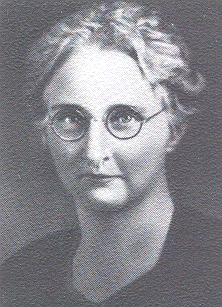 Elizabeth Saxe served as a librarian at Central Michigan University for forty-five years, beginning as a student assistant at the Normal School Library in 1901. By the time she retired as
an assistant Librarian in 1946, the Library had increased from three thousand volumes to fifty-five thousand. Students and faculty both appreciated her tirelessness in searching out materials
for them and her genuine interest in each of them and their problems. The fire that destroyed Old Main in 1925 was a devastating blow to the school's library resources and Saxe's efforts
in repairing and compensating for the losses were greatly esteemed. In addition to working for the College, she also helped to initiate plans for a Mt. Pleasant city library in 1910,
to which she donated her many skills and talents.
Elizabeth Saxe served as a librarian at Central Michigan University for forty-five years, beginning as a student assistant at the Normal School Library in 1901. By the time she retired as
an assistant Librarian in 1946, the Library had increased from three thousand volumes to fifty-five thousand. Students and faculty both appreciated her tirelessness in searching out materials
for them and her genuine interest in each of them and their problems. The fire that destroyed Old Main in 1925 was a devastating blow to the school's library resources and Saxe's efforts
in repairing and compensating for the losses were greatly esteemed. In addition to working for the College, she also helped to initiate plans for a Mt. Pleasant city library in 1910,
to which she donated her many skills and talents.
Sloan Hall
Opened: 1941
Cost: $290,000
Capacity: 148
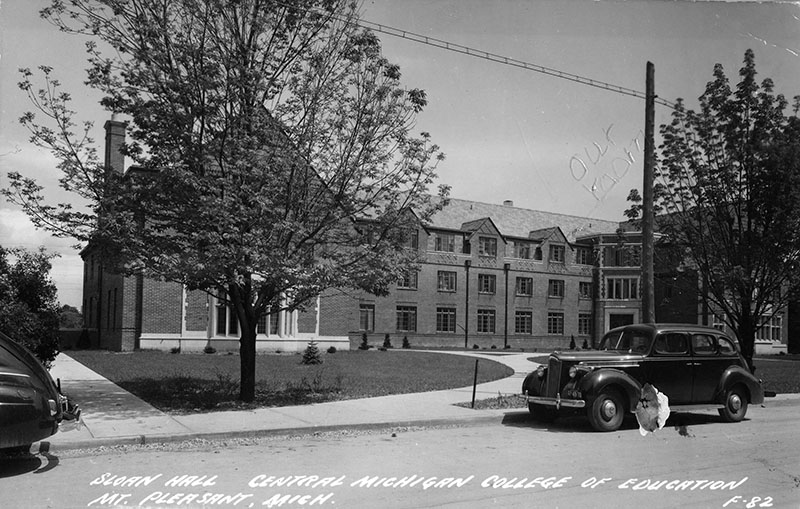 College officials began discussing plans for a new women's residence in 1939, when C. William Palmer presented plans for a building housing women's living space and a health service to be
constructed immediately north of Keeler Union in the location of present-day Ronan Hall. However, officials eventually decided to construct the building at a different location, south
of what was then Ronan Hall, east of Franklin Street. Construction was performed by the Miller-Davis Company of Kalamazoo, who laid the cornerstone of the building in January 1941. With
a final cost of $290,000, the new residence hall opened in October 1941 and had an initial capacity of 148 students. When it opened, Sloan Hall was the third residence hall built on the
campus of CMU. It was the last residence hall to be built for seven years, until Barnard Hall opened for residency. As part of the Barnard project, a food commons was constructed that
was eventually connected to Sloan Hall.
College officials began discussing plans for a new women's residence in 1939, when C. William Palmer presented plans for a building housing women's living space and a health service to be
constructed immediately north of Keeler Union in the location of present-day Ronan Hall. However, officials eventually decided to construct the building at a different location, south
of what was then Ronan Hall, east of Franklin Street. Construction was performed by the Miller-Davis Company of Kalamazoo, who laid the cornerstone of the building in January 1941. With
a final cost of $290,000, the new residence hall opened in October 1941 and had an initial capacity of 148 students. When it opened, Sloan Hall was the third residence hall built on the
campus of CMU. It was the last residence hall to be built for seven years, until Barnard Hall opened for residency. As part of the Barnard project, a food commons was constructed that
was eventually connected to Sloan Hall.
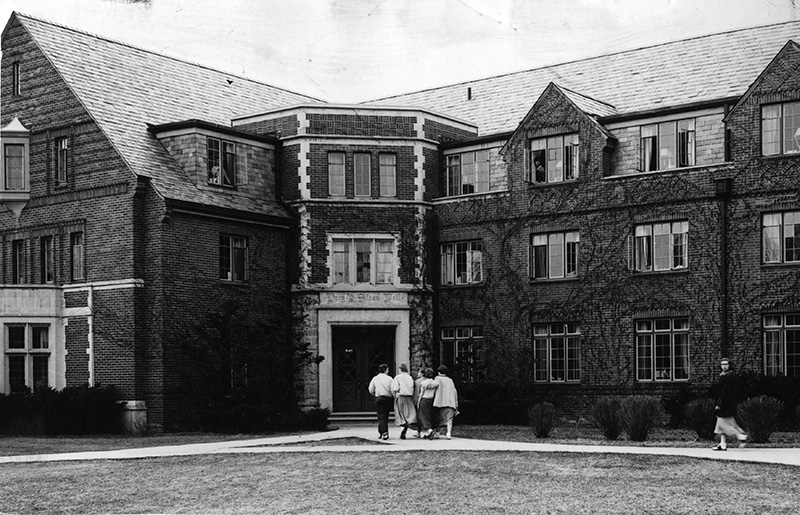 Sloan Hall was built as a combination residence hall and health services unit. The first floor was split into north and south wings. The north wing contained a lounge and assorted recreation
rooms, as well as the residence of the house mother. The south wing housed the College's health services, which included a pharmacy and beds for twenty patients. It was staffed by three
nurses and a part-time doctor. The second and third floors were living quarters for 148 women students at two women per room. However, the overcrowding was an issue and resulted in three
women living in each room. Room rates were $3 per week. Toward the end of World War II, the building housed four people per room due to overcrowding from the presence of Naval cadets
in the other women's residence hall, Ronan Hall. In addition, the basement was often used for Student Senate meetings.
Sloan Hall was built as a combination residence hall and health services unit. The first floor was split into north and south wings. The north wing contained a lounge and assorted recreation
rooms, as well as the residence of the house mother. The south wing housed the College's health services, which included a pharmacy and beds for twenty patients. It was staffed by three
nurses and a part-time doctor. The second and third floors were living quarters for 148 women students at two women per room. However, the overcrowding was an issue and resulted in three
women living in each room. Room rates were $3 per week. Toward the end of World War II, the building housed four people per room due to overcrowding from the presence of Naval cadets
in the other women's residence hall, Ronan Hall. In addition, the basement was often used for Student Senate meetings.
In 1963, the building was redesignated as the Sloan Panhellenic House, which housed eight sororities. This was 20 years after the end of a longtime ban on fraternities and sororities at Central. In 1970, the building was converted to offices, and now houses the Psychology Department, the Department of Finance, and the Department of Economics.
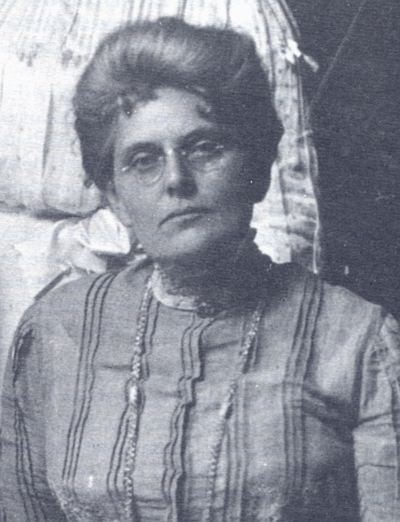 Sloan Hall was named for Lucy A. Sloan. For several years after her graduation form Hillsdale College, Sloan taught in Kentucky at Berea College. Later, she was an instructor in the Lansing
city schools until 1897, when she resigned her position there and accepted the position of Preceptress of Central State Normal. As the school grew, her duties were mainly concentrated
in the role of English Department Head. Miss Sloan was widely acclaimed as an outstanding teacher, speaker, and textbook author. She also helped found the school's first literary society
for women in 1912. Miss Sloan died in October of 1918. Her obituary, which ran in the October 31 edition of the
Mt. Pleasant Times included the following tribute: "Miss Sloan was always a welcome guest at any social gathering. Her sense of humor, her ability as a storyteller, her kindliness
of manner made her the best of companions. She was heart and soul in the suffrage movement and gave her time and talent freely in its cause."
Sloan Hall was named for Lucy A. Sloan. For several years after her graduation form Hillsdale College, Sloan taught in Kentucky at Berea College. Later, she was an instructor in the Lansing
city schools until 1897, when she resigned her position there and accepted the position of Preceptress of Central State Normal. As the school grew, her duties were mainly concentrated
in the role of English Department Head. Miss Sloan was widely acclaimed as an outstanding teacher, speaker, and textbook author. She also helped found the school's first literary society
for women in 1912. Miss Sloan died in October of 1918. Her obituary, which ran in the October 31 edition of the
Mt. Pleasant Times included the following tribute: "Miss Sloan was always a welcome guest at any social gathering. Her sense of humor, her ability as a storyteller, her kindliness
of manner made her the best of companions. She was heart and soul in the suffrage movement and gave her time and talent freely in its cause."
Smith Hall
Opened: 1934
Cost: $75,000
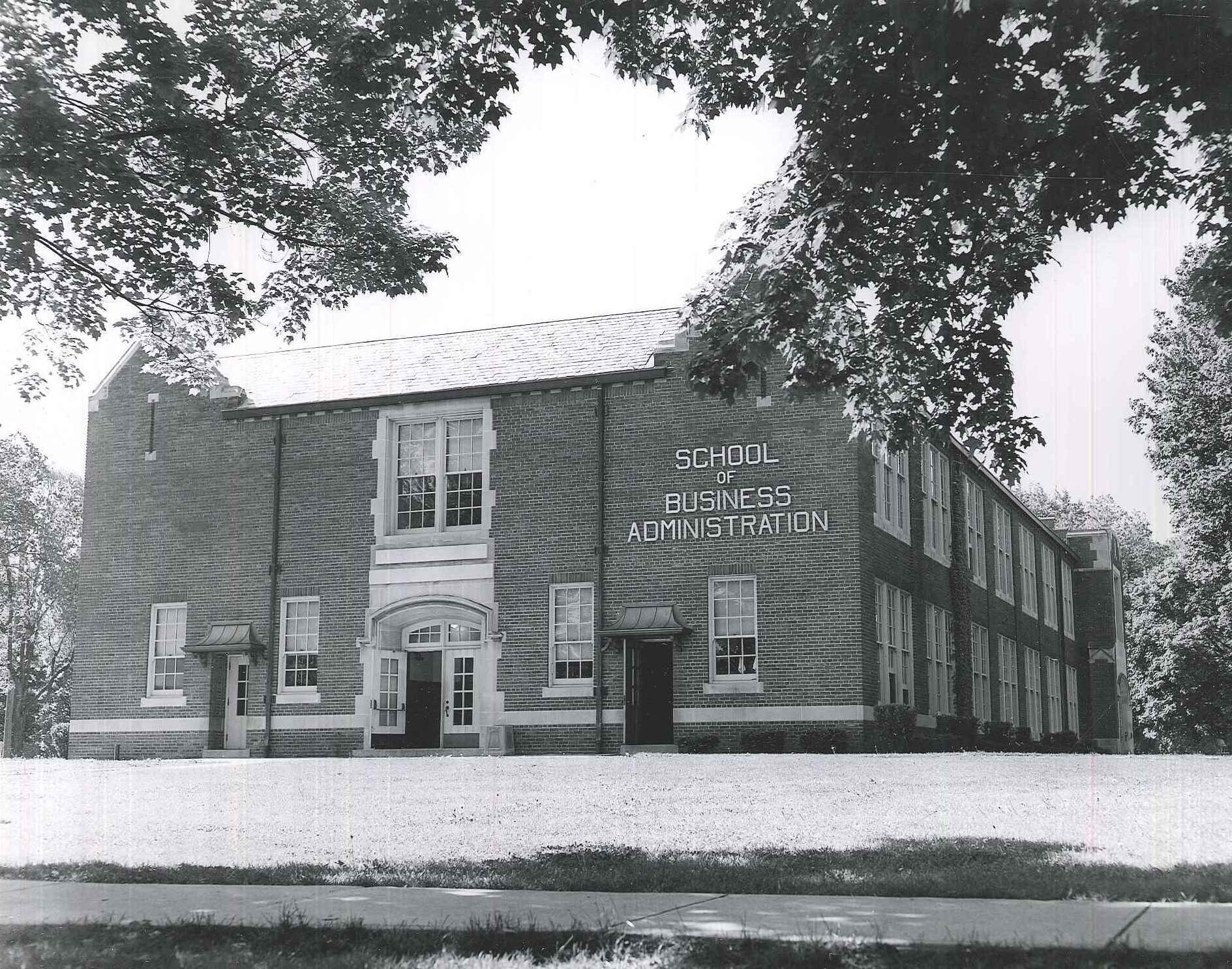 In the days following the disastrous fire that destroyed the Training School in 1933, College officials began planning for the construction of a new building that would house the elementary
school at which Central teachers were trained. $75,000 was authorized for the building's construction, the amount guaranteed by the insurance on the building destroyed in the fire. The
new training school was designed by architect BC Wetzel of Detroit with the help of local authorities. The two-story building, which featured a steel-supported saddle roof, was only one
part of a three-building complex planned for the site. A junior high school and gymnasium were planned but never added.
In the days following the disastrous fire that destroyed the Training School in 1933, College officials began planning for the construction of a new building that would house the elementary
school at which Central teachers were trained. $75,000 was authorized for the building's construction, the amount guaranteed by the insurance on the building destroyed in the fire. The
new training school was designed by architect BC Wetzel of Detroit with the help of local authorities. The two-story building, which featured a steel-supported saddle roof, was only one
part of a three-building complex planned for the site. A junior high school and gymnasium were planned but never added.
Groundbreaking took place in the late summer of 1933. Rozycki Brothers of Detroit were awarded the construction contract for $42,700. William M. Ackerman of Grand Rapids installed the electrical equipment and Bay City Plumbing and Heating Company also contributed to the construction. Because the Rozycki Brothers were members of the National Recovery Administration, a New Deal organization, crews were prevented from working more than 40 hours in a week, although this did not delay construction significantly. Excavation of the site was completed by October 1933, and the excavated dirt was used to level the training school playground lawn. Some of the undamaged bricks from the original training school were used for parts of the foundation of the new building. A large shovel and a hoist were brought in to be used on the construction. The new College Elementary School was scheduled to open in March 1934, but bitterly cold winter weather pushed that date back to May 20, 1934, at which time students and faculty began using the new facilities. The building was officially dedicated in January 1935 by President EC Warriner, representatives from the State Board of Education, and a speaker from the University of Chicago.
The new building had space enough for 240 elementary school children, including a five-room suite for kindergarteners on the northwest corner of the building. The suite had its own entrance and contained individual lockers for each child. Facilities for higher grades were located on both the first and second floors, and the building contained office space for faculty and teachers in training. There was also space for displaying the work of elementary students. The first exhibit displayed in 1934 featured pieces by fifth grade students demonstrating the work of Navajo Indians. A tiny snapping turtle and a giant terrapin were also present for the building's opening, having taken up residence in the fourth grade aquarium. By the fall of 1934, parents of the elementary students had organized the first PTA at the College Elementary School.
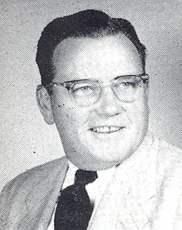 The new building went by many names during its early history. It was called the College Elementary School, the Laboratory School, the new Training School, or just the Elementary School through
mid-century. In December 1960, school officials announced that the name of the old Elementary School would be officially changed to the Business Administration Building. However, when
the new addition to Grawn Hall opened in 1966 and the School of Business Administration moved out of the building, the Old Elementary School was commonly known as North Hall. In May 1984,
the Board of Trustees announced that North Hall would become Smith Hall, a name it retains to this day.The building was named for Woodward C. Smith, a longtime administrator. Smith received
his Bachelor of Arts from Central and his MA from Michigan State University. He taught high school in Remus, Trufant, Nashville, and Comstock Park before coming to Central in 1942. He
served the College in many capacities: as an instructor, an associate professor, as the Assistant Director of Extension, the Director of Field Services, and finally as the Vice President
for Public Services in 1956. He was responsible for the growth of Central's outreach programs in the 1950s, the ancestors of the current College of Extended Learning. He was also Central's
first liaison to the state legislature. He was awarded honorary PhDs from Ferris and Eastern Michigan University. In addition to his work for Central, he served as the president for the
National and Michigan Associations of Field Services and Extension Programs and for the Michigan Rural Teachers Association.
The new building went by many names during its early history. It was called the College Elementary School, the Laboratory School, the new Training School, or just the Elementary School through
mid-century. In December 1960, school officials announced that the name of the old Elementary School would be officially changed to the Business Administration Building. However, when
the new addition to Grawn Hall opened in 1966 and the School of Business Administration moved out of the building, the Old Elementary School was commonly known as North Hall. In May 1984,
the Board of Trustees announced that North Hall would become Smith Hall, a name it retains to this day.The building was named for Woodward C. Smith, a longtime administrator. Smith received
his Bachelor of Arts from Central and his MA from Michigan State University. He taught high school in Remus, Trufant, Nashville, and Comstock Park before coming to Central in 1942. He
served the College in many capacities: as an instructor, an associate professor, as the Assistant Director of Extension, the Director of Field Services, and finally as the Vice President
for Public Services in 1956. He was responsible for the growth of Central's outreach programs in the 1950s, the ancestors of the current College of Extended Learning. He was also Central's
first liaison to the state legislature. He was awarded honorary PhDs from Ferris and Eastern Michigan University. In addition to his work for Central, he served as the president for the
National and Michigan Associations of Field Services and Extension Programs and for the Michigan Rural Teachers Association.
Special Olympics Building
Opened: 1988
Renovation Cost: $700,000
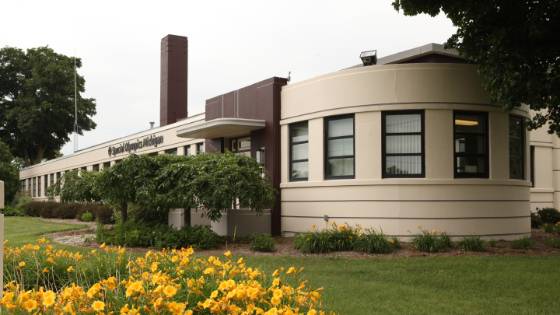 In 1987, Central Michigan University obtained ownership of the Michigan Maintenance Garage and Construction Division of the Michigan Department of Transportation, located at 1120 S. Mission.
The transaction of the lot was a simple land-transfer and the building was purchased for $1 by the University. The building had been discussed as a replacement for the University motor pool
facilities, but when administrators approved funding for the construction of a new motor pool building, the Department of Transportation building was available for an alternative use.
In 1987, Central Michigan University obtained ownership of the Michigan Maintenance Garage and Construction Division of the Michigan Department of Transportation, located at 1120 S. Mission.
The transaction of the lot was a simple land-transfer and the building was purchased for $1 by the University. The building had been discussed as a replacement for the University motor pool
facilities, but when administrators approved funding for the construction of a new motor pool building, the Department of Transportation building was available for an alternative use.
In 1988, the University announced a proposed contract with Special Olympics Michigan that would allow the University to finance the remodeling of the Department of Transportation building into office space for the Special Olympics Office. Special Olympics Michigan had a long history with CMU prior to this point, as Central had been the home of Special Olympics Michigan since it was founded in 1972 and hosted the International Special Olympic Summer Games in 1975. The Special Olympics office was originally located in Warriner Hall and then moved to Rowe Hall, where it was located when the University obtained the new building. Although CMU agreed to finance the renovation, Special Olympics Michigan agreed to pay back the cost in eight equal installments pending the completion of the project. The project was fully paid off by 1997.
Renovation of the Department of Transportation Building was undertaken by the Helger Construction Company of Midland at a cost of $700,000. Crews installed new walls, a new boiler, new plumbing, and new electrical equipment throughout the building. In addition, new windows and a new roof were installed, the garage door was blocked off, and the entrances from Mission Street were removed in favor of a new entrance from East Campus Drive. The amount of funding available for the project, which was significantly below the original bids, forced crews to make alterations to the original design. These included the use of lesser quality flooring and less elaborate lighting fixtures inside the building, as well as the abandonment of plans to install a flag pole and decorative light fixtures on the exterior of the building. Special Olympics Michigan moved into its new home in 1988 and remains there today.
While renovations to the Department of Transportation building went smoothly and the Special Olympics Office was able to move into its new home shortly after work began, plans to pave the adjoining lot into parking spaces involved more complications. In preparation for paving, CMU elected to have the Michigan Department of Public Health test the soil on the 297 ft. by 330 ft. lot. The land had housed the Department of Transportation garage for over fifty years, which included underground storage tanks for gasoline and fuel oil, as well as a salt storage building. As a result, the Department of Health discovered elevated levels of contaminants in the immediate area of the building. Estimated cost of the clean-up ranged from $200,000 to $300,000. The University eventually paved the area into additional parking spaces.
Student Activity Center (SAC)
Opened: September 3rd, 1990
Cost: $14.9 Million
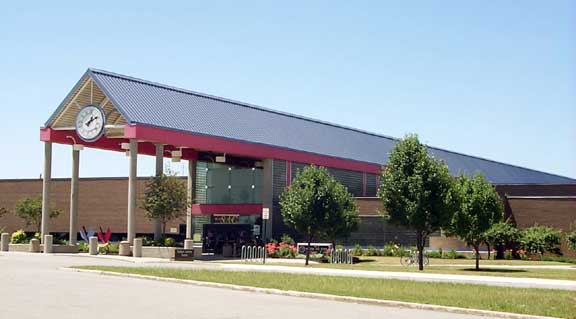 The complex that is now known as the Student Activity Center was first proposed as a $5.5 million Physical Education building in October 1969. Designed by Daverman Architect and Engineering firm
of Grand Rapids, the building's construction contract was awarded to the Christman Company of Lansing in 1971. The building was planned for an area on the south side of Broomfield, continuing
the expansion of campus to the south. To facilitate the increased traffic from the construction of the new athletic complex and a number of residence halls on the south side of campus, Broomfield
Road was widened to four lanes and a median was added for pedestrians.
The complex that is now known as the Student Activity Center was first proposed as a $5.5 million Physical Education building in October 1969. Designed by Daverman Architect and Engineering firm
of Grand Rapids, the building's construction contract was awarded to the Christman Company of Lansing in 1971. The building was planned for an area on the south side of Broomfield, continuing
the expansion of campus to the south. To facilitate the increased traffic from the construction of the new athletic complex and a number of residence halls on the south side of campus, Broomfield
Road was widened to four lanes and a median was added for pedestrians.
Excavation was underway on the project by summer of 1971 but problems delayed the opening of the new building. In January 1972, high winds caused the collapse of several steel columns on the partially constructed building. Later that year, three workers were injured when a steel beam fell over thirty feet to the ground.
The building itself, which opened in the summer of 1973, was an impressive addition to campus. The complex was twice the size of Finch Fieldhouse, which served as the primary location of the school's athletic pursuits prior to this point. It had separate areas for wrestling, handball, dance, gymnastics, and physical conditioning. There was a specially equipped facility for students with disabilities. There was also a 6,000 seat basketball arena that could be converted to classroom space, a six-lane competitive pool and separate diving pool, and a turf room that featured a Tartan turf surface similar to that installed at Spartan Stadium. Outside, the complex also included eight tennis courts and four softball/soccer fields. In January, 1973, it was announced that the athletic complex building would be named the Daniel P. Rose Center and that the academic wing would be named Grace E. Ryan Hall. The Rose Center remained the hub of both intramural and recreational athletic activity throughout the 1970s and 1980s.
However, with the continued growth of the student body and increasing demands from students for an expansion, Trustees approved financing for an expansion to the existing Rose Center in 1987. Dubbed Physical Education and Recreation Phase II, the plans called for a $14.9 million, 179,000 square foot addition to the Rose Center. The addition was designed by TMP Associates of Bloomfield Hills and built by the Christman Corporation of Lansing. The new expansion would feature six racquetball courts, a three-lane jogging track, a twelve-lane bowling alley, six multipurpose gymnasiums, a pool, weight room facilities, and two auxiliary gymnasiums. In 1990, University officials announced a name change for the facility. The entire athletic complex would now be known as the Student Activity Center, while the basketball arena would be known as Rose Arena and academic and office space within the building would continue to be known as Ryan Hall. All of the facilities would be under the supervision of Campus Recreational Services with the exception of the arena, which would remain under the Department of Athletics.
Funding for the operations of the Student Activity Center caused debate on and off campus. The SAC was designed to be funded by student fees, which were automatically added to room and board fees. While on-campus full time students had been paying a fee ($112 annually) since construction began, officials announced in 1990 that a fee would also be added to off-campus students as well. SGA formally and informally protested by offering alternatives and organizing a "$90 Feet Day" in which all students would go shoeless within academic buildings on campus in protest of trustee Rachel Moreno's claim that if students could afford expensive tennis shoes they could afford the new fee. Even with the protests, the fee remained in place.
Doors to the Student Activity Center officially opened on September 3, 1990. Students and faculty were required to show their campus identification card, which contained information about whether that student had paid the annual fee, to enter the facility. The complex was officially dedicated with a ribbon cutting ceremony on October 4, 1990. CMU President Edward B. Jakubauskas, Chair of the Board of Trustees Margaret Riesker, and SAC Director Tom Jones were among those who spoke in front of a crowd of about one hundred gathered on a converted section of one of the basketball courts.
Sweeney Hall
Opened: 1961
Cost: $1.56 Million
Capacity: 316
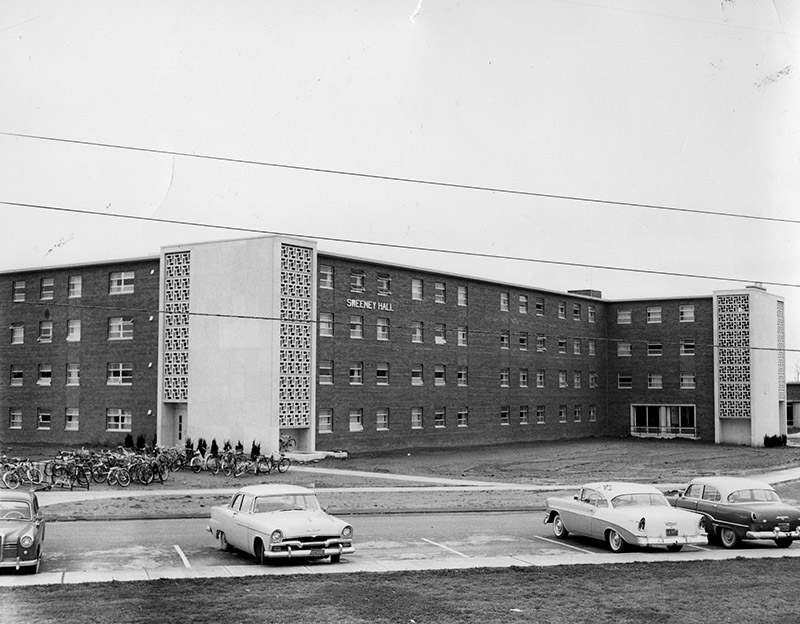 Sweeney Hall was the second residence hall built in a quadrangle on what was then the southern limit of campus. Sweeney, along with Merrill, Beddow, and Thorpe, was located south of Washington Court
and far from any classroom or other campus buildings. There were no sidewalks, streetlights, or public transportation when the first inhabitants moved in. The construction of these four buildings,
the southeast quad, and the Towers complex by the early 1970s relocated the center of campus living southward. Because Sweeney and Merrill Halls were the first residence halls opened this far south,
it was difficult to convince students to sign up for rooms in buildings located so far from what was then the center of campus activity.
Sweeney Hall was the second residence hall built in a quadrangle on what was then the southern limit of campus. Sweeney, along with Merrill, Beddow, and Thorpe, was located south of Washington Court
and far from any classroom or other campus buildings. There were no sidewalks, streetlights, or public transportation when the first inhabitants moved in. The construction of these four buildings,
the southeast quad, and the Towers complex by the early 1970s relocated the center of campus living southward. Because Sweeney and Merrill Halls were the first residence halls opened this far south,
it was difficult to convince students to sign up for rooms in buildings located so far from what was then the center of campus activity.
Sweeney, along with the other residence halls in this area of campus, was designed by architects from Roger Allen and Associates in Grand Rapids. The $1.56 million building was designed to house 316
students. The building opened for occupancy in the summer of 1961 as a women's hall, the sister hall to Merrill. Both Merrill and Sweeney Halls were dedicated in a joint ceremony on November 5, 1961.
In 2010, Sweeney Hall was the last hall to change to co-ed, marking an end to single-sex residence halls at CMU.
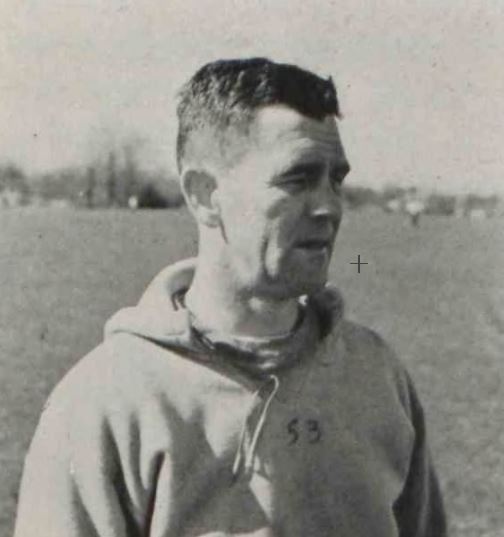 Sweeney Hall was named for a longtime professor in the Department of Physical Education and the coach of Central's gymnastics team. Lawrence "Doc" Sweeney was born on August 13, 1907 in Mt. Pleasant.
He graduated from Sacred Heart Academy and Central State Teachers College. He taught gymnastics at Central and developed a touring gymnastics demonstration group. He spent thirteen years as a line
coach for the football team and he coached Central's basketball team during World War II. He was a pioneer in the development of summer athletic camps at Central, and was mostly responsible for the
change in mascot from the Bearcats to the Chippewas, which he felt would allow for more pageantry at halftime. He and his wife, Mary, had a son and two daughters. Sweeney died on August 24, 1957.
Sweeney Hall was named for a longtime professor in the Department of Physical Education and the coach of Central's gymnastics team. Lawrence "Doc" Sweeney was born on August 13, 1907 in Mt. Pleasant.
He graduated from Sacred Heart Academy and Central State Teachers College. He taught gymnastics at Central and developed a touring gymnastics demonstration group. He spent thirteen years as a line
coach for the football team and he coached Central's basketball team during World War II. He was a pioneer in the development of summer athletic camps at Central, and was mostly responsible for the
change in mascot from the Bearcats to the Chippewas, which he felt would allow for more pageantry at halftime. He and his wife, Mary, had a son and two daughters. Sweeney died on August 24, 1957.
Theunissen Stadium
Opened: 2002
Cost: $4.6 Million
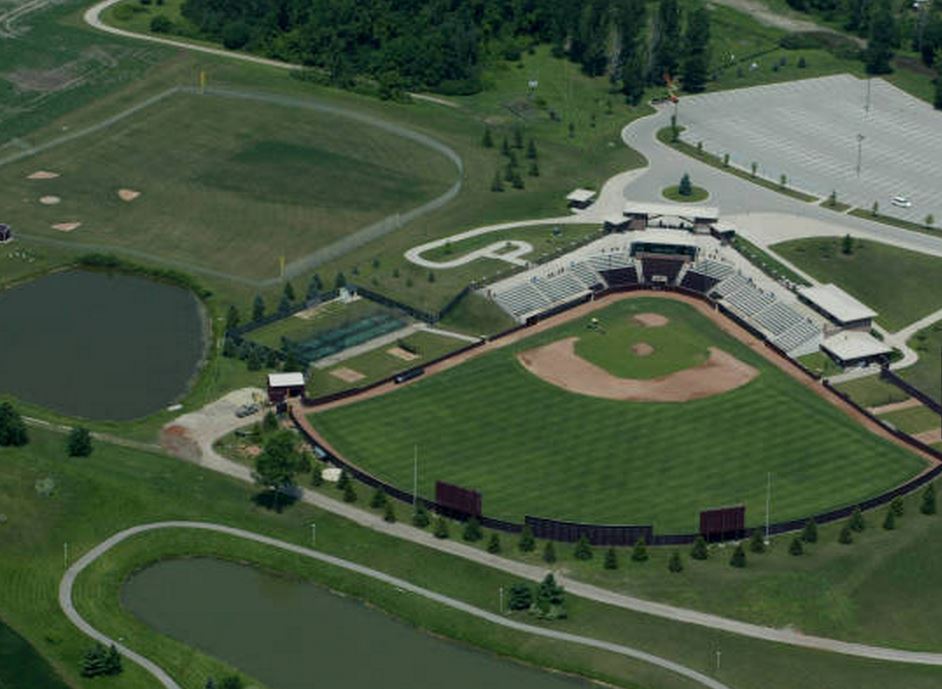 The new Theunissen Stadium opened in 2002 and is the home of Central Michigan University baseball. The stadium was designed by Heery International of Atlanta and Hobbs and Black and Associates of Ann
Arbor. The stadium was built by Three Rivers Construction during the winter of 2001-2002. The overall cost of the project was $4.6 million. The new stadium replaced the old Theunissen Stadium, which
in turn had been known as Alumni Stadium from 1949-1987. Located on Preston Street and part of the athletic complex known as Alumni Field, the old stadium hosted baseball games and other events for
decades before the University made a concerted effort to relocate all of its athletic facilities to the south end of campus. The new Theunissen Stadium was built on West Campus Drive, South of Broomfield
Street.
The new Theunissen Stadium opened in 2002 and is the home of Central Michigan University baseball. The stadium was designed by Heery International of Atlanta and Hobbs and Black and Associates of Ann
Arbor. The stadium was built by Three Rivers Construction during the winter of 2001-2002. The overall cost of the project was $4.6 million. The new stadium replaced the old Theunissen Stadium, which
in turn had been known as Alumni Stadium from 1949-1987. Located on Preston Street and part of the athletic complex known as Alumni Field, the old stadium hosted baseball games and other events for
decades before the University made a concerted effort to relocate all of its athletic facilities to the south end of campus. The new Theunissen Stadium was built on West Campus Drive, South of Broomfield
Street.
Upon completion, Theunissen Stadium suffered slightly from some flooding and drainage problems. The dugout and clubhouse flooded two weeks before opening day after a significant rain and snow storm. Additionally, that summer also saw some drainage problems in the infield and outfield, which resolved themselves shortly after the flooding event.
Still, the stadium boasted several new features compared to the facility it was replacing. The stadium was designed with 400 chairback seats behind home plate and bleacher-style seating along the first and third-base lines. The stadium seats 2,046 spectators in total. There was also a press box with two radio booths, a message board, an electronic scoreboard, and an outdoor practice area. Finally, the Dave and Sue Keilitz Clubhouse offered state-of-the-art facilities for players and coaches. A minor renovation project in 2010 added fencing to an adjacent baseball diamond to create a fully-functioning practice field, along with aesthetic improvements to both the dugouts and the stadium walls. Beginning in 2016, a $2 Million Baseball Performance Development Center was constructed to allow for extra training in the off-season.
The first game at the new stadium was played on March 29, 2002, against Ohio, although the stadium was not officially dedicated as the William V. Theunissen Stadium until April 27, during a double-header against Northern Illinois University. 1,100 fans and over 300 former CMU baseball players, including World Series champion Kevin Tapani, attended the dedication ceremonies.
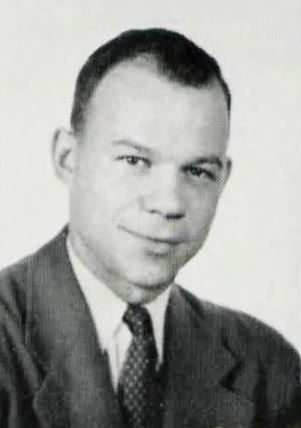 The facility was named after Bill Theunissen, a former baseball coach and administrator with the University. His baseball teams compiled a 151-114-1 record during his tenure in the 1950s and early 1960s.
At the time of his retirement in 1986, Theunissen was the winningest coach in CMU baseball history, and he currently ranks fourth on that list. Besides playing a variety of sports and coaching baseball
at Central, Theunissen became a professor of health and physical education before serving as dean of the School of Health, Physical Education, and Recreation (later renamed the School of Education,
Health, and Human Services).
The facility was named after Bill Theunissen, a former baseball coach and administrator with the University. His baseball teams compiled a 151-114-1 record during his tenure in the 1950s and early 1960s.
At the time of his retirement in 1986, Theunissen was the winningest coach in CMU baseball history, and he currently ranks fourth on that list. Besides playing a variety of sports and coaching baseball
at Central, Theunissen became a professor of health and physical education before serving as dean of the School of Health, Physical Education, and Recreation (later renamed the School of Education,
Health, and Human Services).
Thorpe Hall
Opened: 1963
Cost: $1.3 Million
Capacity: 316
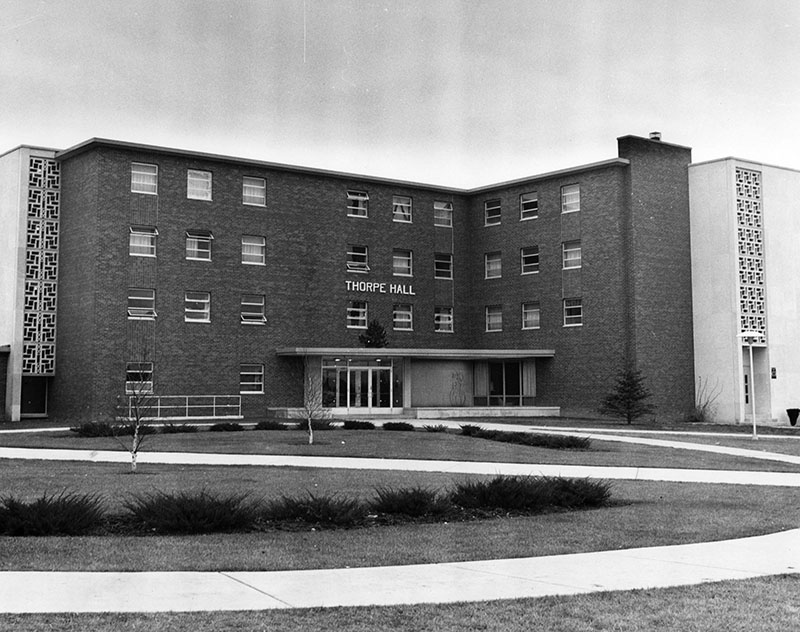 Thorpe Hall was the last residence hall built in the quadrangle located on what was then the southern end of campus. The quad was south of Washington Court and far from any classroom or other campus buildings.
Although the University had difficulties convincing students to take rooms in the first buildings to open, by the time Thorpe was ready for occupancy students were much more comfortable living on this
end of campus. Indeed, by the early 1970s, following the construction of a southeast quad and the towers complex, the center of student life on campus had relocated southward.
Thorpe Hall was the last residence hall built in the quadrangle located on what was then the southern end of campus. The quad was south of Washington Court and far from any classroom or other campus buildings.
Although the University had difficulties convincing students to take rooms in the first buildings to open, by the time Thorpe was ready for occupancy students were much more comfortable living on this
end of campus. Indeed, by the early 1970s, following the construction of a southeast quad and the towers complex, the center of student life on campus had relocated southward.
Thorpe, along with the other residence halls in this area of campus, was designed by architects from Roger Allen and Associates in Grand Rapids and was built by the Collinson Construction Company of Midland. The $1.3 million building was designed to house 316 students. The building opened for occupancy in the spring of 1963. It, along with Beddow Hall, was officially dedicated in a joint ceremony on May 26, 1963.
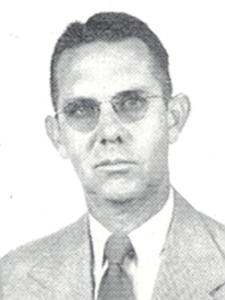 Thorpe Hall's first residents were 300 "volunteers" who moved from their rooms in Robinson, Sloan, Ronan, and Barnes Halls. They were randomly selected and ordered to move over the weekend of December 15-19,
1962. Sixty came from Ronan, fifty from Barnes, forty from Sloan, and 150 from Robinson. The hall's suite plan was copied from Tate Hall, the same plan that was used in all halls until the Towers began
to open in the late 1960s.
Thorpe Hall's first residents were 300 "volunteers" who moved from their rooms in Robinson, Sloan, Ronan, and Barnes Halls. They were randomly selected and ordered to move over the weekend of December 15-19,
1962. Sixty came from Ronan, fifty from Barnes, forty from Sloan, and 150 from Robinson. The hall's suite plan was copied from Tate Hall, the same plan that was used in all halls until the Towers began
to open in the late 1960s.
Thorpe Hall was named for the Head Librarian from 1955 to 1958. Before his appointment at Central, he had been an assistant librarian since 1941. He was born in Waco, Nebraska. He received his AB from Peru Teacher's College and his MA from the University of Michigan. He did course work toward his PhD at Michigan State University.
Towers Complex
Opened: 1969-71
Cost: $8.6 Million
Addition and Renovation: 2001-03
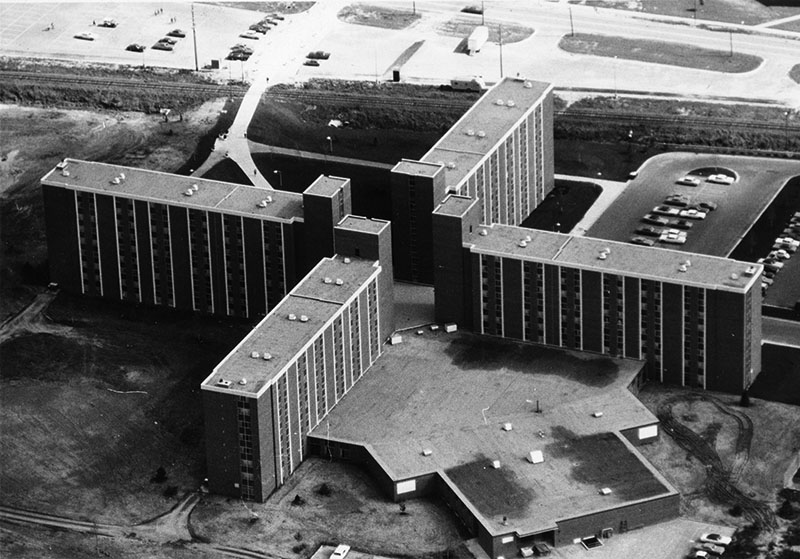 University officials began discussing plans for a high-rise on-campus living complex in the mid-1960s in response to rapid growth in the campus population. Central had 17 residence halls in 1967 that were designed
to house 5,500 students, but with over 6,000 planning to live on campus, a new housing alternative became a priority. Original plans called for the complex to be built on the northwest corner of campus,
on the site of present-day Northwest Apartments. However, the ground at that location was determined to be too unstable for such massive structures. Since shoring up the ground was prohibitively expensive,
planners looked to the south end of campus as an alternative construction site.
University officials began discussing plans for a high-rise on-campus living complex in the mid-1960s in response to rapid growth in the campus population. Central had 17 residence halls in 1967 that were designed
to house 5,500 students, but with over 6,000 planning to live on campus, a new housing alternative became a priority. Original plans called for the complex to be built on the northwest corner of campus,
on the site of present-day Northwest Apartments. However, the ground at that location was determined to be too unstable for such massive structures. Since shoring up the ground was prohibitively expensive,
planners looked to the south end of campus as an alternative construction site.
Officials approved the plans for the new complex in 1967. Designed by architect Roger Allen of Grand Rapids, the $8.6 million project began in October 1967. The building plans called for two 8-story towers and two 9-story towers connected to and served by a central food commons. The construction contract was awarded to the Christman Company of Lansing, and the Great Lakes Hotel and Supply Company of Detroit was responsible for construction of the food service facilities. In summer 1968, strikes by five unions shut down construction on several buildings across campus. The new complex was the hardest hit, since it was in the early stages of construction when the strike began. The strike lasted over three months and the original opening date for the complex was pushed back.
After the strike ended, construction proceeded on schedule. Conflicts arose over access to sewage and water, but in November 1968, Mt. Pleasant residents west of the construction site voted to annex to the city, allowing the site itself to be annexed and for crews to connect the site to the city's water and sewer systems. The buildings opened one at a time over the course of the next two years. All four buildings were dedicated on June 12, 1971.
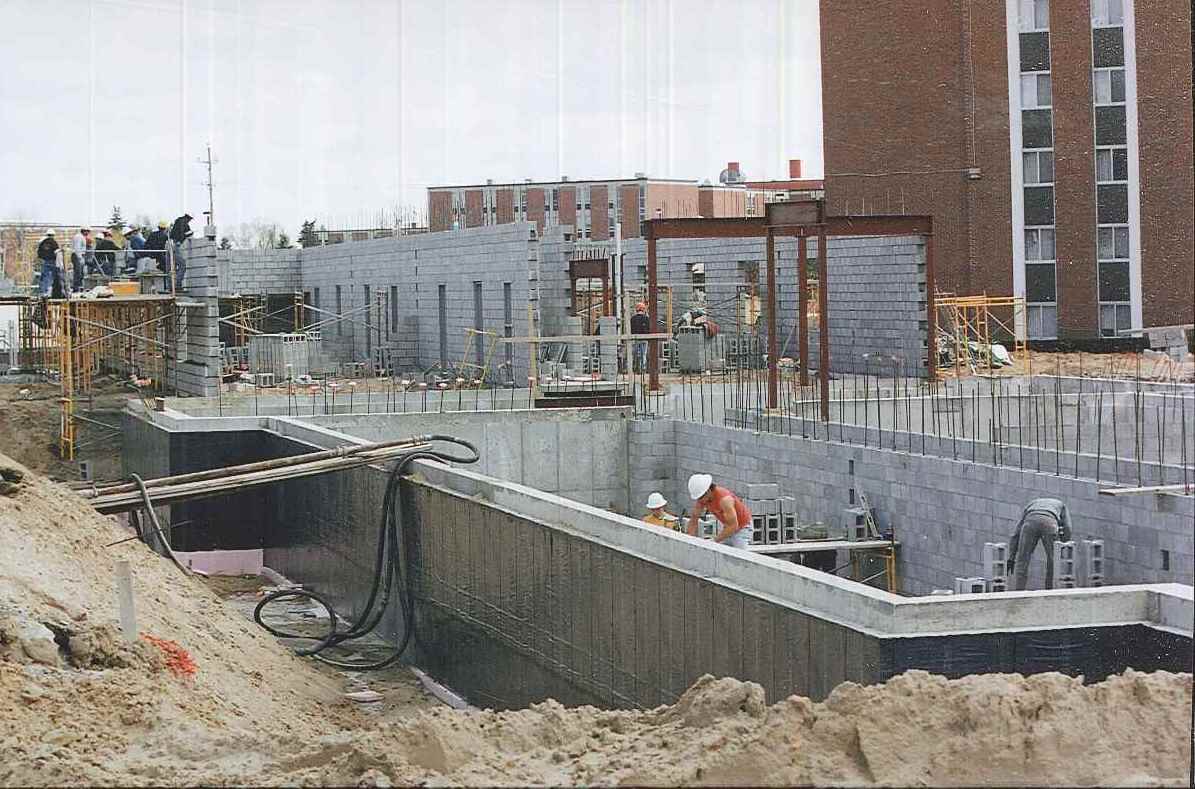 With so many students now concentrated on the south end of campus, the Towers complex became a new center of student activity. Even though a request by a group of students to be allowed to sunbathe on the roof
of the dining commons was denied due to worries about deterioration to the building, students made the best of their new location and the Towers have housed hundreds of students each semester since their
construction.
With so many students now concentrated on the south end of campus, the Towers complex became a new center of student activity. Even though a request by a group of students to be allowed to sunbathe on the roof
of the dining commons was denied due to worries about deterioration to the building, students made the best of their new location and the Towers have housed hundreds of students each semester since their
construction.
In the fall of 2001, University officials announced plans for the construction of a new high rise residence hall project which would be built as an addition to the existing Towers complex, originally completed in 1969-1970. The first new residence halls to be built by the University in over 30 years, the $33 million housing complex would add an additional 238,000 square feet to the existing dormitory complex. Plans for the project were created by architects at Design Plus in Grand Rapids. The Christman Company of Lansing, which constructed the original Towers project, received the contract for the new buildings as well as the $8 million in renovations planned for the existing halls.
Construction officially began with a groundbreaking ceremony in November 2001. The plans called for a large complex that would include space for 714 additional residents, classrooms, a technology center, and a workout room. A convenience store and a DVD/video game rental outlet were also included in the original designs. Parking facilities would be redesigned so that three separate parking lots would now serve the housing complex, the main one leading to a circular drive bounded by two ponds. A new security system, comprised of 54 cameras and proximity readers on exterior doors, was also installed as part of the project.
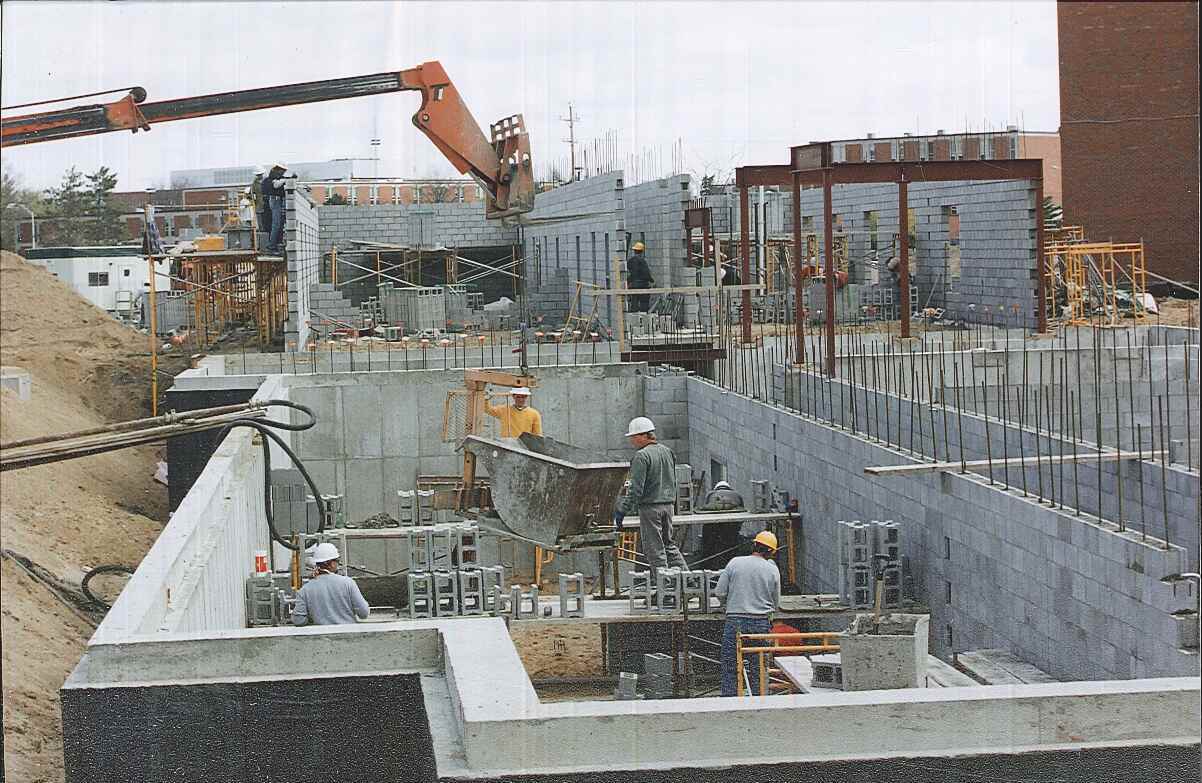 As the additions to the Towers complex neared completion in the fall of 2003, the University announced the official names of the new buildings. Kesseler Hall, which had been named previously, would be joined
by Kulhavi Hall (called Gold Hall during construction) and Campbell Hall (called Maroon Hall during construction). In September, as students moved into the new residence halls, the University held an official
dedication ceremony. Trustees Campbell, Kesseler, and Kulhavi were honored in front of around 300 CMU alumni and donors, and President Michael Rao gave a speech.
As the additions to the Towers complex neared completion in the fall of 2003, the University announced the official names of the new buildings. Kesseler Hall, which had been named previously, would be joined
by Kulhavi Hall (called Gold Hall during construction) and Campbell Hall (called Maroon Hall during construction). In September, as students moved into the new residence halls, the University held an official
dedication ceremony. Trustees Campbell, Kesseler, and Kulhavi were honored in front of around 300 CMU alumni and donors, and President Michael Rao gave a speech.
That same month, residents of the Towers complex held a pep rally to encourage unity among the old and new buildings. Around 1,500 student residents gathered at the intramural fields in an event sponsored by the seven buildings that make up the Towers complex. The event not only encouraged closer ties between residents of different buildings, it also kicked off the annual year-long friendly competition between residents of those buildings.
Trout Hall
Opened: 1959
Cost: $ 1.38 Million
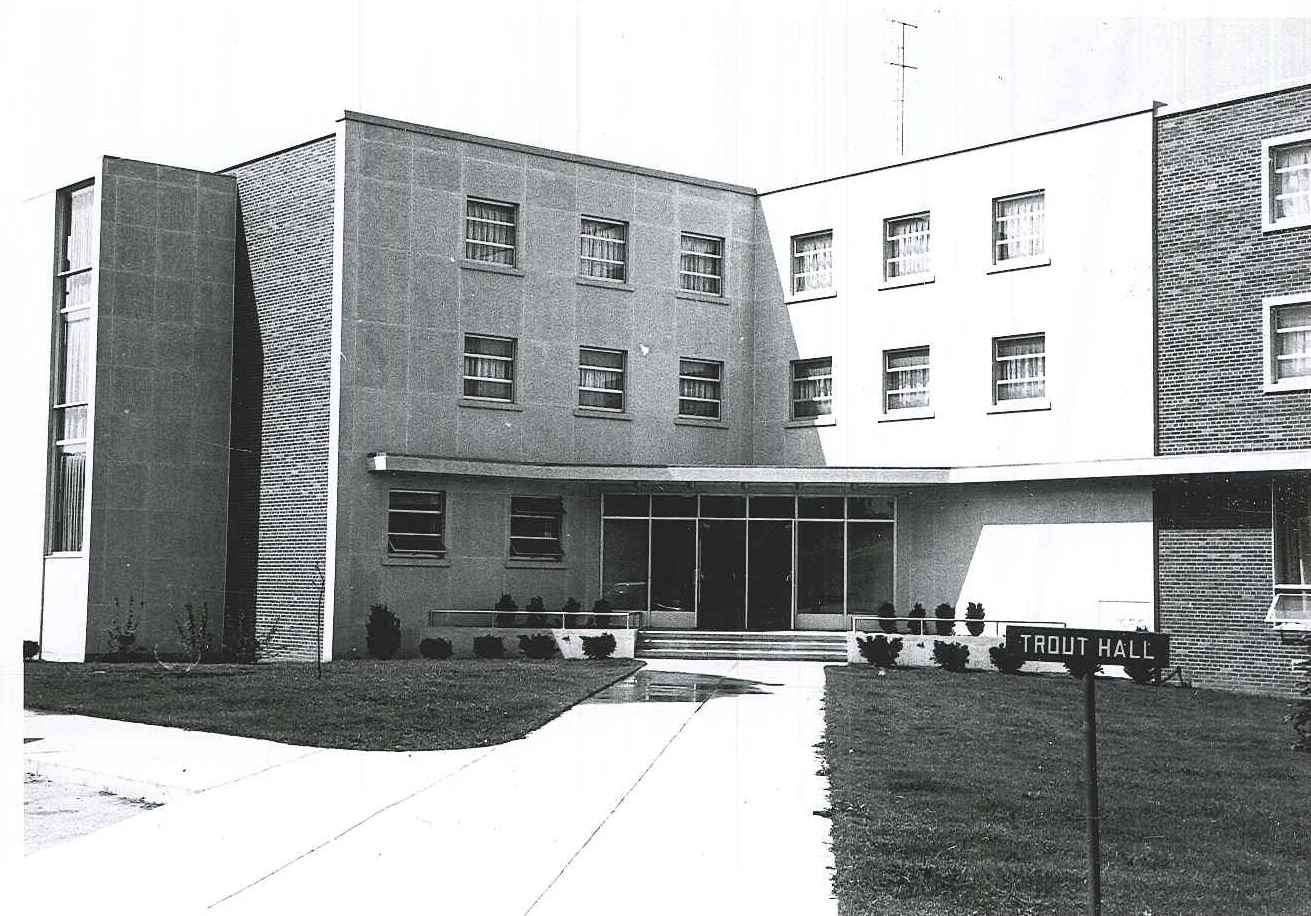 Trout Hall completed the quadrangle of residence halls on the northwest side of campus. The location of Trout Hall and neighboring Calkins Hall was the site of the Centralville married student housing (Hopkins
Court) within the Vetville complex that temporarily housed student veterans after the Second World War, although by the time construction started on the new residence halls the apartment buildings that had
once stood there had been sold and removed. The $1.38 million building was designed by architect Roger Allen of Grand Rapids, who designed many of the other residence halls built during the period of campus
expansion and construction in the 1950s and 1960s. The interior plans copied those developed for Tate Hall the previous year, which featured a suite-style layout that would heavily influence on-campus living
design until the construction of the Towers complex in the late 1960s. Trout Hall shares a dining commons with Robinson, Larzelere, and Calkins Halls.
Trout Hall completed the quadrangle of residence halls on the northwest side of campus. The location of Trout Hall and neighboring Calkins Hall was the site of the Centralville married student housing (Hopkins
Court) within the Vetville complex that temporarily housed student veterans after the Second World War, although by the time construction started on the new residence halls the apartment buildings that had
once stood there had been sold and removed. The $1.38 million building was designed by architect Roger Allen of Grand Rapids, who designed many of the other residence halls built during the period of campus
expansion and construction in the 1950s and 1960s. The interior plans copied those developed for Tate Hall the previous year, which featured a suite-style layout that would heavily influence on-campus living
design until the construction of the Towers complex in the late 1960s. Trout Hall shares a dining commons with Robinson, Larzelere, and Calkins Halls.
David M. Trout residence hall was completed and ready for occupancy in June of 1959. The official dedication ceremony took place on April 24, 1960. The federal bonding agreement that provided some of the money
for construction stated that it was to house men. However, it only housed men for its first year of operation, switching to women in the fall of 1960. When it was first built, Trout was connected to Calkins
without any internal barriers. During their stay in the hall, the Trout men often rolled bowling balls down into Calkins until walls were erected separating the two.
After the Korean War, Central supported an orphanage in Mun San, South Korea. Trout Hall was the base of operations for this charitable undertaking. It had raised $5,200 by 1962. Central was the only university in the United States to support such an orphanage.
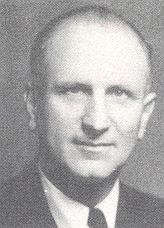 The hall was named for the Dean of Students from 1937 to 1954. David Trout was born in 1891 and died in 1954. He was part of CMU's faculty from 1937 until his death. Before becoming the Dean of Students, he
was the Head of the Department of Psychology and Education. He started the Division of Student Personnel at CMU and was the advisor for the Student Personnel Association for Teacher Education.
The hall was named for the Dean of Students from 1937 to 1954. David Trout was born in 1891 and died in 1954. He was part of CMU's faculty from 1937 until his death. Before becoming the Dean of Students, he
was the Head of the Department of Psychology and Education. He started the Division of Student Personnel at CMU and was the advisor for the Student Personnel Association for Teacher Education.
Troutman Hall
Opened: 1969
Cost: 8.6 Million (entire Towers Complex)
Capacity: 336
 University officials began discussing plans for a high-rise residence hall complex in the mid-1960s in response to rapid growth in the campus population. Central had 17 residence halls in 1967 designed to house
5,500 students. With over 6,000 planning to live on campus in the immediate future, a new housing alternative became a priority. Original plans called for the complex to be built on the northwest corner of campus,
on the site of present-day Northwest Apartments. However, the ground at that location was determined to be too unstable for such massive structures. Since shoring up the ground was prohibitively expensive, planners
looked to the south end of campus as an alternative construction site.
University officials began discussing plans for a high-rise residence hall complex in the mid-1960s in response to rapid growth in the campus population. Central had 17 residence halls in 1967 designed to house
5,500 students. With over 6,000 planning to live on campus in the immediate future, a new housing alternative became a priority. Original plans called for the complex to be built on the northwest corner of campus,
on the site of present-day Northwest Apartments. However, the ground at that location was determined to be too unstable for such massive structures. Since shoring up the ground was prohibitively expensive, planners
looked to the south end of campus as an alternative construction site.
Officials approved the plans for the new complex in 1967. Designed by architect Roger Allen of Grand Rapids, the $8.6 million project began in October 1967. The building plans called for two 8-story towers and two 9-story towers connected to and served by a central food commons. The construction contract was awarded to the Christman Company of Lansing and the Great Lakes Hotel and Supply Company of Detroit was responsible for construction of the food service facilities. Troutman Hall, one of the 8-story towers, opened in the fall of 1969 as a women's residence hall with a capacity of 336. In 1972, the hall became co-ed, which it remains to this day. Troutman, along with the other three buildings, was dedicated on June 12, 1971.
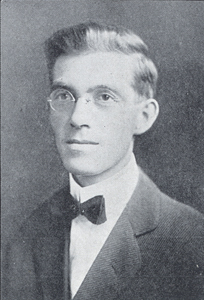 The hall was named for the head of the Manual Training Department from 1913 to 1933. Oliver Troutman was born on August 19, 1880, in New York. He graduated from Yindhurst Academy in Seneca Falls and worked for General
Electric for four years. He received his Bachelor of Arts from Cornell, where he taught for several years before coming to Central Michigan. While at Central, Troutman added a wide variety of courses to the
manual training curriculum, most notably in metalworking. He and his wife had no children, but served as foster parents to four nephews. He died on March 30, 1933 in Seneca Falls after a short illness.
The hall was named for the head of the Manual Training Department from 1913 to 1933. Oliver Troutman was born on August 19, 1880, in New York. He graduated from Yindhurst Academy in Seneca Falls and worked for General
Electric for four years. He received his Bachelor of Arts from Cornell, where he taught for several years before coming to Central Michigan. While at Central, Troutman added a wide variety of courses to the
manual training curriculum, most notably in metalworking. He and his wife had no children, but served as foster parents to four nephews. He died on March 30, 1933 in Seneca Falls after a short illness.
University Center (UC)
Opened: 1960
Cost: $2 Million
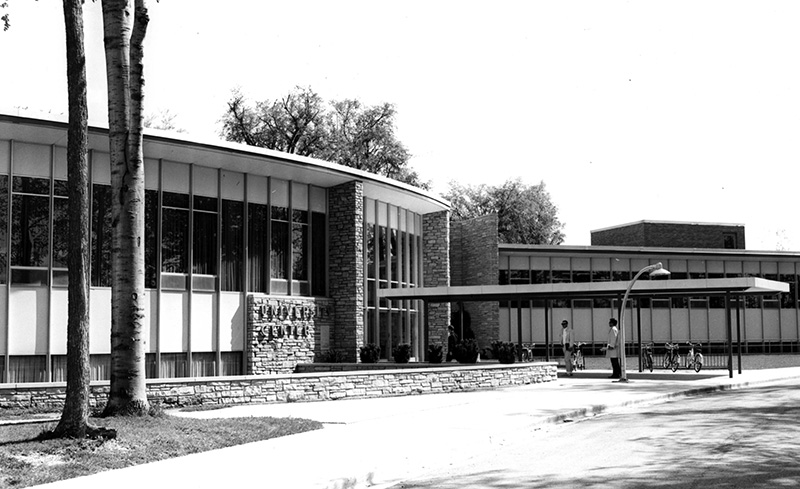 By the middle of the 1950s, students at Central began clamoring for the construction of a new student union to replace the existing union on campus. Keeler Union (now Powers Hall), built in 1939, was designed with
a campus population of only 900 in mind. The swelling number of students in the 1950s convinced school officials of the need for a new building. In 1958, they authorized $2 million for the construction of a
new union building that would be built behind Warriner Hall. The building was designed by Roger Allen of Grand Rapids and built by the Miller-Davis Company of Kalamazoo. The two-story, 85,000 square foot structure
was four times the size of the old student union and featured a central dome of concrete measuring one hundred feet in diameter.
By the middle of the 1950s, students at Central began clamoring for the construction of a new student union to replace the existing union on campus. Keeler Union (now Powers Hall), built in 1939, was designed with
a campus population of only 900 in mind. The swelling number of students in the 1950s convinced school officials of the need for a new building. In 1958, they authorized $2 million for the construction of a
new union building that would be built behind Warriner Hall. The building was designed by Roger Allen of Grand Rapids and built by the Miller-Davis Company of Kalamazoo. The two-story, 85,000 square foot structure
was four times the size of the old student union and featured a central dome of concrete measuring one hundred feet in diameter.
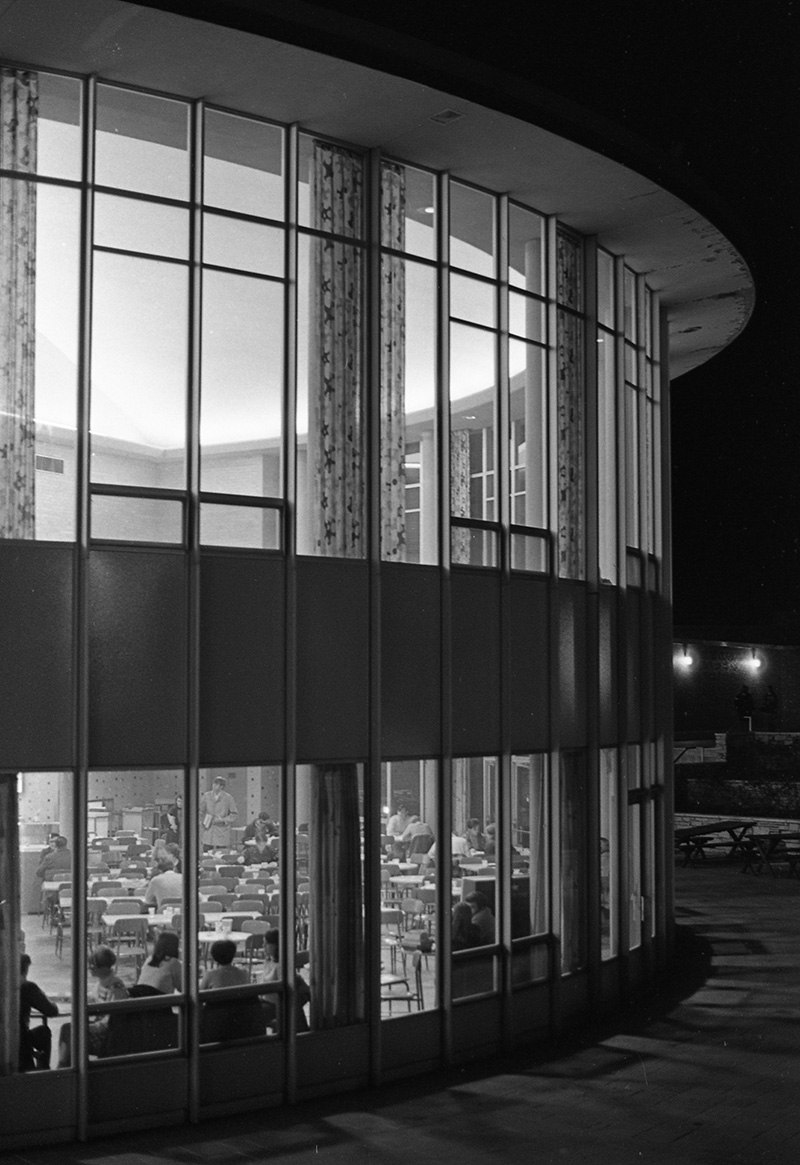 The new student center was not only a unique architectural addition to campus, it also offered a host of amenities, many of which are no longer available. There was a semi-circular ballroom capable of housing up
to 700 diners or 900 dancers and a new University Bookstore. There was a twelve-lane bowling alley, a game room with eight pool tables, and a television lounge. The University Center also featured a Creative
Arts Workshop with kilns, pottery wheels, painting supplies, and a completely furnished dark room. Some parts of the University Center were designed with a stylized Native American motif, such as the Reservation,
a large dining hall capable of seating over 400 diners. Other services could also be found in the UC such as a barber shop as well as also two large student government offices, four conference rooms, and three
private dining rooms.
The new student center was not only a unique architectural addition to campus, it also offered a host of amenities, many of which are no longer available. There was a semi-circular ballroom capable of housing up
to 700 diners or 900 dancers and a new University Bookstore. There was a twelve-lane bowling alley, a game room with eight pool tables, and a television lounge. The University Center also featured a Creative
Arts Workshop with kilns, pottery wheels, painting supplies, and a completely furnished dark room. Some parts of the University Center were designed with a stylized Native American motif, such as the Reservation,
a large dining hall capable of seating over 400 diners. Other services could also be found in the UC such as a barber shop as well as also two large student government offices, four conference rooms, and three
private dining rooms.
The new University Center was dedicated on October 9, 1960 at a ceremony that featured a speech by Dr. Early Harper, past president of the National Association of College Unions and the director of the University of Iowa's Union Building. Dr. Charles Anspach, president emeritus, and Dr. Norvall Bovee, Vice President, were also in attendance. A free dance for students was also held in the ballroom on October 8 as part of the opening ceremonies. Although students celebrated the new facilities, including the air conditioning throughout the new center, some looked back on their experiences in the much older, but much more intimate, Keeler Union. The Reservation, especially, was criticized for being too large by some students.
The UC has undergone significant changes since it opened in 1960. In 1969, the Board of Trustees approved $2.5 million for renovations to the University Center. Improvements included an expansion and remodeling
of the grill area and the addition of a small, 300-seat auditorium on the top level of the conference wing. Eight lanes were added to the bowling alley. The game room, second floor cafeteria, and the bookstore
were expanded as well. Many of the amenities in the UC, including the bowling alley and barber shop, have been removed or relocated to other parts of campus.
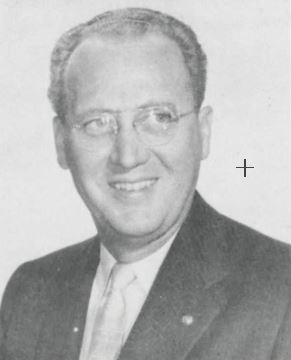 The Bovee University Center was dedicated on September 15, 1984 honoring the chief financial officer of the University from 1956 to 1970. Norvall C. Bovee was a member of Central's administration for thirty years,
starting in 1940. He came to Central from Eastern Michigan College and served as the assistant director of Keeler Union, then served as its director beginning in 1941. In 1946, he was appointed Business Manager.
He spent the years 1948 to 1956 as the Controller, then became the University's first Vice President of Business and Finance in 1956, a position he held until his retirement in 1970.
The Bovee University Center was dedicated on September 15, 1984 honoring the chief financial officer of the University from 1956 to 1970. Norvall C. Bovee was a member of Central's administration for thirty years,
starting in 1940. He came to Central from Eastern Michigan College and served as the assistant director of Keeler Union, then served as its director beginning in 1941. In 1946, he was appointed Business Manager.
He spent the years 1948 to 1956 as the Controller, then became the University's first Vice President of Business and Finance in 1956, a position he held until his retirement in 1970.
Warriner Hall
Opened: 1927
Name Change: 1939
Cost: $750,000
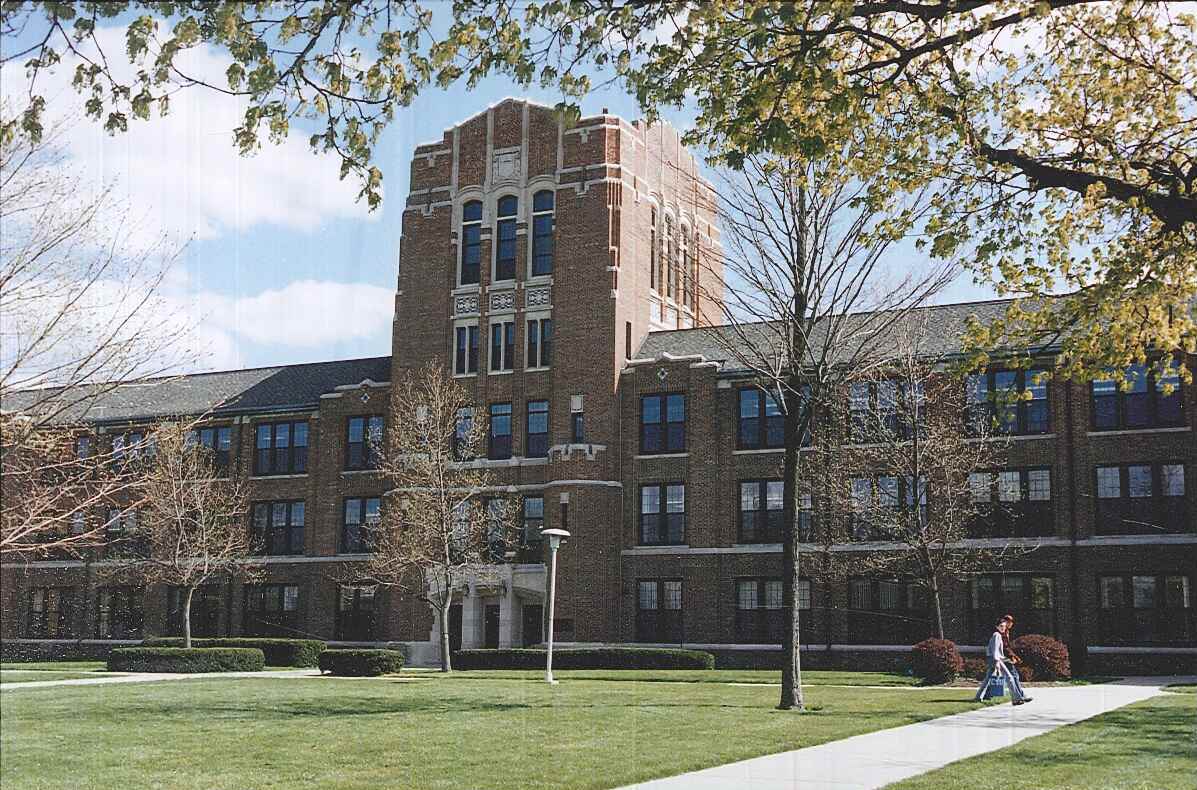 Following the fire in December 1925 that destroyed the Old Main building, the state legislature approved $750,000 for the construction of a new administration building for Central's campus. The building was designed
by architect AL Trout of the Detroit architectural firm Malcolmson and Higinbotham and the construction project was underway by October 1926. The project involved the excavation of 9,000 cubic feet of earth. Some
bricks from the old building were salvaged for use in the new building; in total, over 2 million bricks were used in the construction of the new building. BB Struble was in charge of the construction, which employed
over one hundred men at its peak.
Following the fire in December 1925 that destroyed the Old Main building, the state legislature approved $750,000 for the construction of a new administration building for Central's campus. The building was designed
by architect AL Trout of the Detroit architectural firm Malcolmson and Higinbotham and the construction project was underway by October 1926. The project involved the excavation of 9,000 cubic feet of earth. Some
bricks from the old building were salvaged for use in the new building; in total, over 2 million bricks were used in the construction of the new building. BB Struble was in charge of the construction, which employed
over one hundred men at its peak.
Construction proceeded rapidly, and the foundation was fully laid by the end of 1926. In June 1927, the entire campus was on hand for the laying of the cornerstone by Trout and Struble (architect and contractor, respectively). Also in attendance was President EC Warriner, who gave an address, and Rev. CB Hawkins, pastor of the First Presbyterian Church, who gave an invocation. The US Indian School Band also played for the audience. In April 1928, 1,400 students and visitors attended the first assembly in the new auditorium, and the building was officially dedicated in June 1928.
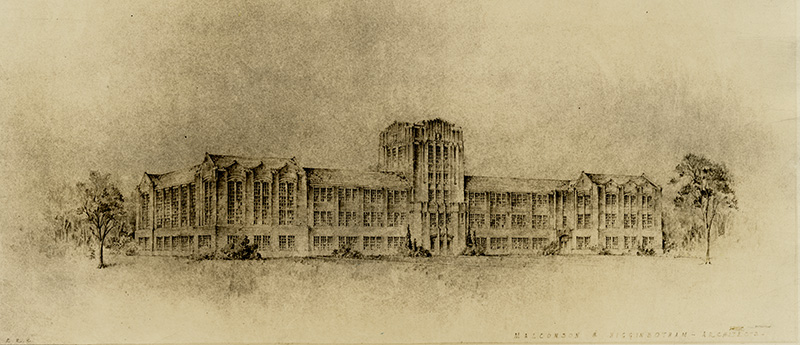
The new administration building featured several important additions to campus. The central tower section, which was designed to house the music department, was the most striking architectural feature of the building. The 1,600 seat auditorium had a stage 30 feet deep with a 40-foot proscenium opening. The library, measuring 50 x 100 feet and two stories high, held 10,000 volumes and had space enough for 250 students. Registrar CC Barnes designed his own suite of offices on the first floor to maximize efficiency and convenience. $60,000 was spent on circulation equipment to maintain the air quality within the building. There was also a women's commons on the third floor and a men's union on the second floor.
The building remained the "new administration building" for a decade, but by 1938 students and faculty began requesting a change. Because President EC Warriner had been so influential in both the construction of a new
administration building as well as the general growth of the College, his name was selected for the building. In 1939, the State Board of Education officially changed the name to Warriner Hall, which it retains
today. A $1 million renovation in 1975 involved the installation of an elevator and air conditioning equipment, as well as improvements to ventilation and heating systems.
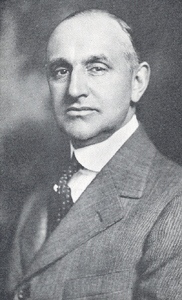 The building was named for the president of Central from 1918 to 1939. Eugene C. Warriner was born in the village of Earlville in Dixon County, Illinois, in 1866. Graduating from high school in 1884, he taught in a
rural school for three years before deciding to continue his own education by entering the University of Michigan. He graduated with honors from that institution in 1891, and then enrolled in the Boston School of
Theology, believing that he would enjoy a career in the Methodist ministry. However, he changed his mind after a few months and returned to U of M to continue his studies of Latin and Greek. Soon, he received an
appointment as principal of the Battle Creek High School, where he remained for three years before moving to East Saginaw to accept the principalship of the high school there. Four years later he was promoted to
Superintendent of Schools. When he became president of Central State Normal School in 1918, he had completed twenty-two years of service in Saginaw. Warriner served as president of Central for just over twenty years,
during which time the College enrollment grew from fewer than five hundred students to nearly one thousand. Warriner led the College through the trying years of World War I, the 1918 flu epidemic, the Great Depression,
and two disastrous fires. He retired in June of 1939.
The building was named for the president of Central from 1918 to 1939. Eugene C. Warriner was born in the village of Earlville in Dixon County, Illinois, in 1866. Graduating from high school in 1884, he taught in a
rural school for three years before deciding to continue his own education by entering the University of Michigan. He graduated with honors from that institution in 1891, and then enrolled in the Boston School of
Theology, believing that he would enjoy a career in the Methodist ministry. However, he changed his mind after a few months and returned to U of M to continue his studies of Latin and Greek. Soon, he received an
appointment as principal of the Battle Creek High School, where he remained for three years before moving to East Saginaw to accept the principalship of the high school there. Four years later he was promoted to
Superintendent of Schools. When he became president of Central State Normal School in 1918, he had completed twenty-two years of service in Saginaw. Warriner served as president of Central for just over twenty years,
during which time the College enrollment grew from fewer than five hundred students to nearly one thousand. Warriner led the College through the trying years of World War I, the 1918 flu epidemic, the Great Depression,
and two disastrous fires. He retired in June of 1939.
West Hall
Opened: 1942
Renovated: 1990
Renovation Cost: $360,000
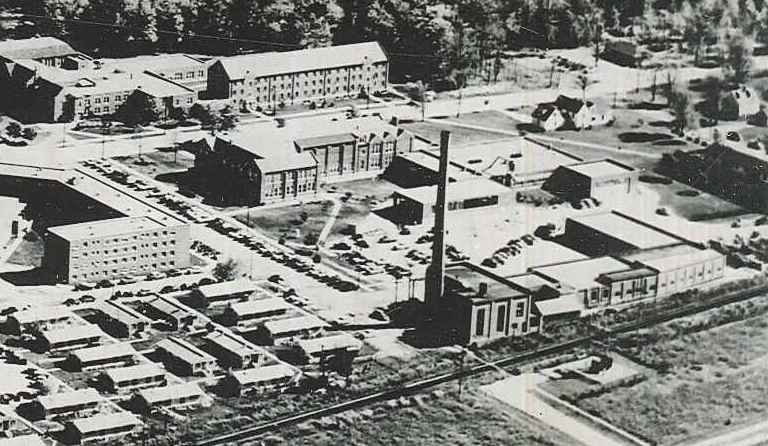 West Hall, home of CMU's University Communications, is all that remains of a larger complex that once housed the campus heating plant. The heating plant was built between the summer of 1941 and the fall of 1942 to replace
the original heating plant located in the center of campus. It was designed by Roger Allen of Grand Rapids and built by the Miller-Davis Company of Kalamazoo on the site of the girls' athletic fields on the west
side of campus near the railroad tracks. The heating plant was designed with limited office space, and Facilities Management occupied part of the building since the 1940s. When the new Central Energy Facility was
constructed in the early 1960s, the boilers were removed from the old heating plant, and the building was remodeled into more office space, maintenance garages, and storage for Facilities Management. The complex,
which consisted of the large building that had been the physical plant as well as a collection of smaller garages and sheds (the "sheepsheds" left over from a postwar housing community on the site), remained the
home of Facilities Management and the Motor Pool until the 1980s.
West Hall, home of CMU's University Communications, is all that remains of a larger complex that once housed the campus heating plant. The heating plant was built between the summer of 1941 and the fall of 1942 to replace
the original heating plant located in the center of campus. It was designed by Roger Allen of Grand Rapids and built by the Miller-Davis Company of Kalamazoo on the site of the girls' athletic fields on the west
side of campus near the railroad tracks. The heating plant was designed with limited office space, and Facilities Management occupied part of the building since the 1940s. When the new Central Energy Facility was
constructed in the early 1960s, the boilers were removed from the old heating plant, and the building was remodeled into more office space, maintenance garages, and storage for Facilities Management. The complex,
which consisted of the large building that had been the physical plant as well as a collection of smaller garages and sheds (the "sheepsheds" left over from a postwar housing community on the site), remained the
home of Facilities Management and the Motor Pool until the 1980s.
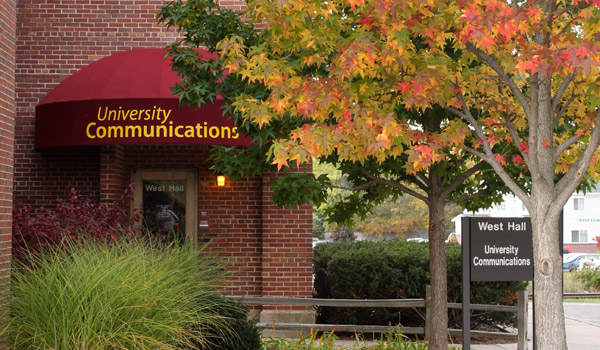 With the completion of a new Combined Services Building in 1990, Facilities Management was relocated to the east side of campus and the old power house building was left vacant. The University demolished most of the
building at a cost of $340,000, leaving only the northern end of the structure standing. This building, which became known as West Hall, became the new home of CMU Media Relations. Media Relations, now University
Communications, had been housed in 114 Rowe Hall, but that office complex had become too cramped for the department's purposes. Although University officials discussed moving University Communications into the space
formerly occupied by the bowling alley in the University Center, it was ultimately decided to utilize the newly vacated space in West Hall. Renovation of the office complex cost $20,000 and was complete by December
1990. The new office space provided more room for University Communications.
With the completion of a new Combined Services Building in 1990, Facilities Management was relocated to the east side of campus and the old power house building was left vacant. The University demolished most of the
building at a cost of $340,000, leaving only the northern end of the structure standing. This building, which became known as West Hall, became the new home of CMU Media Relations. Media Relations, now University
Communications, had been housed in 114 Rowe Hall, but that office complex had become too cramped for the department's purposes. Although University officials discussed moving University Communications into the space
formerly occupied by the bowling alley in the University Center, it was ultimately decided to utilize the newly vacated space in West Hall. Renovation of the office complex cost $20,000 and was complete by December
1990. The new office space provided more room for University Communications.
Wheeler Hall
Opened: Fall 1970
Cost: $8.6 Million (entire Towers Complex)
Capacity: 416
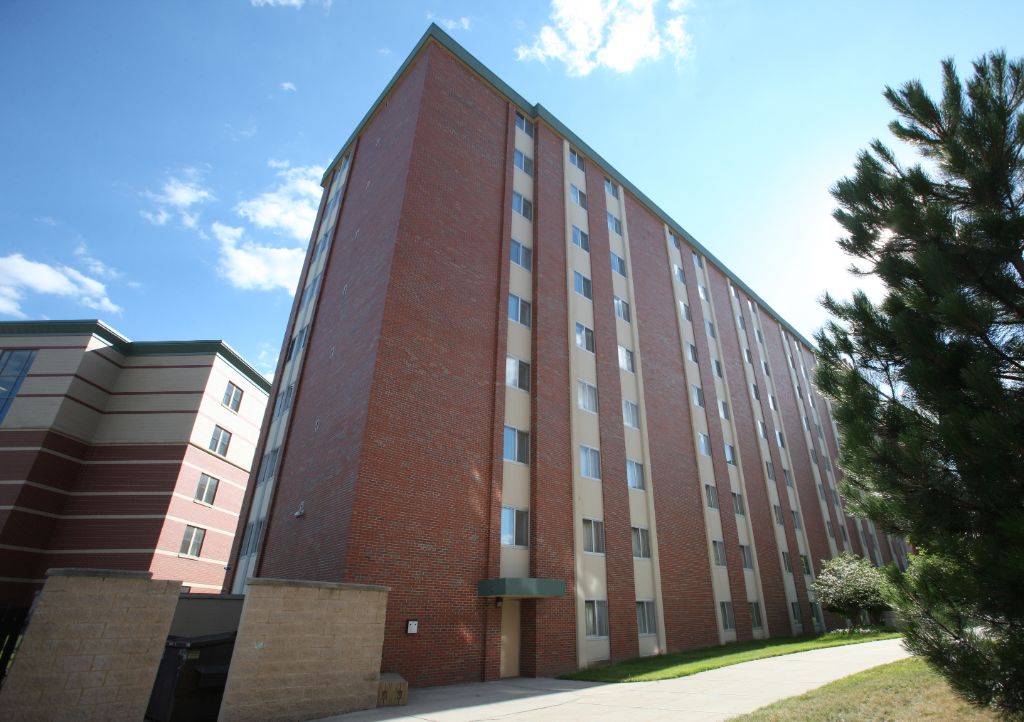 Wheeler Hall, one of the four original towers of the Towers complex, opened in the fall of 1970 as a men's residence hall with a capacity of 416. It was co-ed from 1974 to 1975, then exclusively for women in 1975. It
is currently co-ed, as are all residence halls at CMU.
Wheeler Hall, one of the four original towers of the Towers complex, opened in the fall of 1970 as a men's residence hall with a capacity of 416. It was co-ed from 1974 to 1975, then exclusively for women in 1975. It
is currently co-ed, as are all residence halls at CMU.
The hall was named for the head of the Department of Conservation and Agriculture from 1947 to 1960. George Wheeler was born on June 28, 1891 in Isabella County. He received his Bachelor of Science in 1914 from the Michigan Agriculture College, and came to Central that same year. He taught at Central for 38 years.
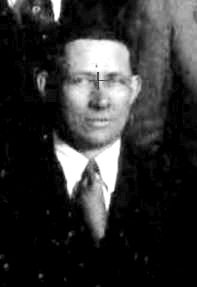 In addition to teaching, Wheeler kept busy with a variety of personal and civic activities. He received his MA in 1930 from the Teacher's College of Columbia University. He was the Vice President of the Board of Directors
of Isabella County State Bank, director of the Central Michigan Community Hospital, and Lieutenant Governor of the state Kiwanis Club. He received an Honorary Doctor of Laws from Eastern Michigan University in 1968.
That same year, he was named Outstanding Citizen of the Year. He also received the 50th Anniversary Medal from Richard Nixon for his contributions to Michigan agriculture. His wife Elizabeth taught at Central from
1957 to 1970. They had two sons. Wheeler died on August 11, 1968.
In addition to teaching, Wheeler kept busy with a variety of personal and civic activities. He received his MA in 1930 from the Teacher's College of Columbia University. He was the Vice President of the Board of Directors
of Isabella County State Bank, director of the Central Michigan Community Hospital, and Lieutenant Governor of the state Kiwanis Club. He received an Honorary Doctor of Laws from Eastern Michigan University in 1968.
That same year, he was named Outstanding Citizen of the Year. He also received the 50th Anniversary Medal from Richard Nixon for his contributions to Michigan agriculture. His wife Elizabeth taught at Central from
1957 to 1970. They had two sons. Wheeler died on August 11, 1968.
Wightman Hall
Opened: 1948
Cost: $800,000
Renovated: 1989
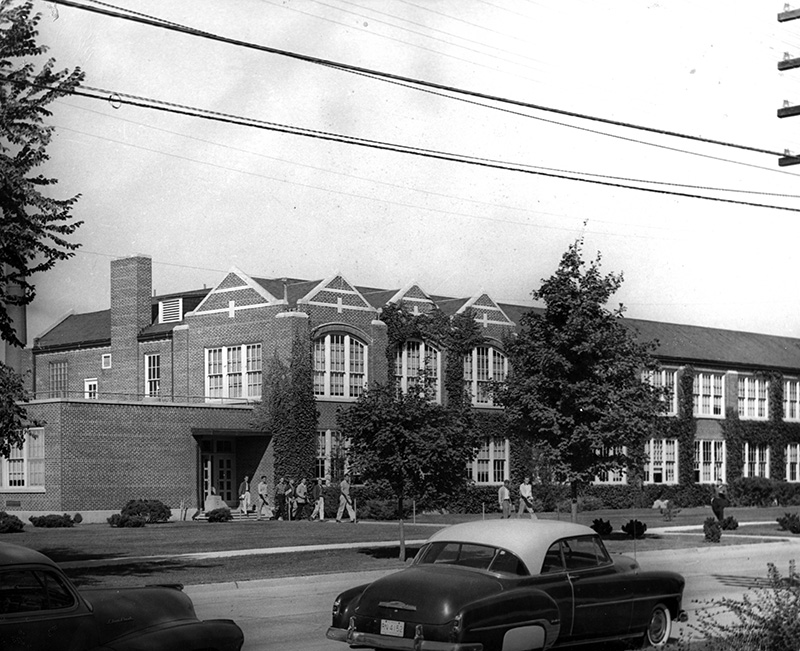 Wightman Hall began opened as the Arts and Crafts Building in 1948. In June 1941, College officials approved plans for a new Arts and Crafts Building to replace a number of temporary facilities built on campus over the
previous half-century. Planned for the area on the corner of Washington and what was then Hopkins Street, the land on which the Arts and Crafts Building would be constructed was in fact the old athletic field west of
Keeler Union and the main campus. The area had been the home of Central athletics in the 1920s and was still home to clay tennis courts and girls' sports, especially field hockey. Although plans had been approved, the
United States' entry into the Second World War would delay the construction of the building for a number of years.
Wightman Hall began opened as the Arts and Crafts Building in 1948. In June 1941, College officials approved plans for a new Arts and Crafts Building to replace a number of temporary facilities built on campus over the
previous half-century. Planned for the area on the corner of Washington and what was then Hopkins Street, the land on which the Arts and Crafts Building would be constructed was in fact the old athletic field west of
Keeler Union and the main campus. The area had been the home of Central athletics in the 1920s and was still home to clay tennis courts and girls' sports, especially field hockey. Although plans had been approved, the
United States' entry into the Second World War would delay the construction of the building for a number of years.
By 1944, the State of Michigan agreed to grant Central $1,315,000 for postwar improvements, which would include the construction of a new Arts and Crafts Building. By 1945, a scale model of the project was on display in the Industrial Arts Department. The new building was designed by architect Roger Allen of Grand Rapids and built by the Henry C. Weber Construction Company of Bay City. The official groundbreaking ceremony was held on December 19, 1946, and was attended by College president Charles Anspach, the director of the State Building Construction division, and the Secretary of State A.N. Langius. By the spring of 1947, the foundation had been laid. Although the proposed cost of the project was $500,000, the construction eventually cost over $800,000. The remaining funds had to be taken from those reserved for the construction of a new gymnasium, which was postponed as a result.
The new Arts and Crafts Building opened on September 23, 1948. The Art Department occupied the entire second floor, which featured a ceramics laboratory, a metal laboratory, an art gallery, and a weaving room. The first art exhibit opened in October of that year and featured the work of the Saginaw Art Guild and judges from the faculty of Architecture and Design at the University of Michigan. On the first floor, the Home Economics Department had access to a social center, food laboratory, clothing and textile laboratories, and a home management center.
The south wing of the building housed the Industrial Arts Department, replacing the original Industrial Arts building that had been destroyed in a fire in 1933. This section of the building featured a drafting room, woodworking and metalworking shops, and a room for general shop classes. There was also an auto- and aero-mechanics shop equipped with hangar doors on the south end of the complex. Finally, the building featured a boy's locker room with lockers, washstands, shower, and toilets so that students could easily change clothing while working in the shops.
Wightman Hall housed the Industrial Arts Department until the late 1980s, when Central Michigan University opened its Industrial and Engineering Technology Building in 1989. At that time, Wightman was scheduled to be repurposed
to become the new home of the Department of Art as well as the Department of Home Economics, Family Life, and Consumer Education. The University announced the $3.15 million Wightman Renovation Project designed by architects
at Greiner Incorporated of Grand Rapids. The construction contract was awarded to Midland-based Helger Construction Company. The renovation included three small additions to the building totaling 11,000 square feet.
Besides the new space, existing space was extensively remodeled and the building was brought up to Americans with Disabilities Act standards. The west side of the building, which housed University Printing Services,
was also remodeled. Finally, Wightman Hall was connected to the North Art Studio by a walkway.
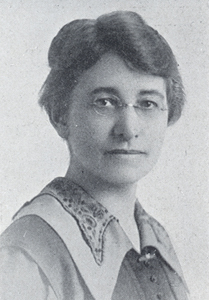 In 1950, President Charles L. Anspach announced that the Arts and Crafts Building was being renamed Elizabeth R. Wightman Hall. Wightman, one of the original faculty at Central, did her earliest teaching in the public school
system of Mount Pleasant. She later studied at the Michigan State Normal College (now Eastern Michigan University) then returned to Mount Pleasant to teach geography and art at Central Normal. In 1900, she was promoted
to the rank of professor and also made head of the Department of Art. She also served as the patroness of Pi Kappa Sigma and as the faculty advisor to the Art Club. She retired in 1937, a much beloved member of Central's
faculty. She died in the spring of 1940. Her obituary in the Mount Pleasant Times said that her friends and neighbors were shocked to learn that she had passed away in a Detroit hospital after just a few days of illness.
In 1950, President Charles L. Anspach announced that the Arts and Crafts Building was being renamed Elizabeth R. Wightman Hall. Wightman, one of the original faculty at Central, did her earliest teaching in the public school
system of Mount Pleasant. She later studied at the Michigan State Normal College (now Eastern Michigan University) then returned to Mount Pleasant to teach geography and art at Central Normal. In 1900, she was promoted
to the rank of professor and also made head of the Department of Art. She also served as the patroness of Pi Kappa Sigma and as the faculty advisor to the Art Club. She retired in 1937, a much beloved member of Central's
faculty. She died in the spring of 1940. Her obituary in the Mount Pleasant Times said that her friends and neighbors were shocked to learn that she had passed away in a Detroit hospital after just a few days of illness.
Woldt Hall
Opened: Fall 1964
Cost: $1.4 Million
Capacity: 344
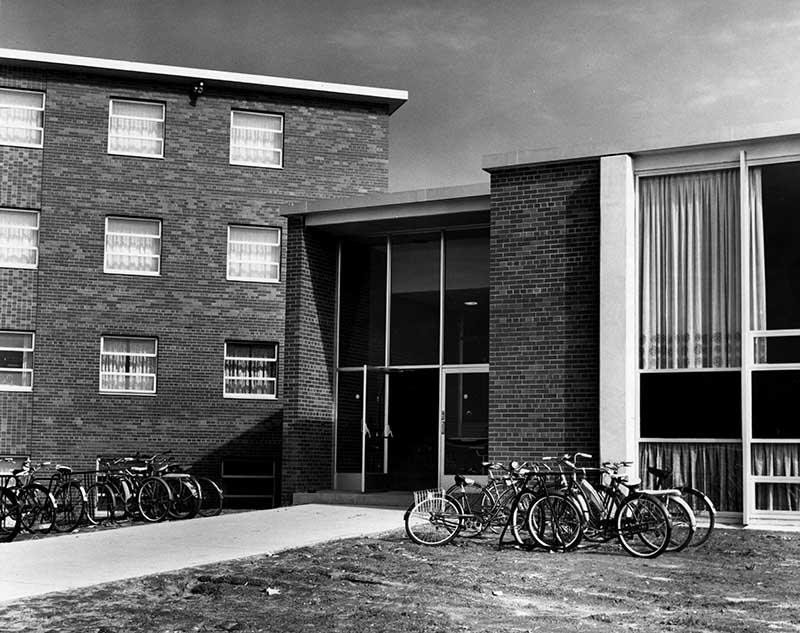 Woldt Hall was the first residence hall built in what would become the southeast quadrangle. Woldt, along with Saxe, Emmons, and Herrig Halls, were all constructed during a period of campus expansion that included four new
quads in a fifteen year period. Woldt Hall was designed by architects from Roger Allen and Associates of Grand Rapids. The $1.4 million building, designed to house 344 students in 86 suites, utilized the floor plan from
Tate Hall (this floor plan was used in all dormitory buildings until the construction of the Towers complex in the late 1960s).
Woldt Hall was the first residence hall built in what would become the southeast quadrangle. Woldt, along with Saxe, Emmons, and Herrig Halls, were all constructed during a period of campus expansion that included four new
quads in a fifteen year period. Woldt Hall was designed by architects from Roger Allen and Associates of Grand Rapids. The $1.4 million building, designed to house 344 students in 86 suites, utilized the floor plan from
Tate Hall (this floor plan was used in all dormitory buildings until the construction of the Towers complex in the late 1960s).
Woldt Hall opened for occupancy in the fall of 1964. It was dedicated on May 9, 1965, in a joint ceremony that also featured the dedication of Woldt's sister hall, Emmons. When it opened, the building included several innovative features, some of which are still extant. The basement of the Woldt-Emmons complex, beneath the dining room where Computer Services is now housed, was a new student union, complete with a cafeteria, a bookstore, and recreation rooms. Woldt and Emmons were also unique in that they shared a common lobby. The building also housed the south art studio at one time.
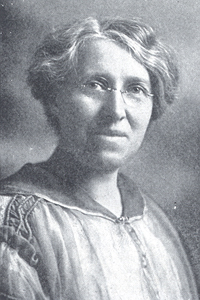 Woldt hall was named for Mae K. Woldt, the head of the Biology Department from 1906 to 1935. Mae K. Woldt was born in Urbana, Illinois on March 2, 1874. She received her BS from the University of Michigan in 1897 and her MS
from the University of Chicago in 1904. After completing her undergraduate work at Michigan, Woldt taught at Negaunee High School from 1898 to 1899. She did graduate work at several universities, including the University
of Heidelberg in Germany, Columbia University, the University of Washington, and Rocky Mountain Biological Station in Colorado. She came to Central in 1899, becoming the head of the Biology department in 1906. She remained
head until her death on October 13, 1935.
Woldt hall was named for Mae K. Woldt, the head of the Biology Department from 1906 to 1935. Mae K. Woldt was born in Urbana, Illinois on March 2, 1874. She received her BS from the University of Michigan in 1897 and her MS
from the University of Chicago in 1904. After completing her undergraduate work at Michigan, Woldt taught at Negaunee High School from 1898 to 1899. She did graduate work at several universities, including the University
of Heidelberg in Germany, Columbia University, the University of Washington, and Rocky Mountain Biological Station in Colorado. She came to Central in 1899, becoming the head of the Biology department in 1906. She remained
head until her death on October 13, 1935.